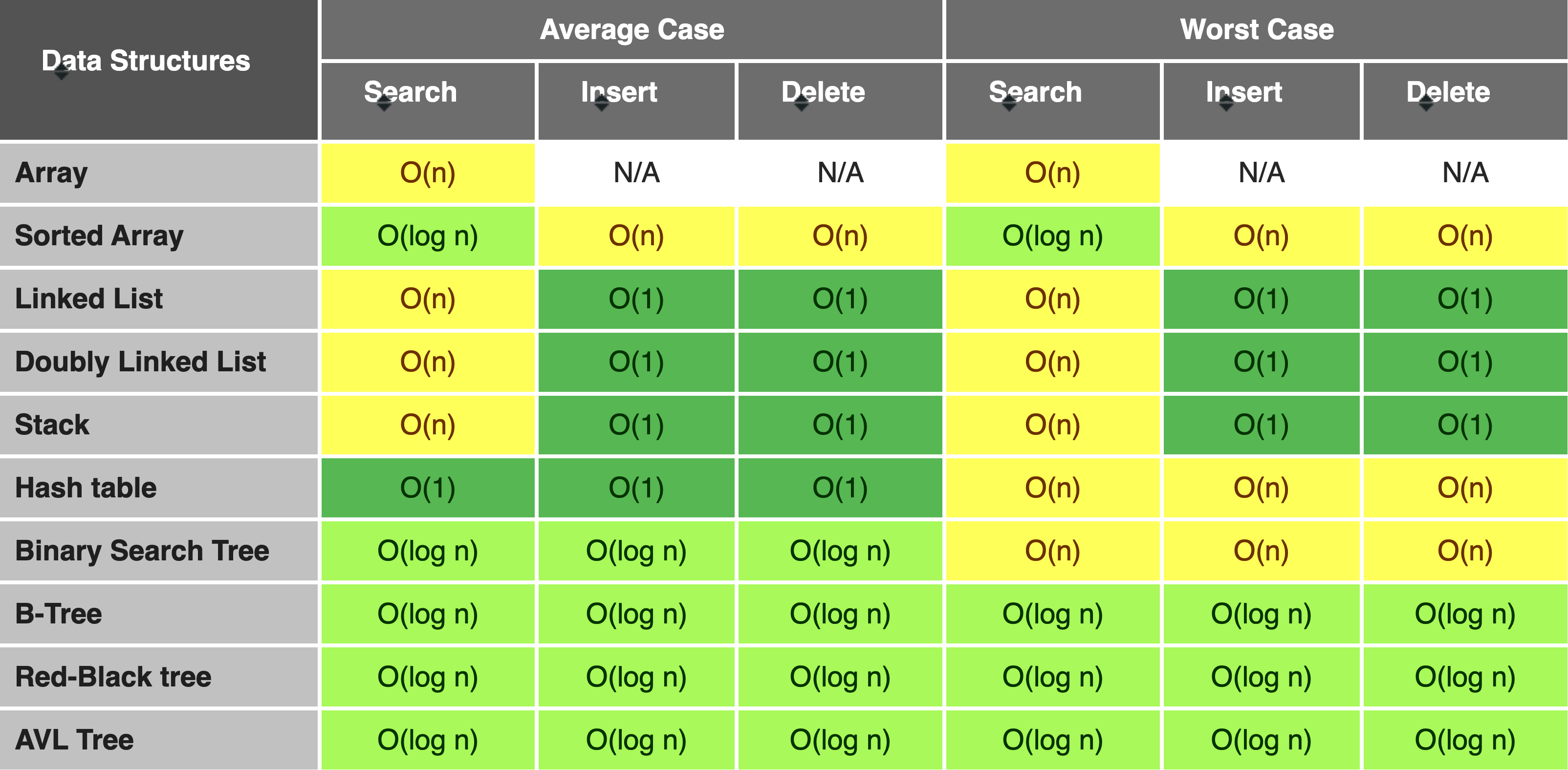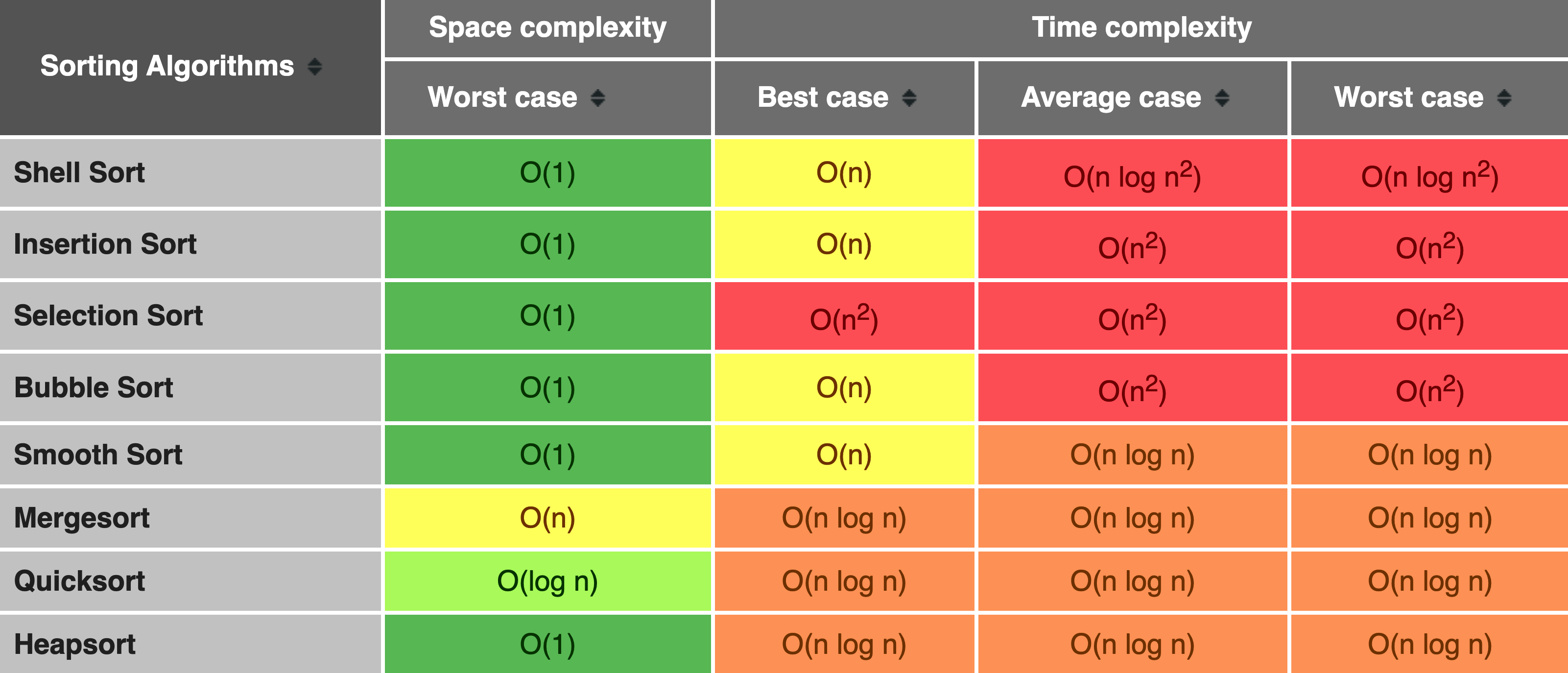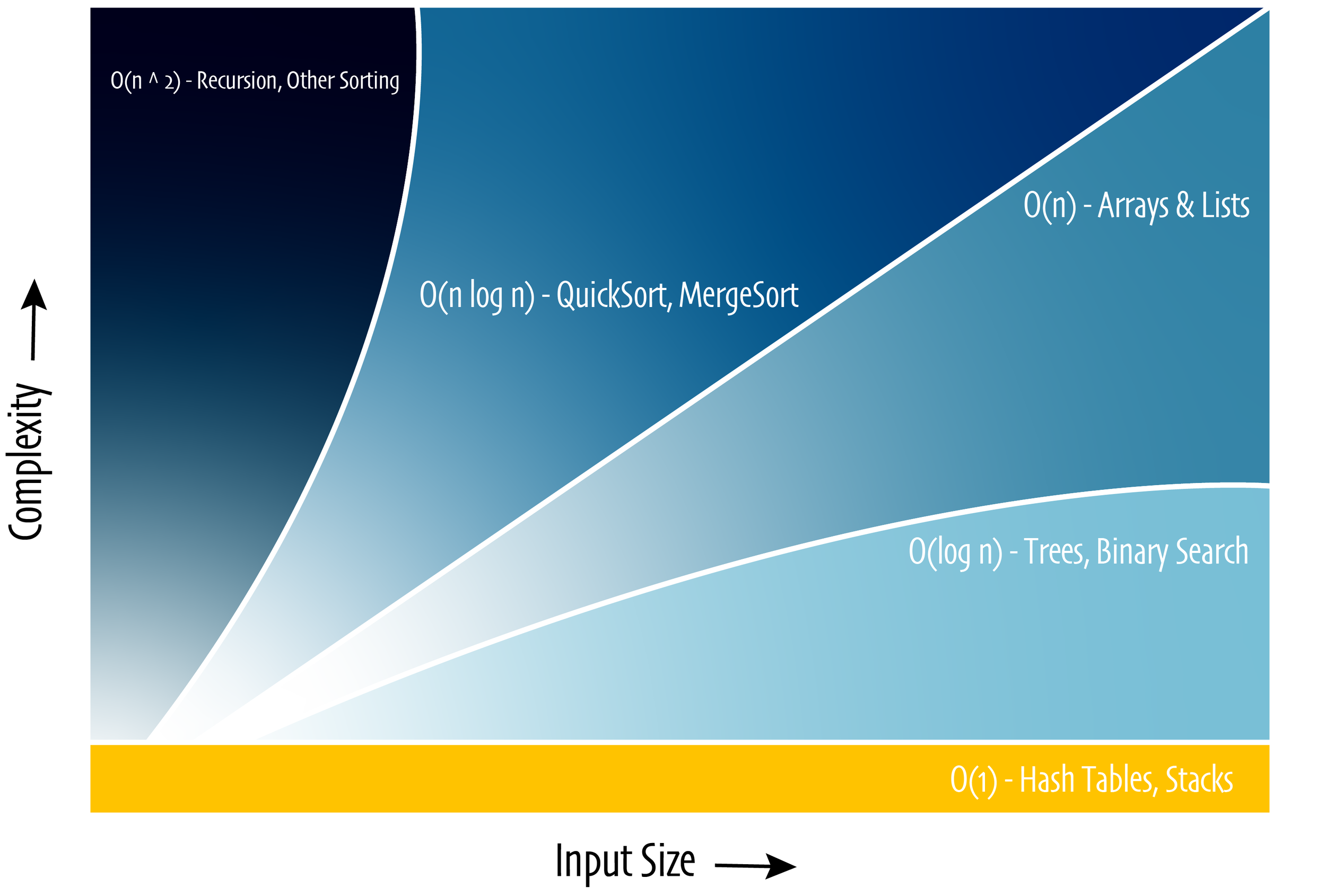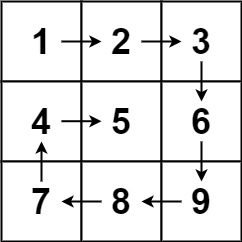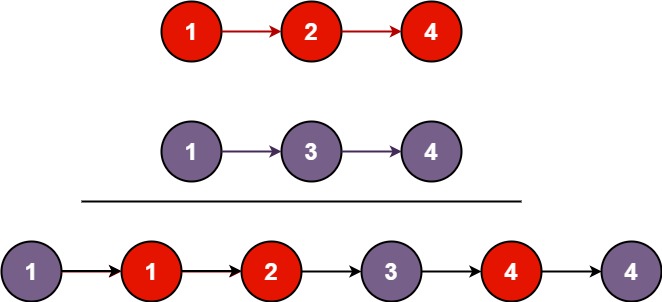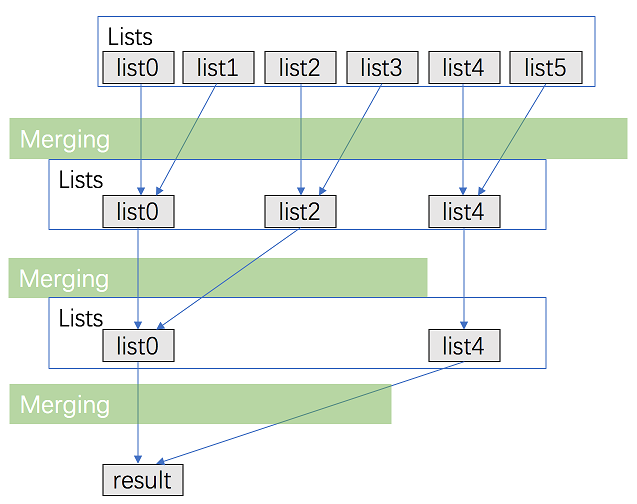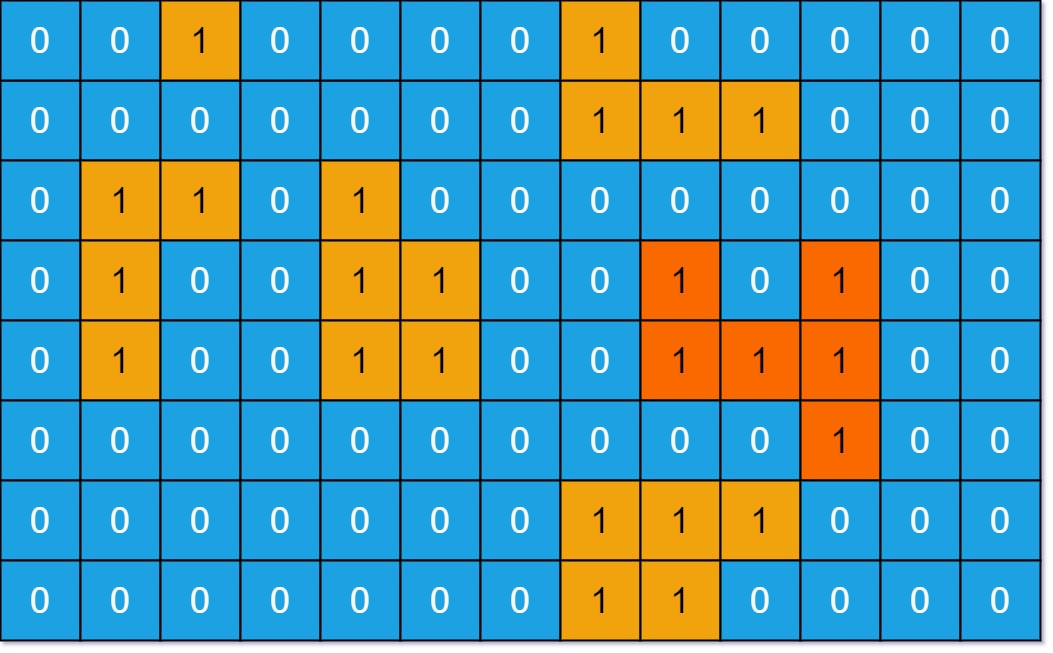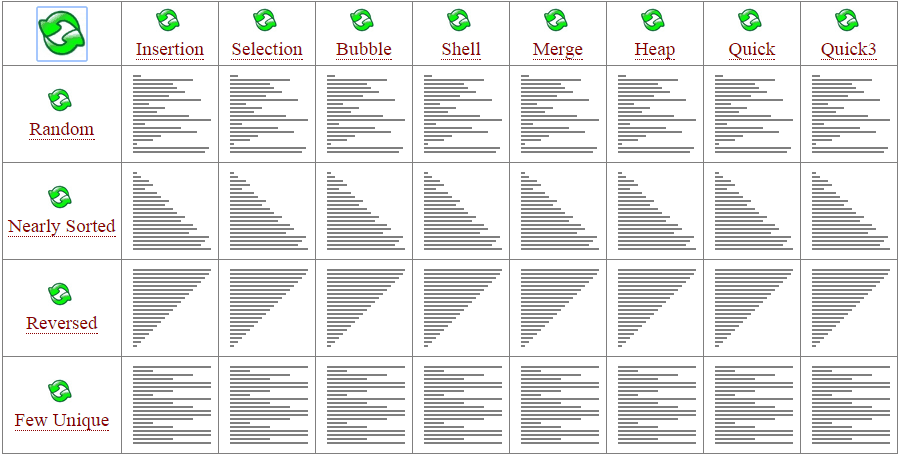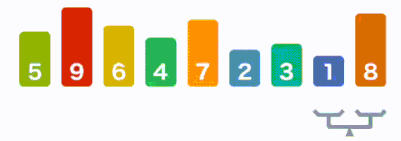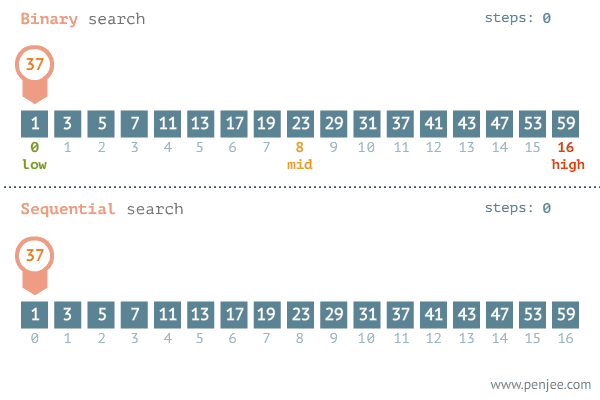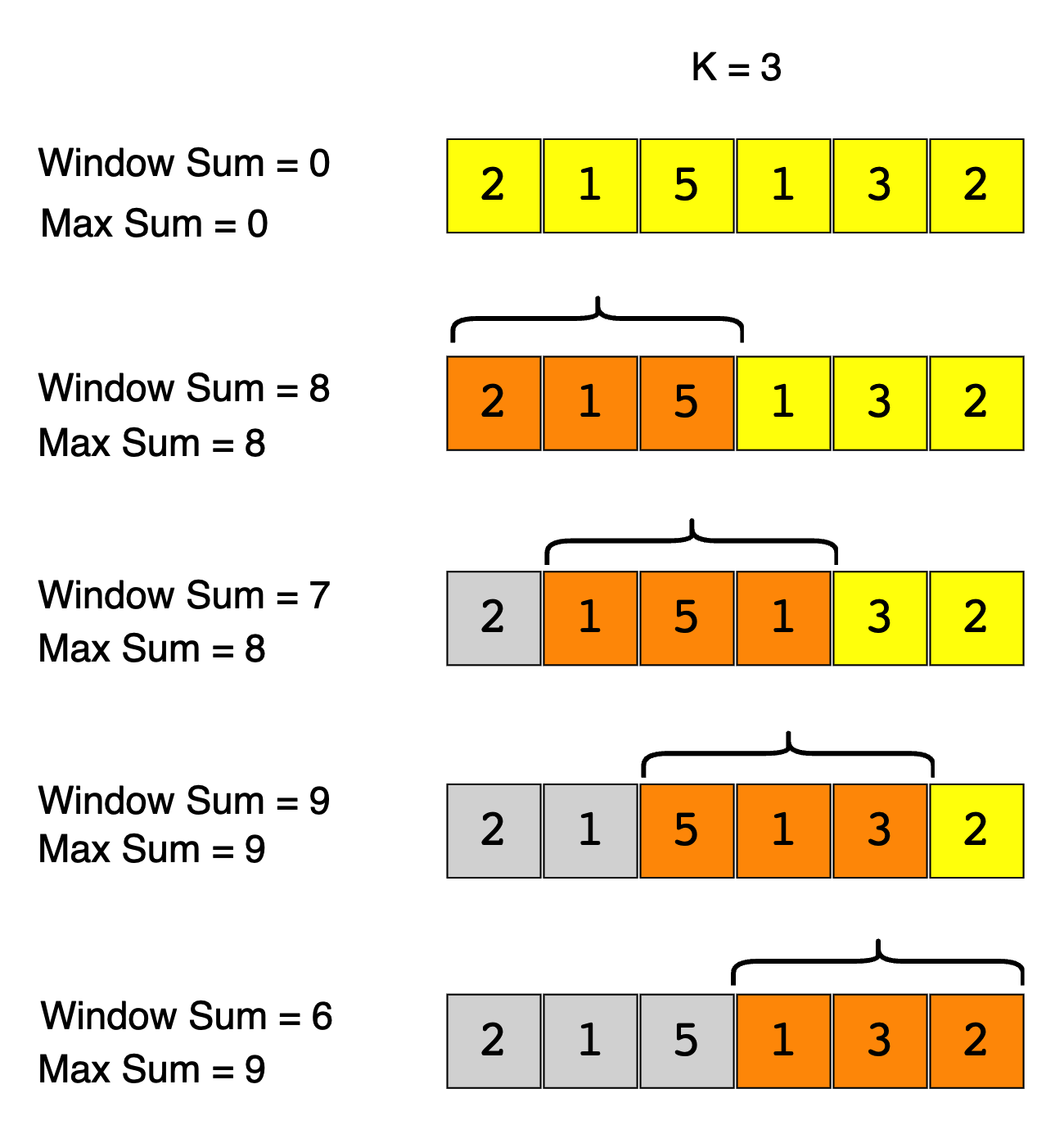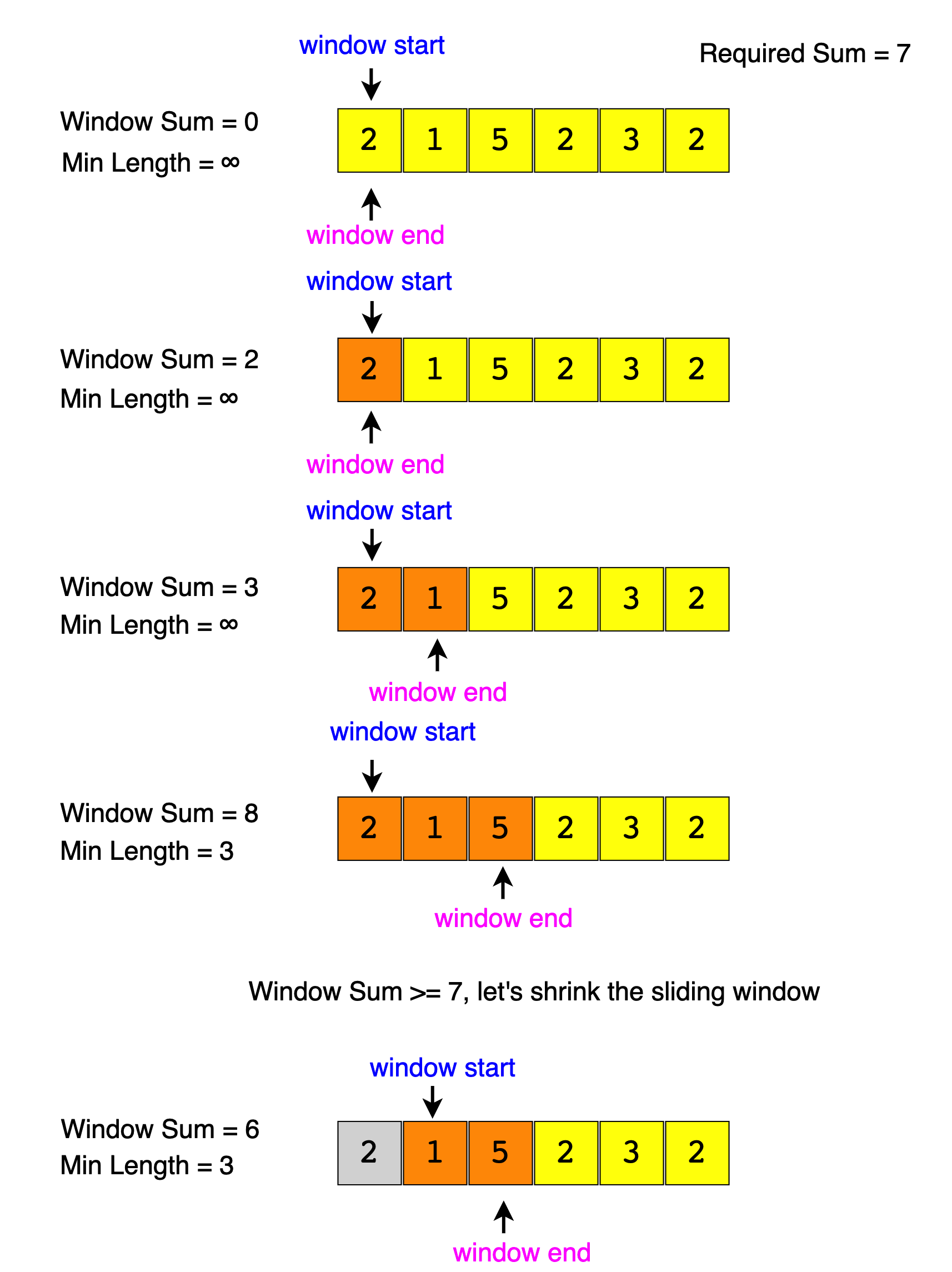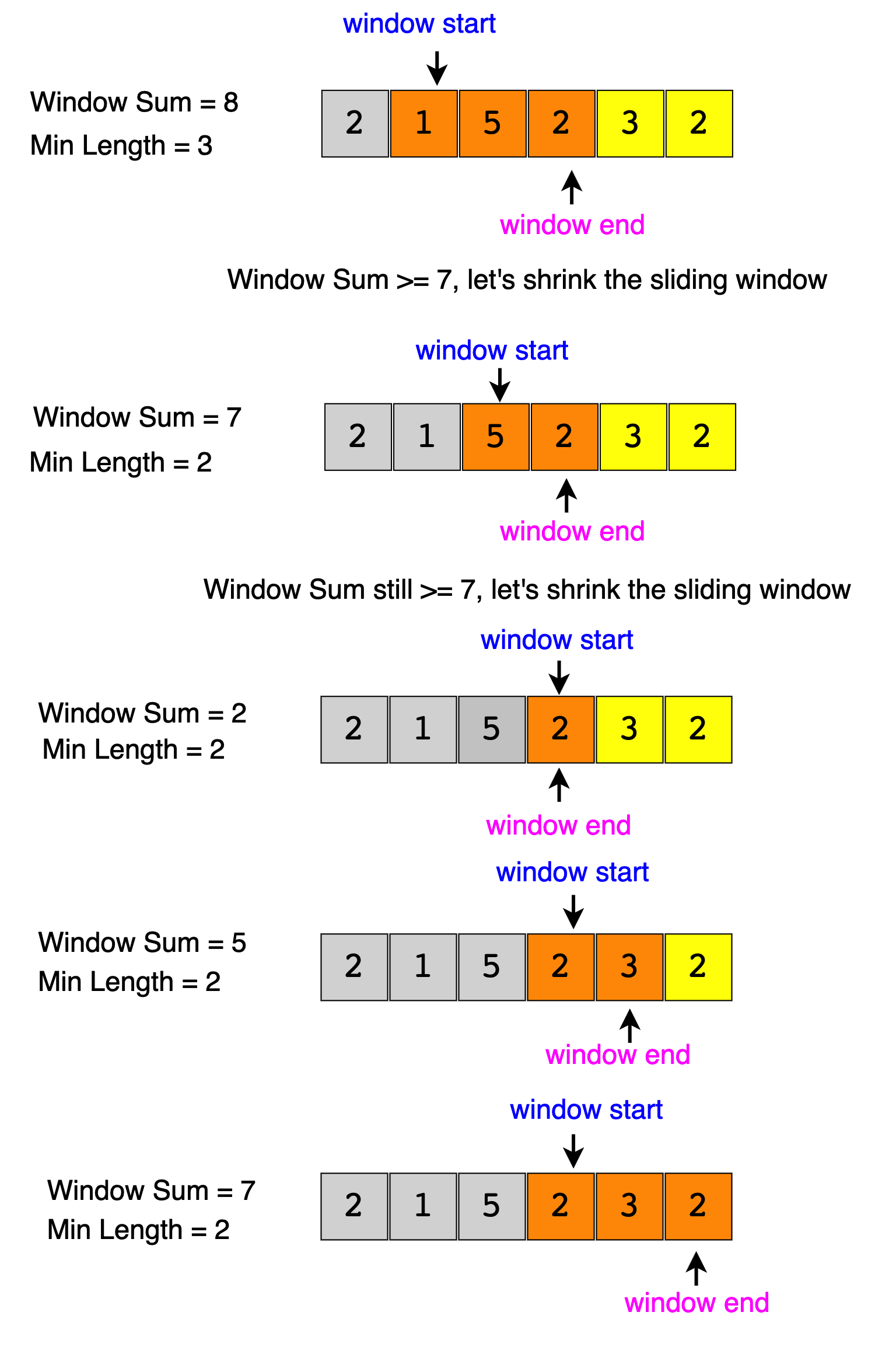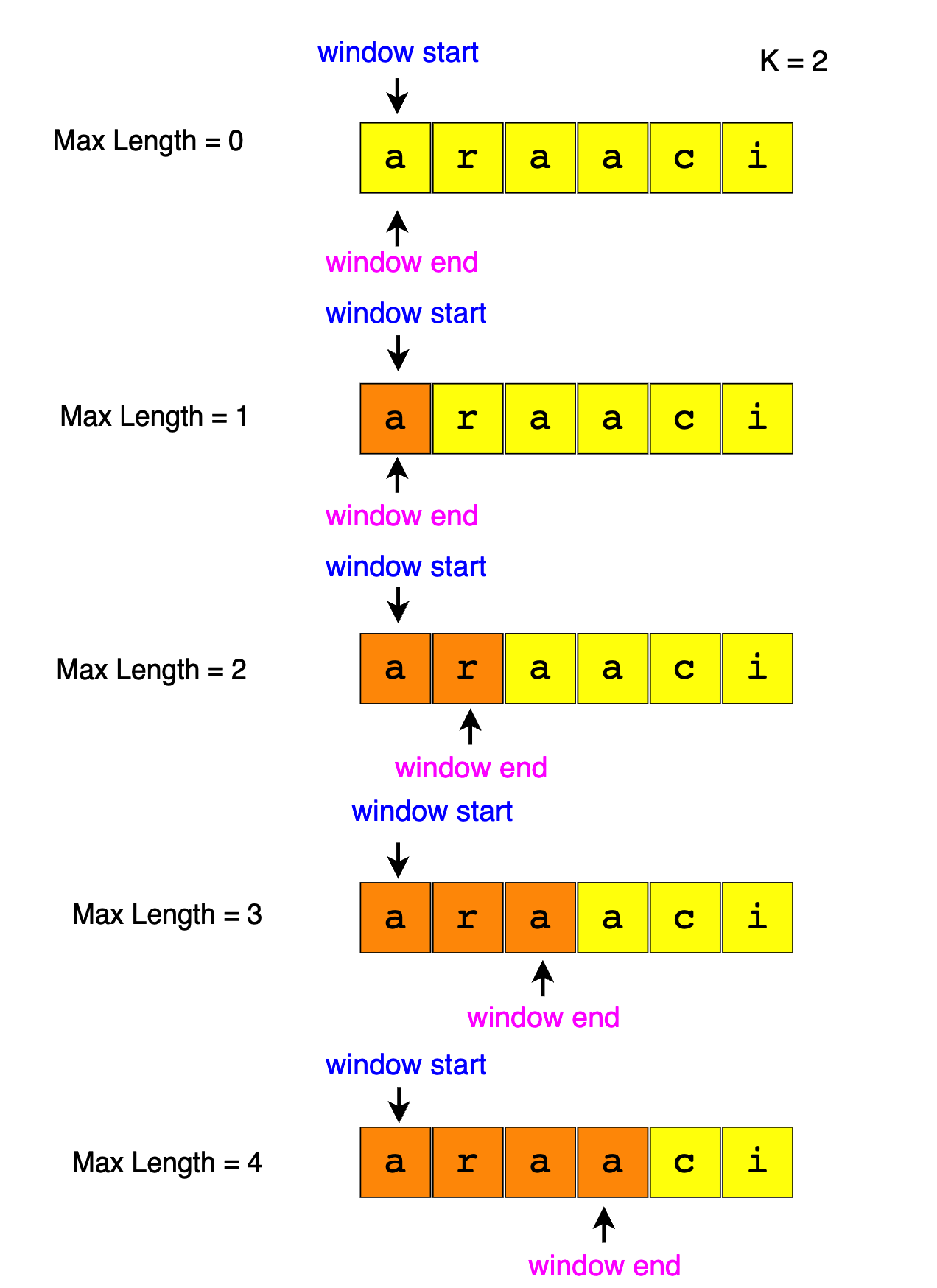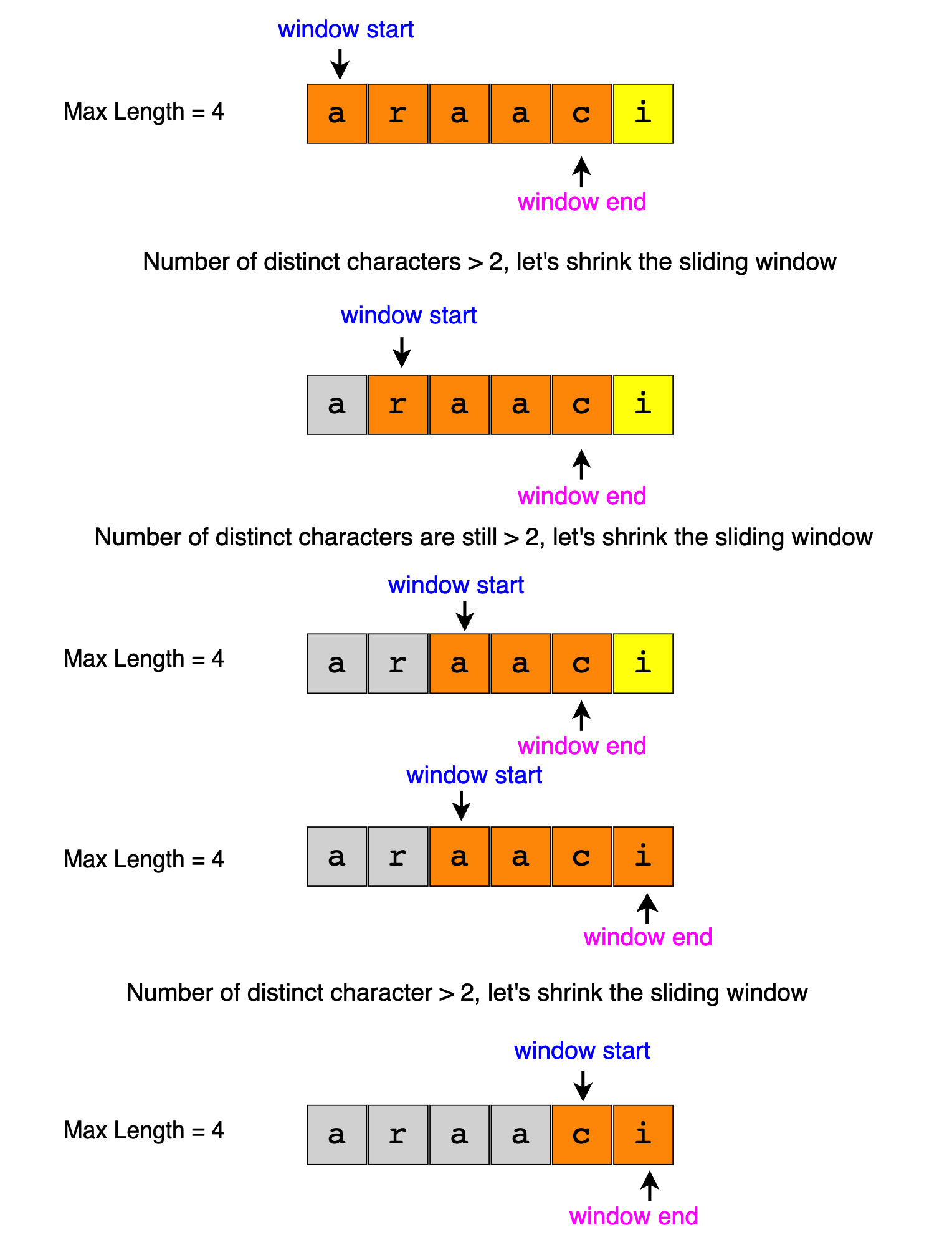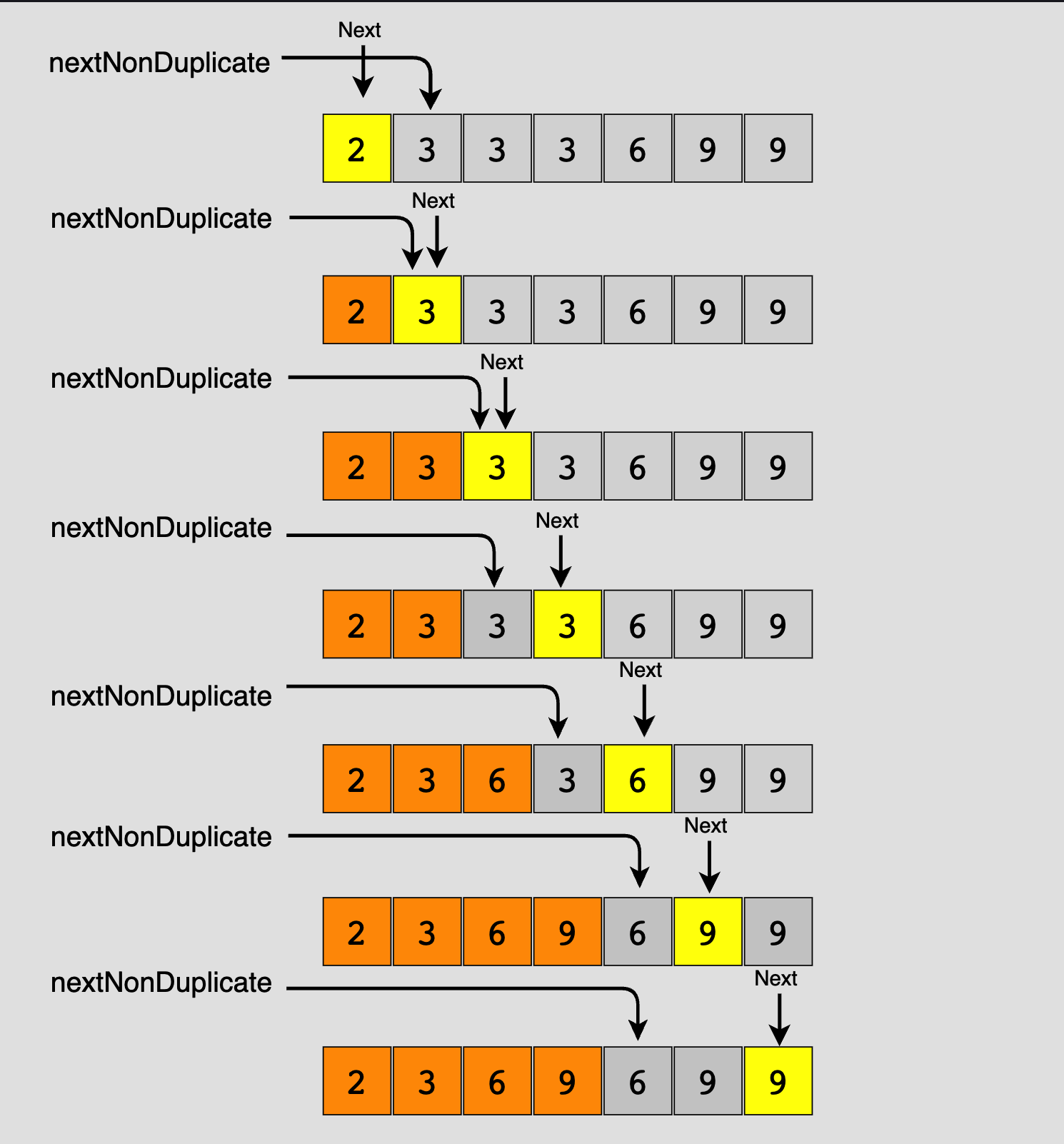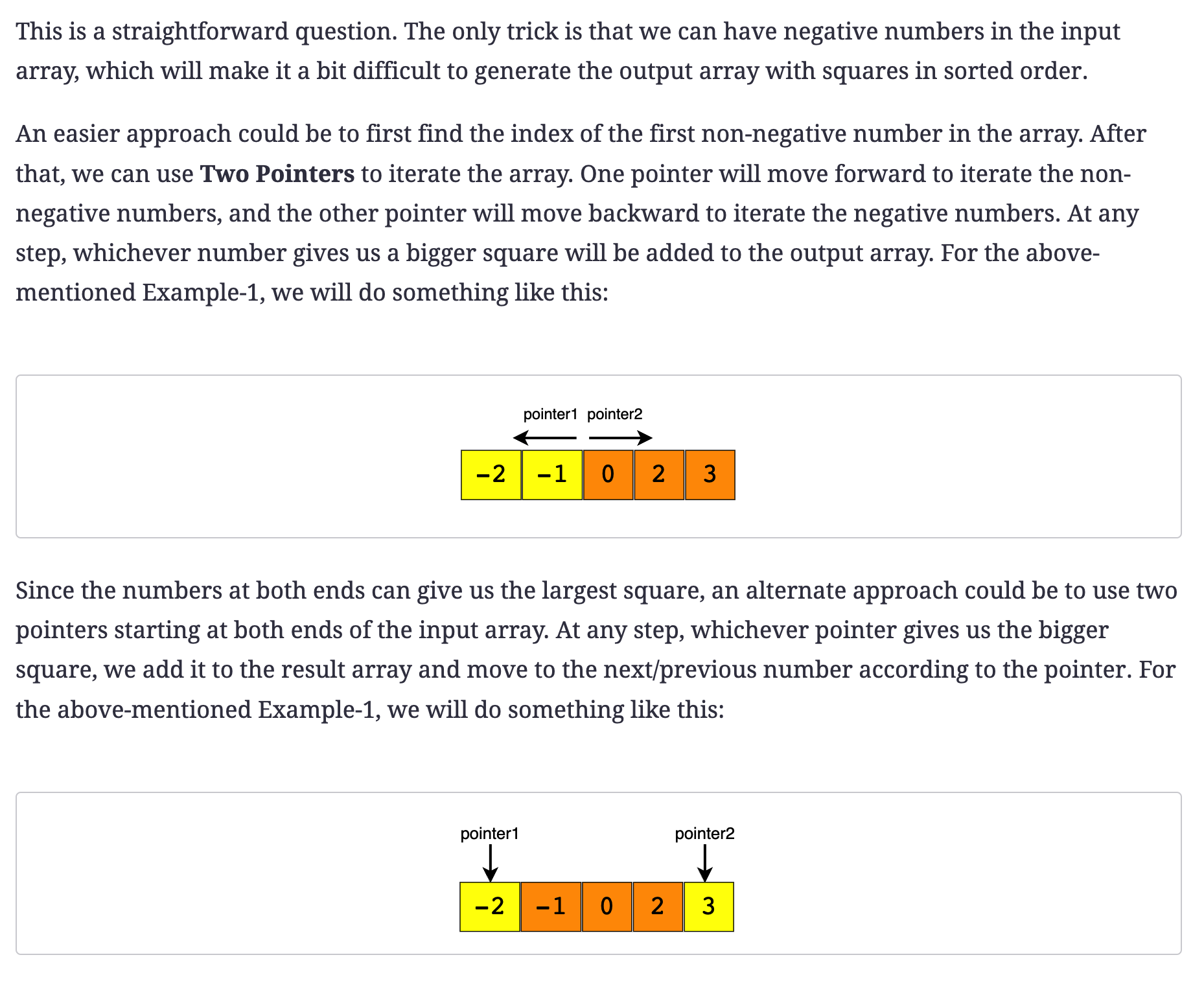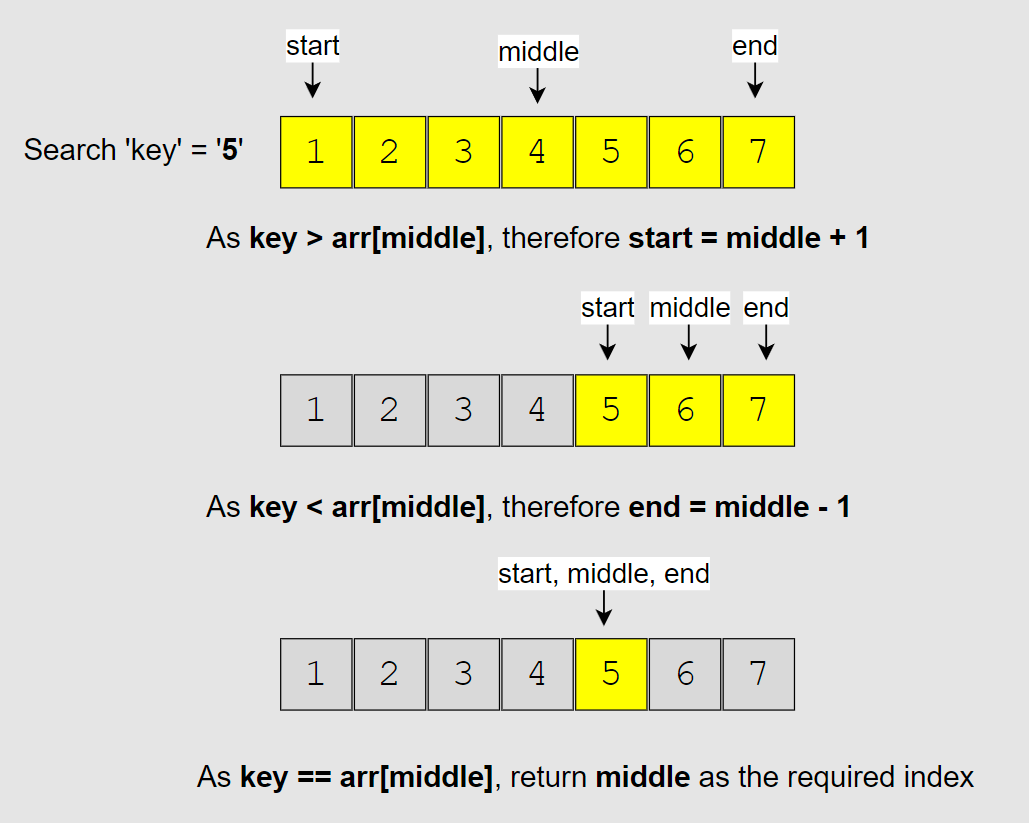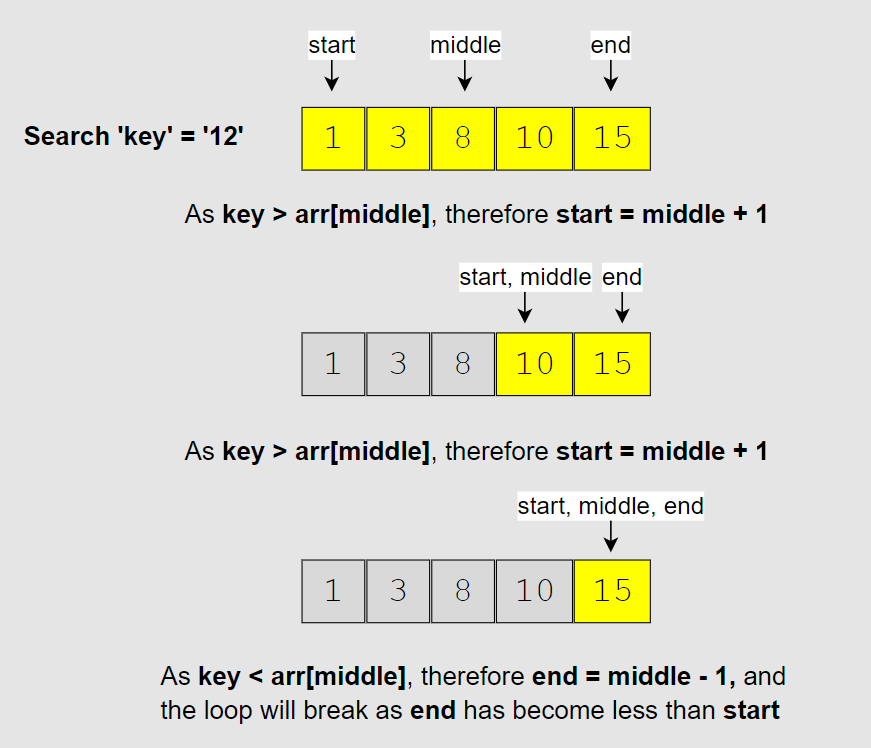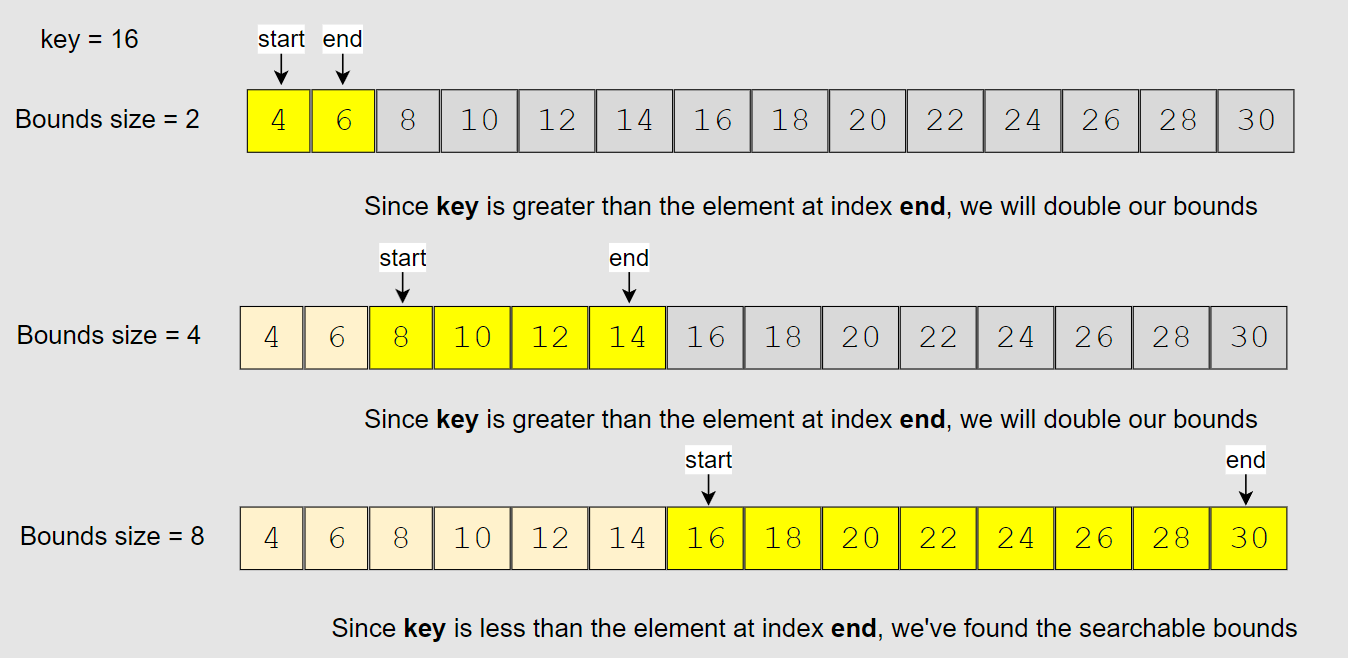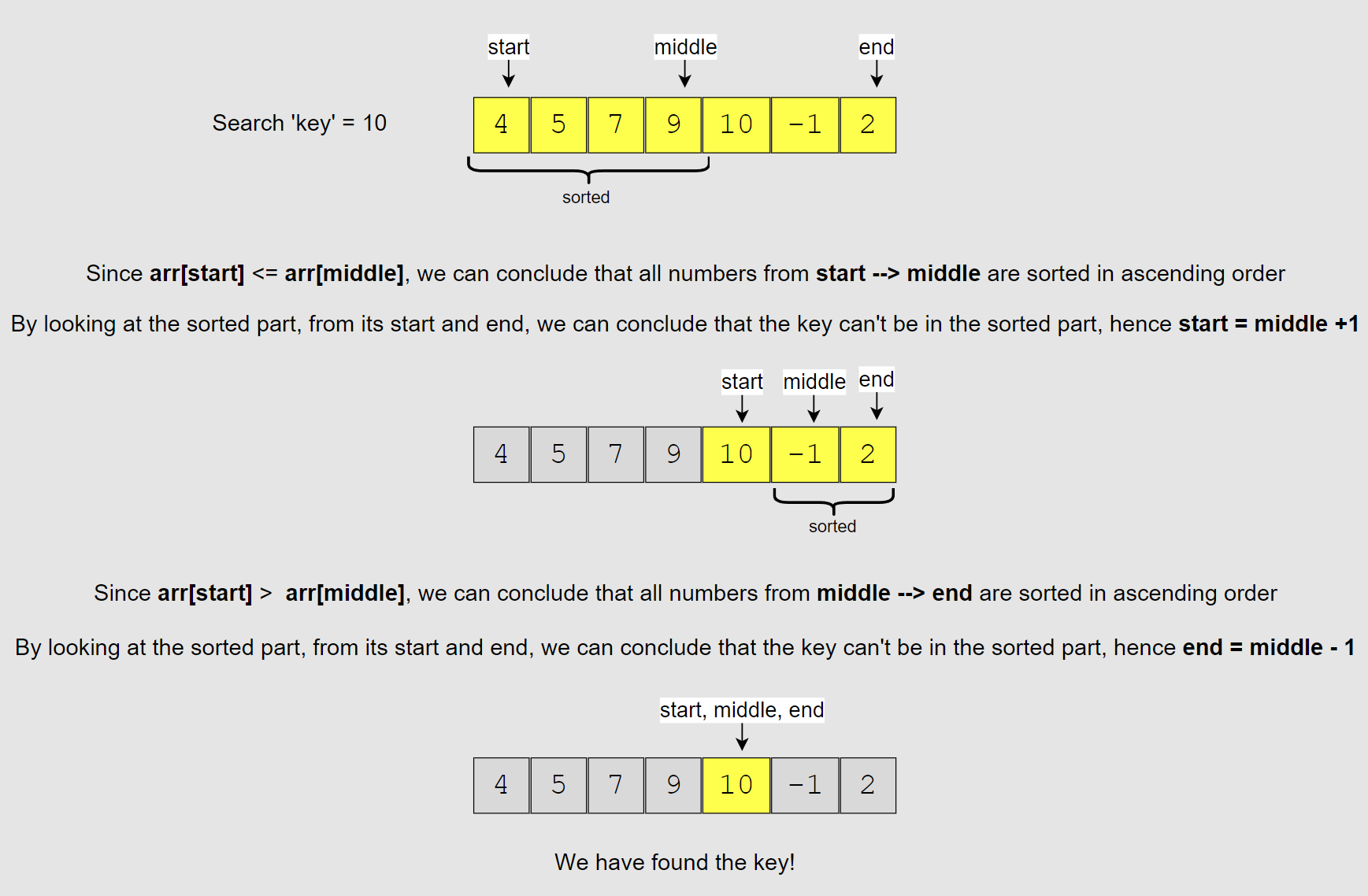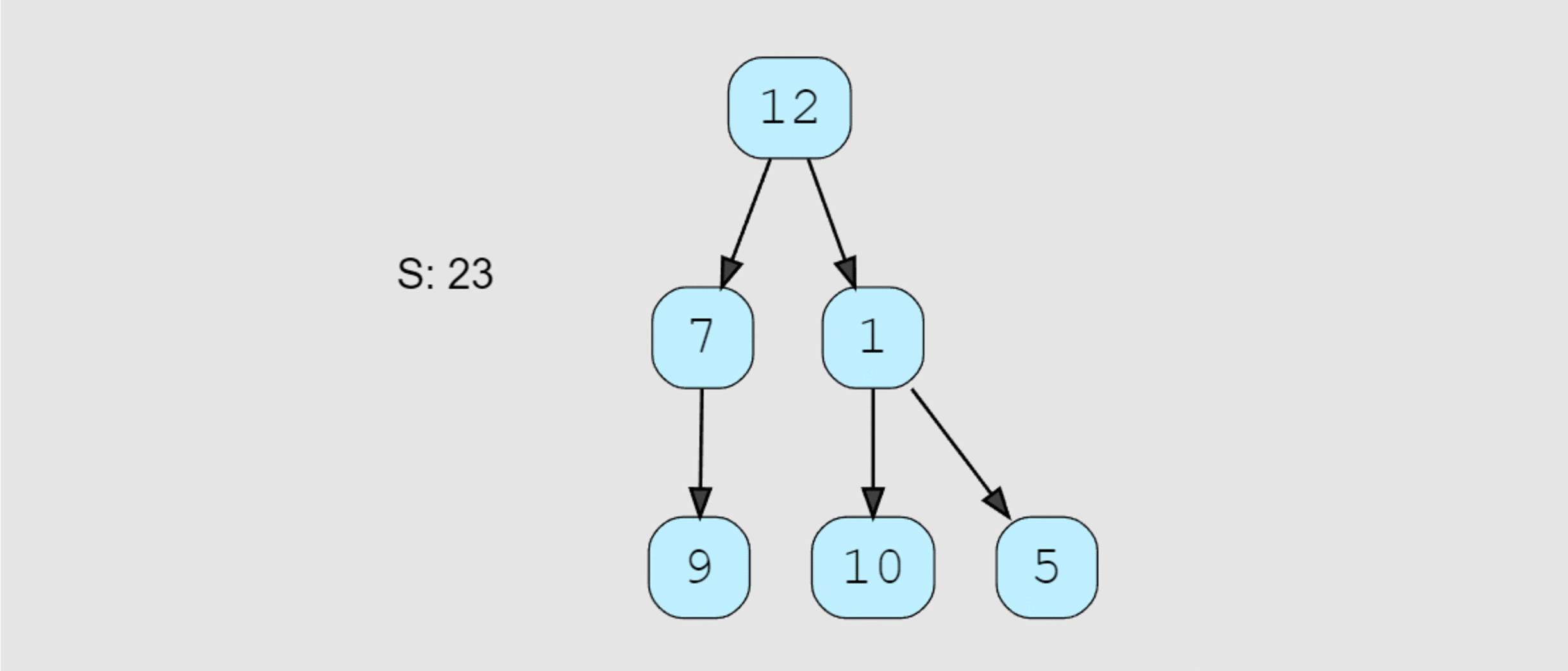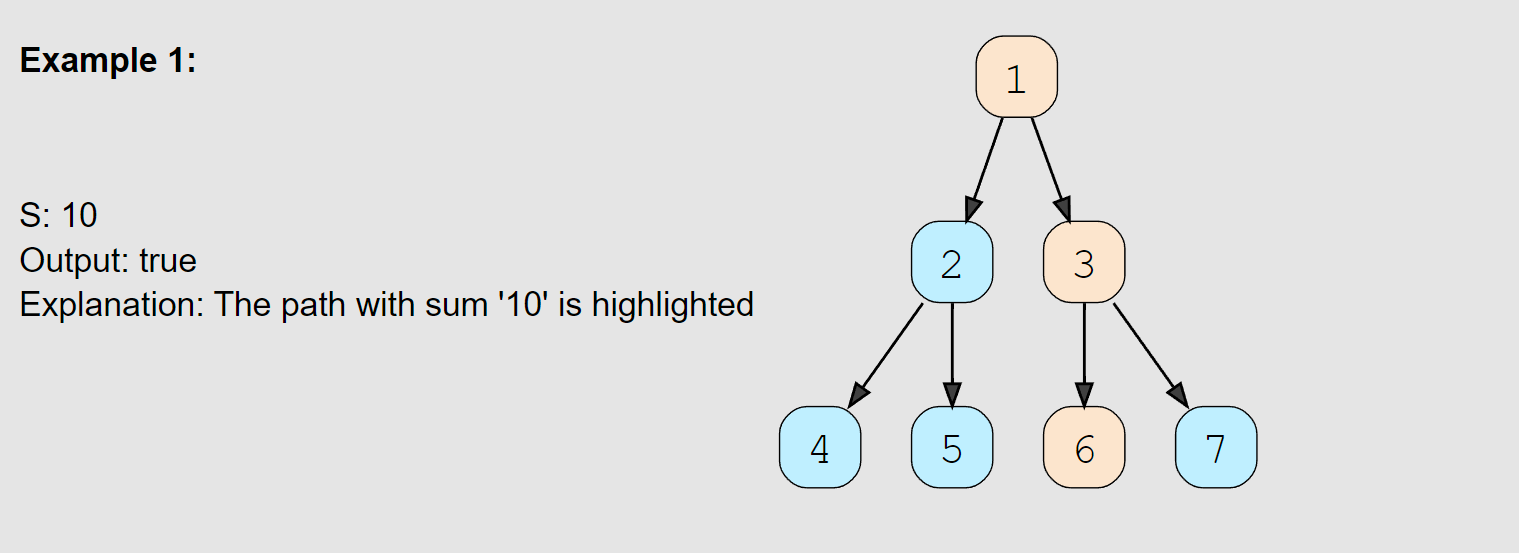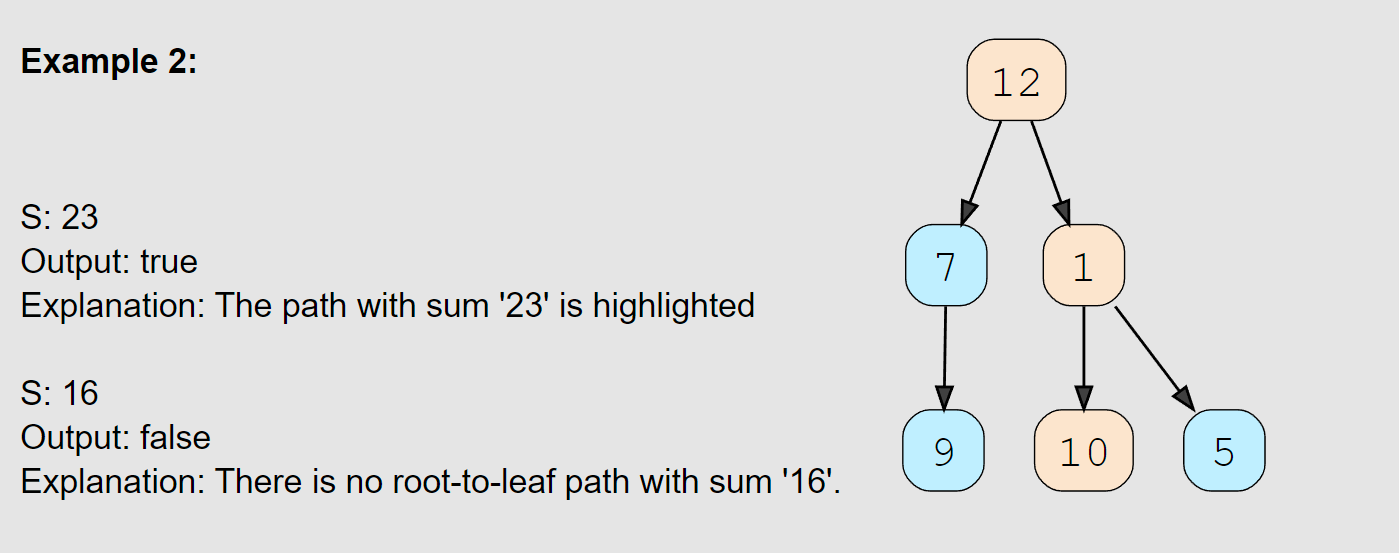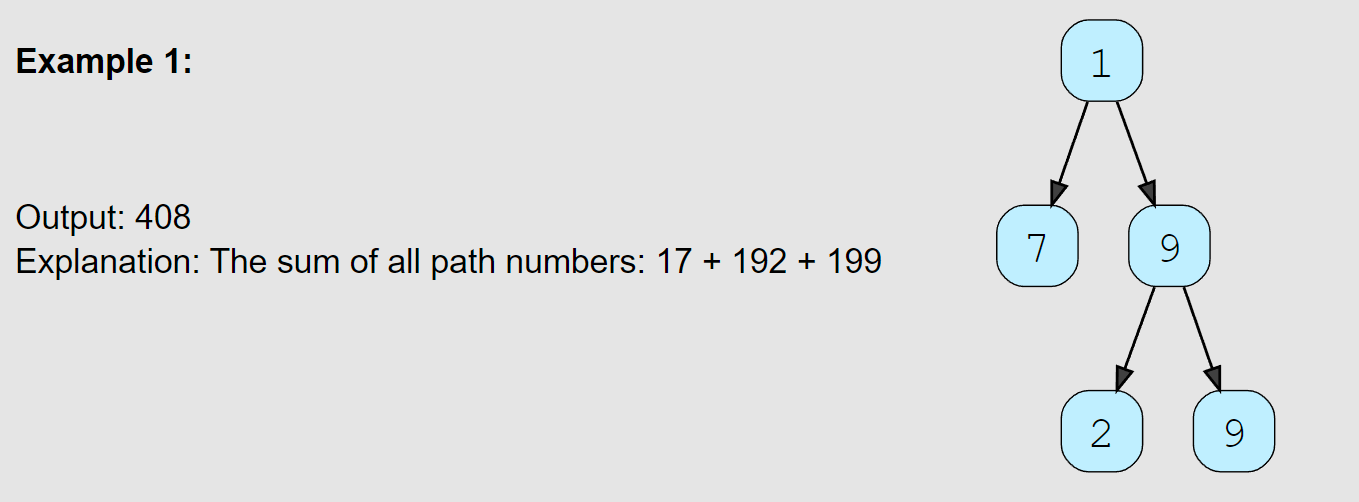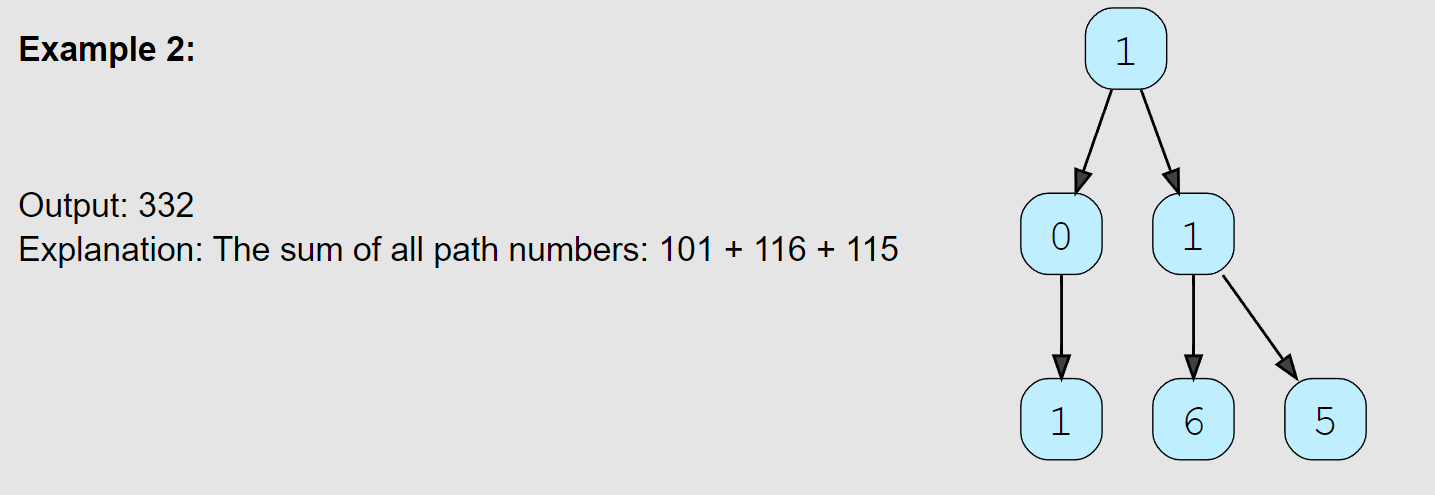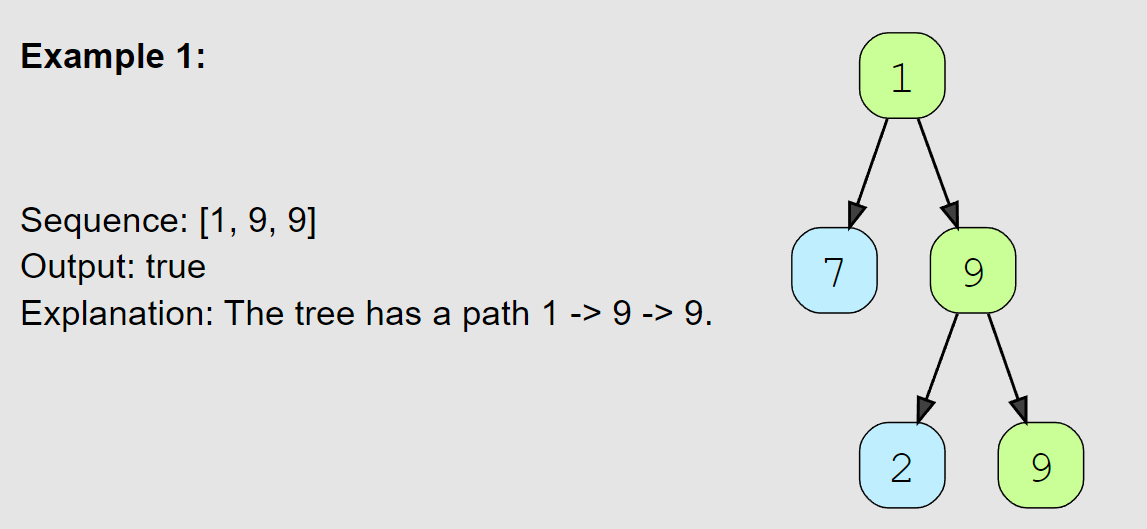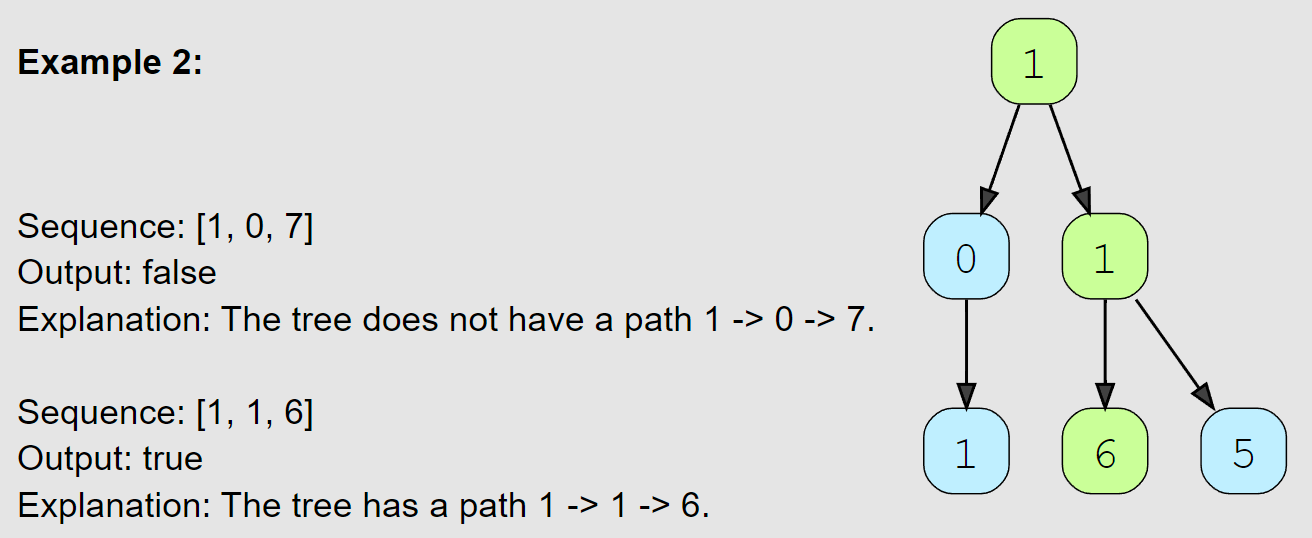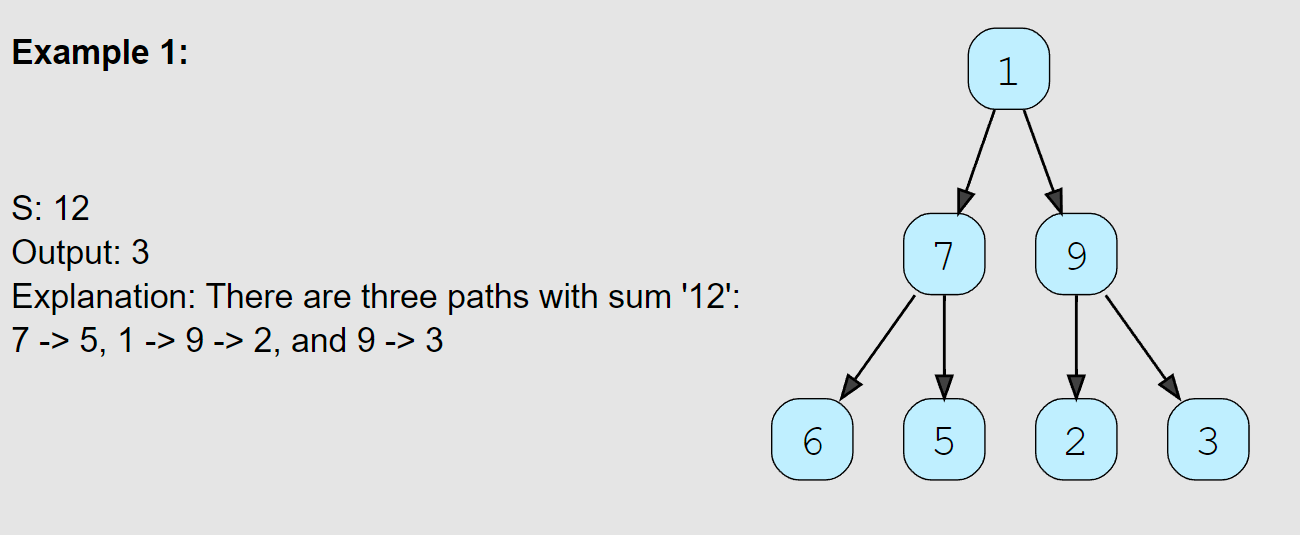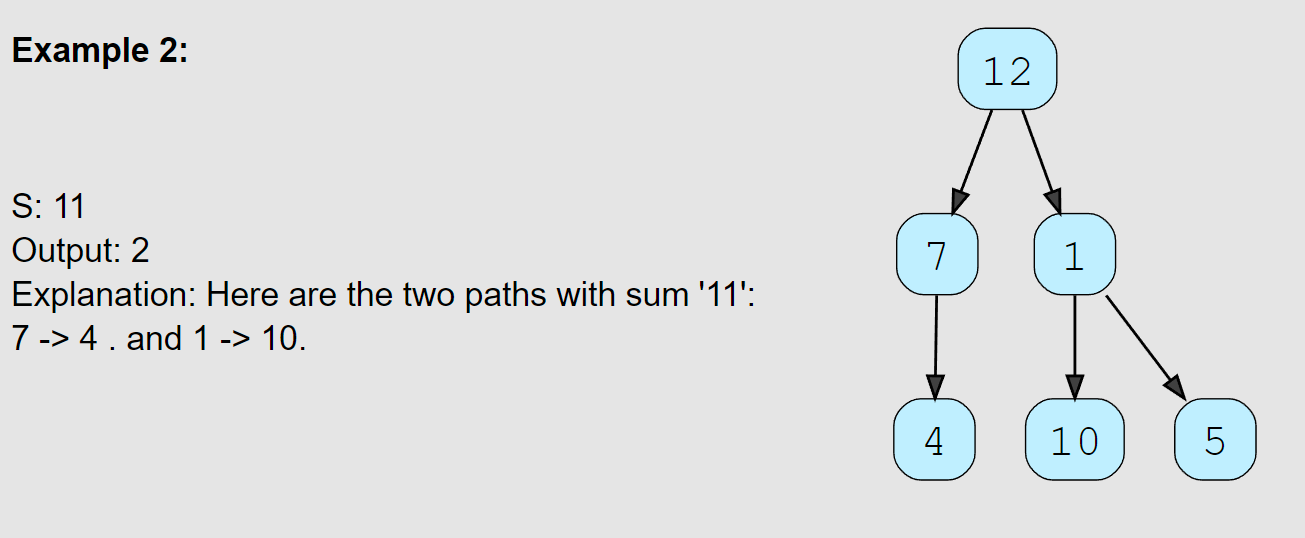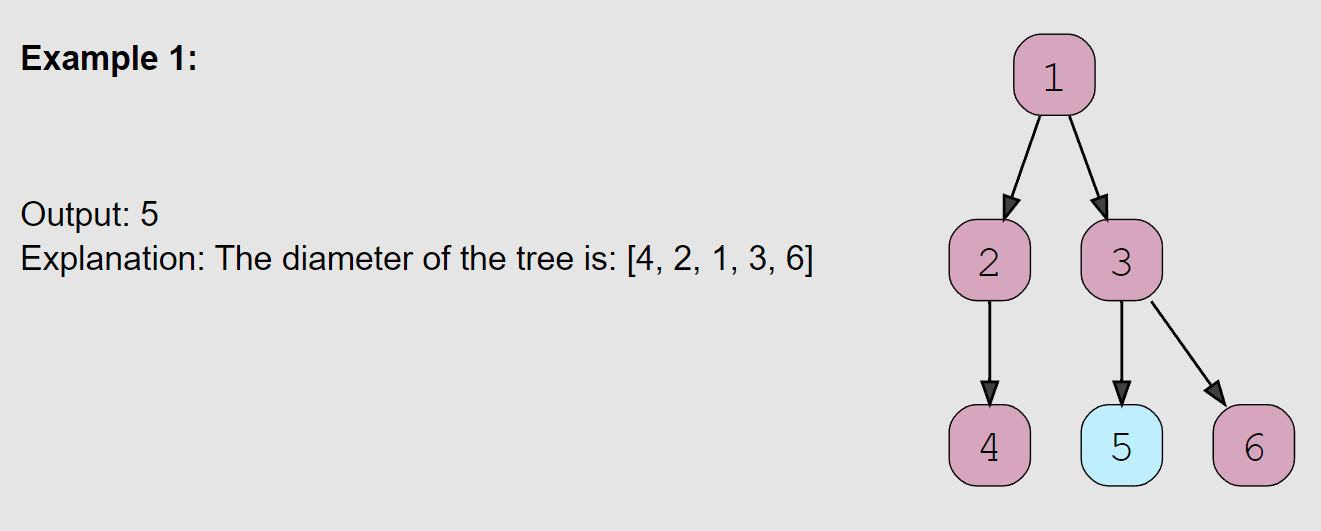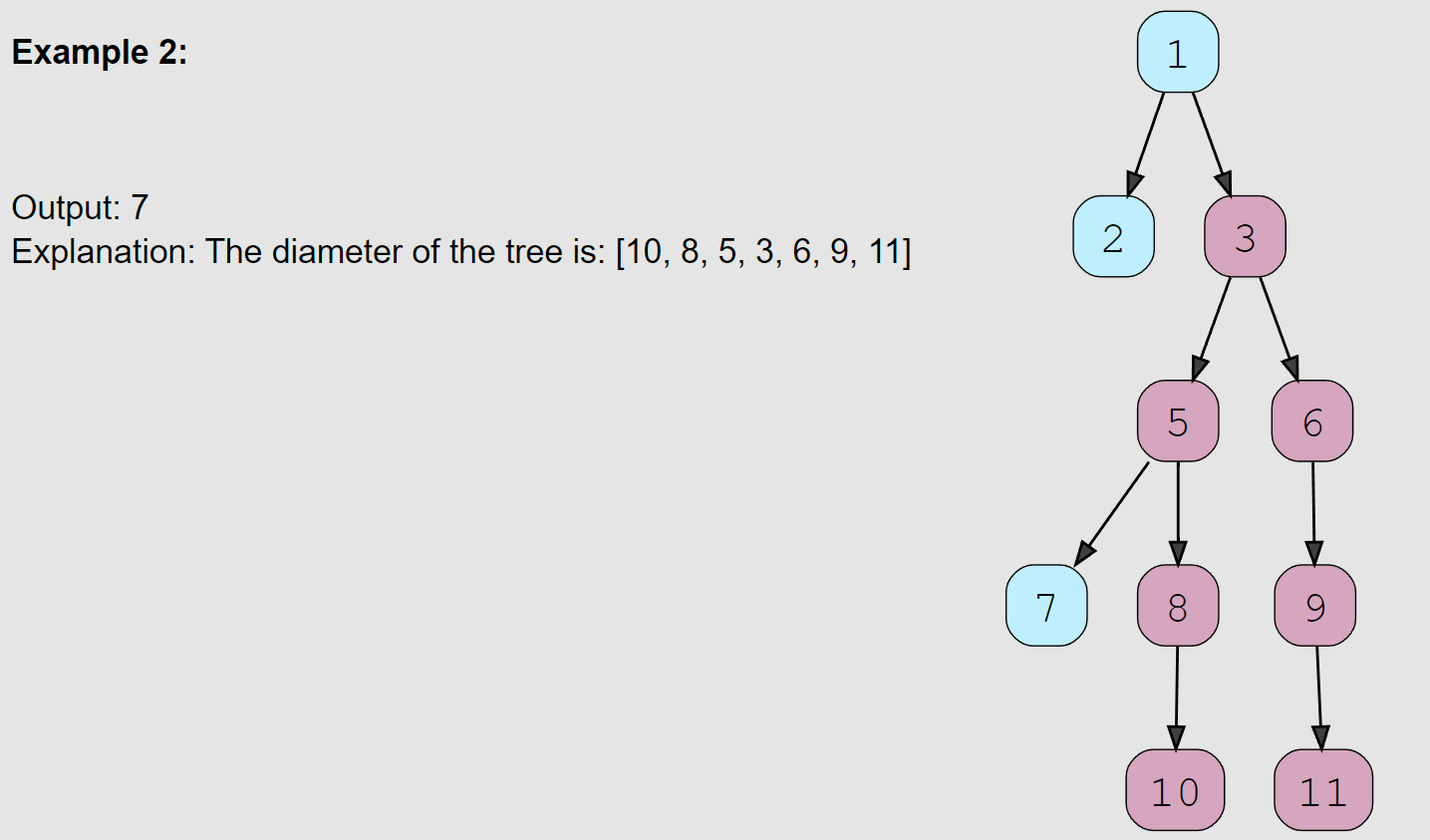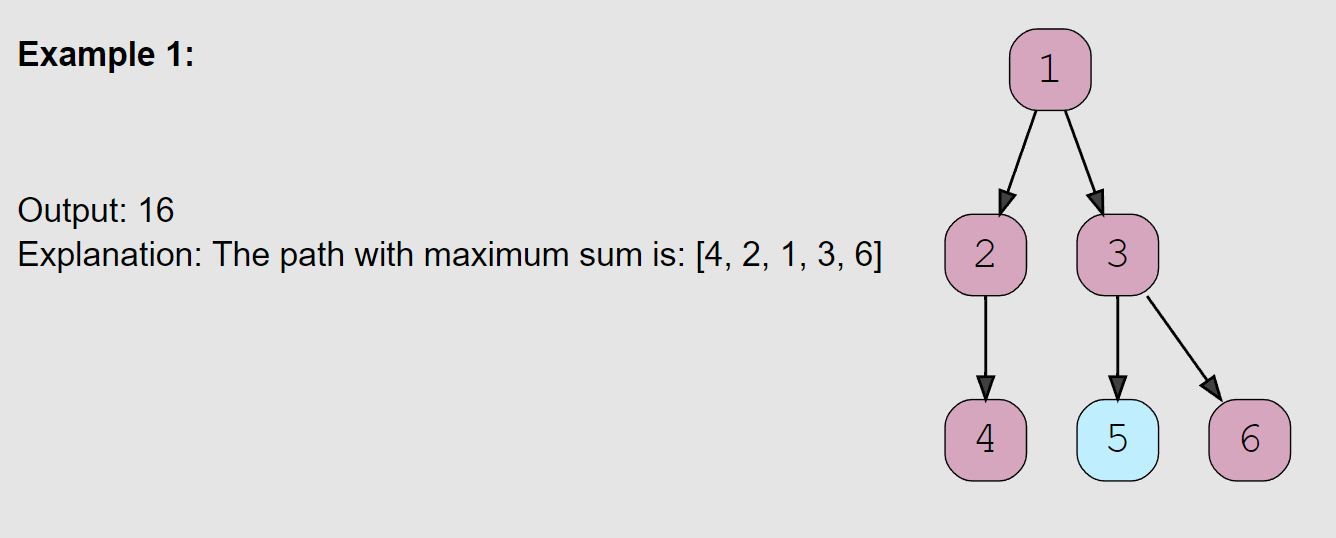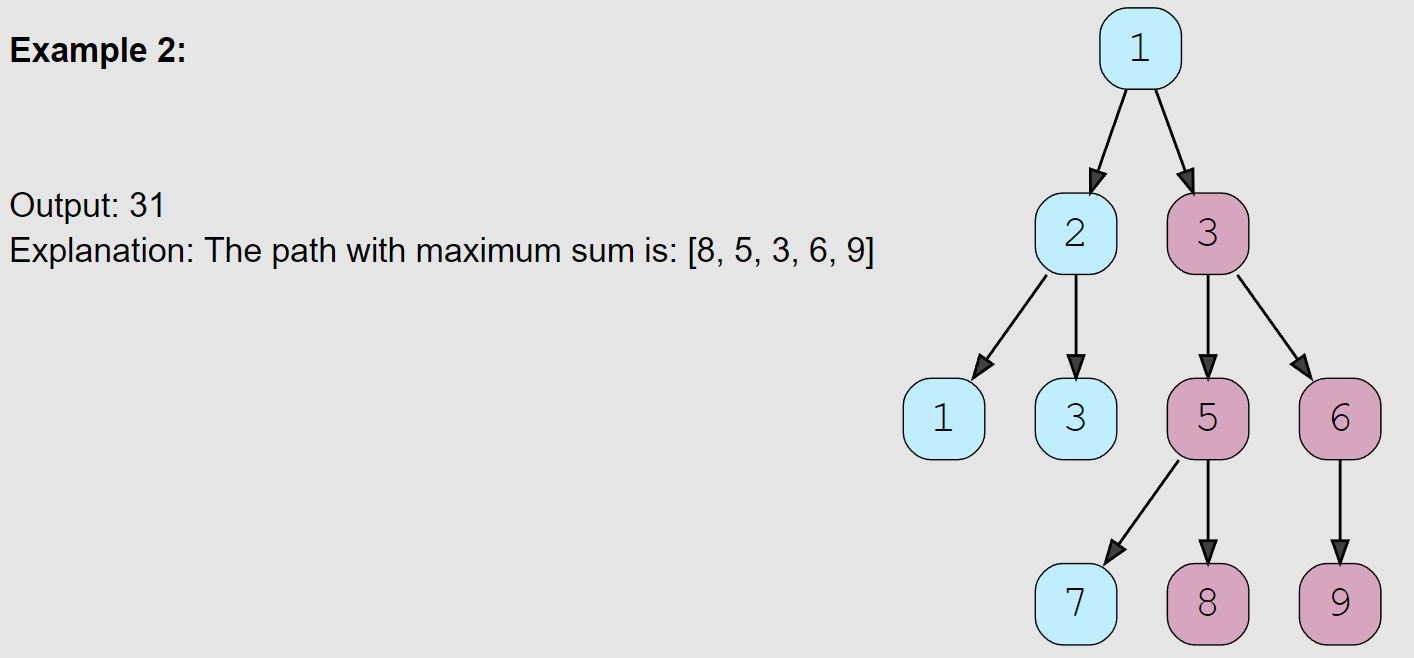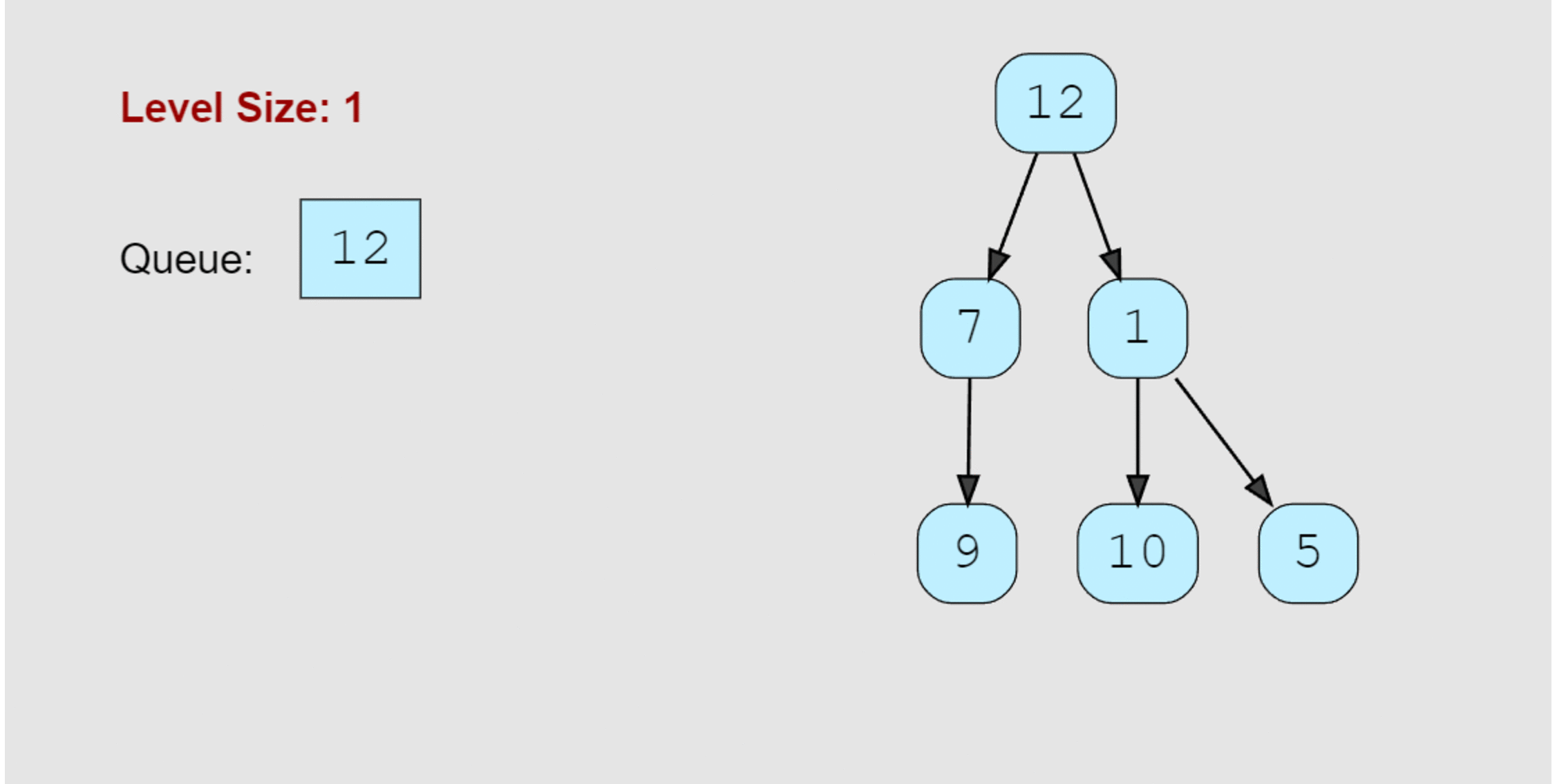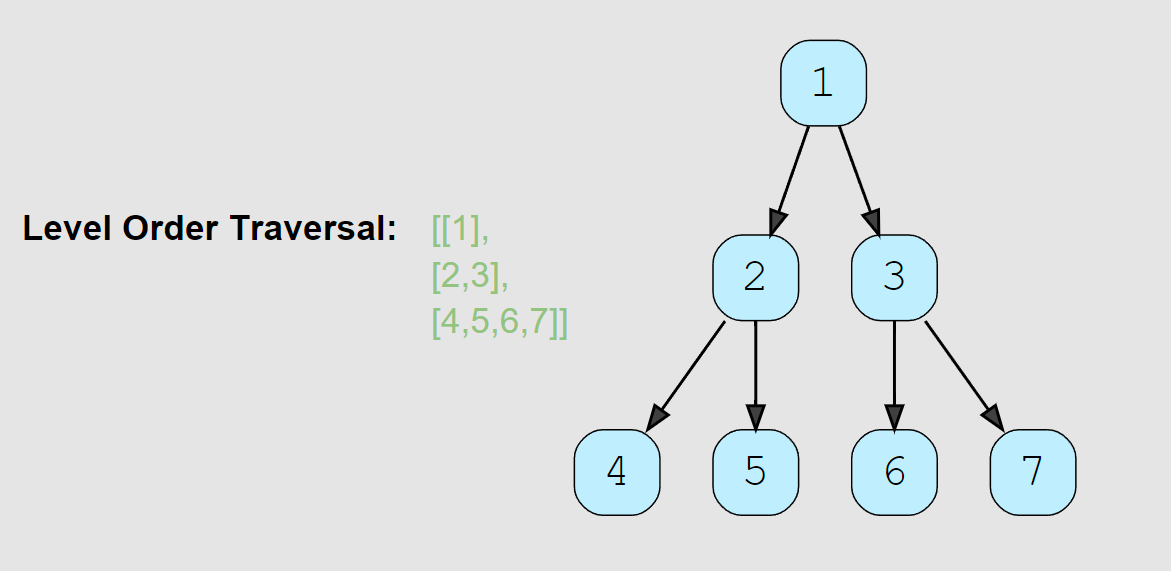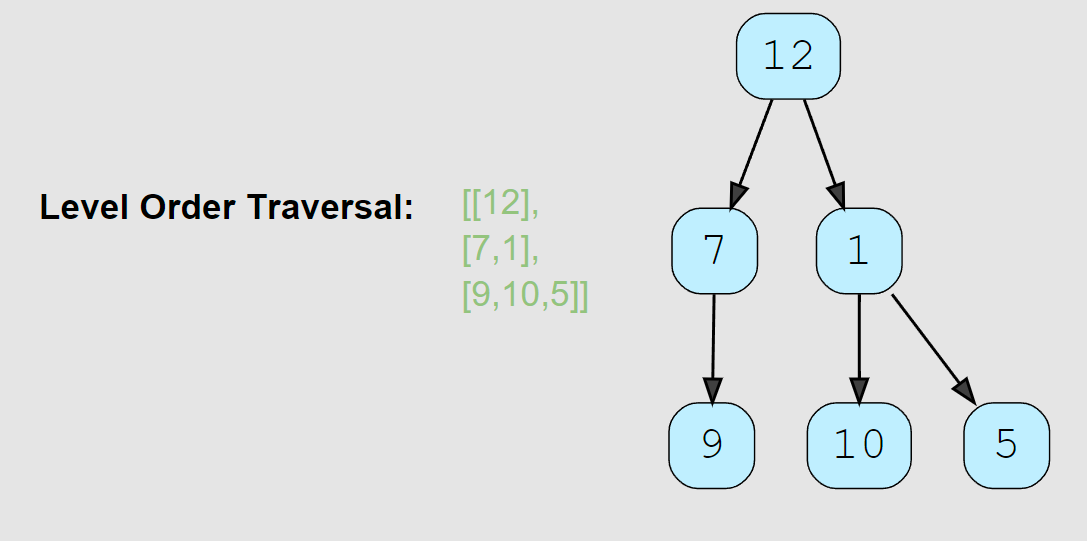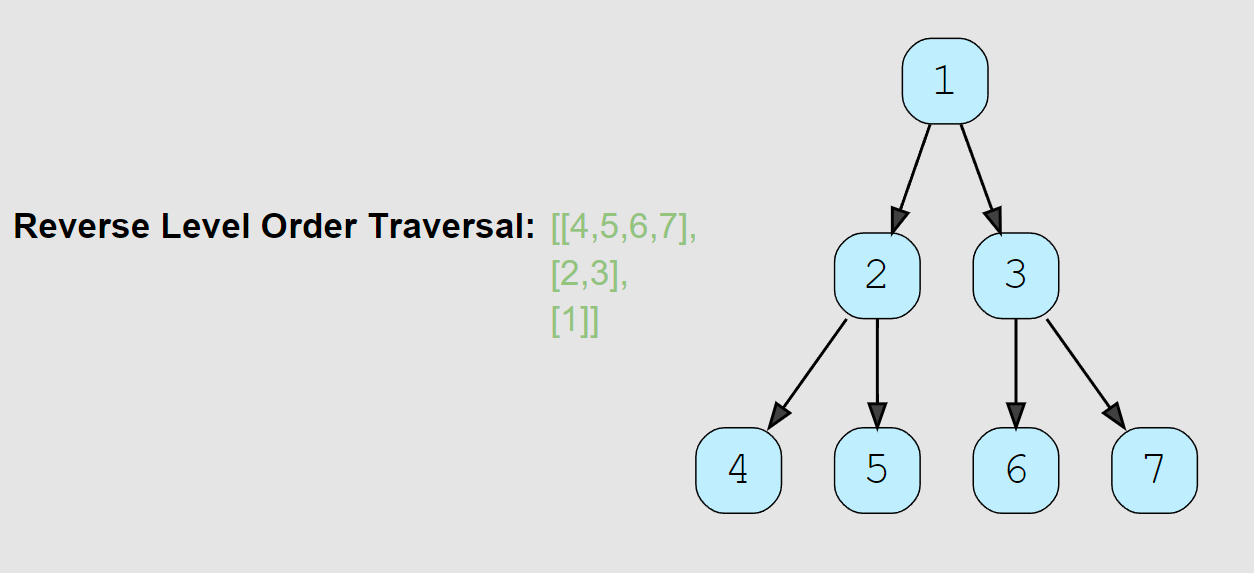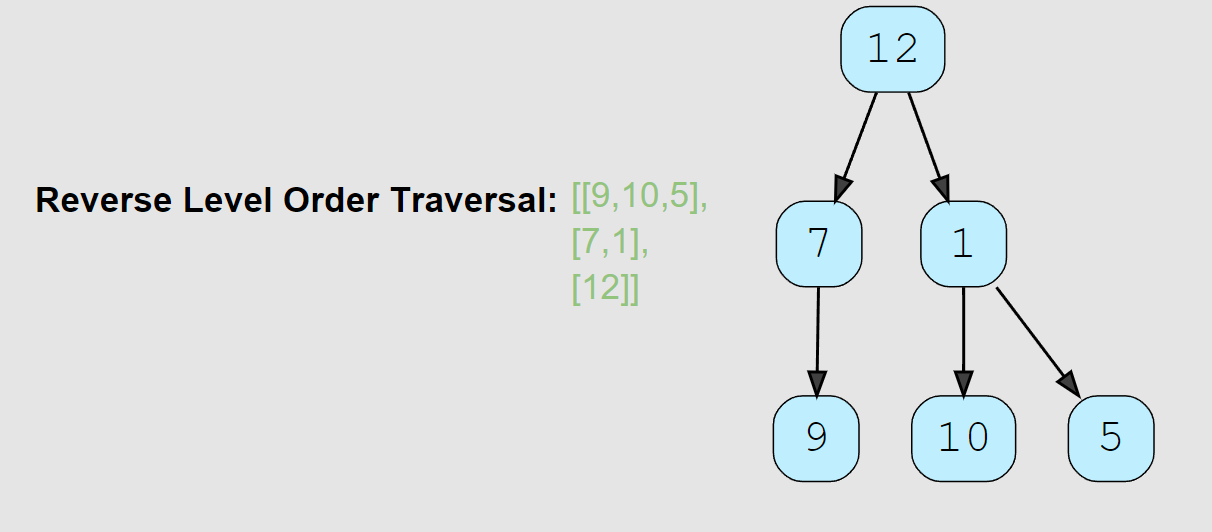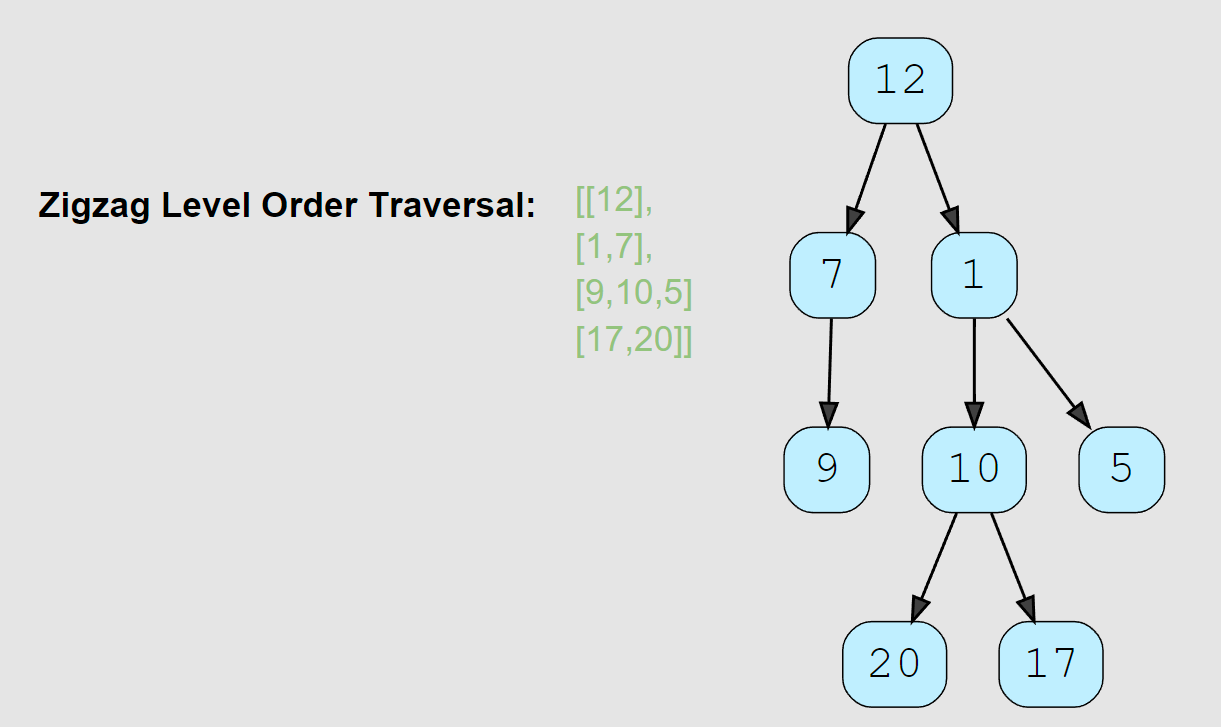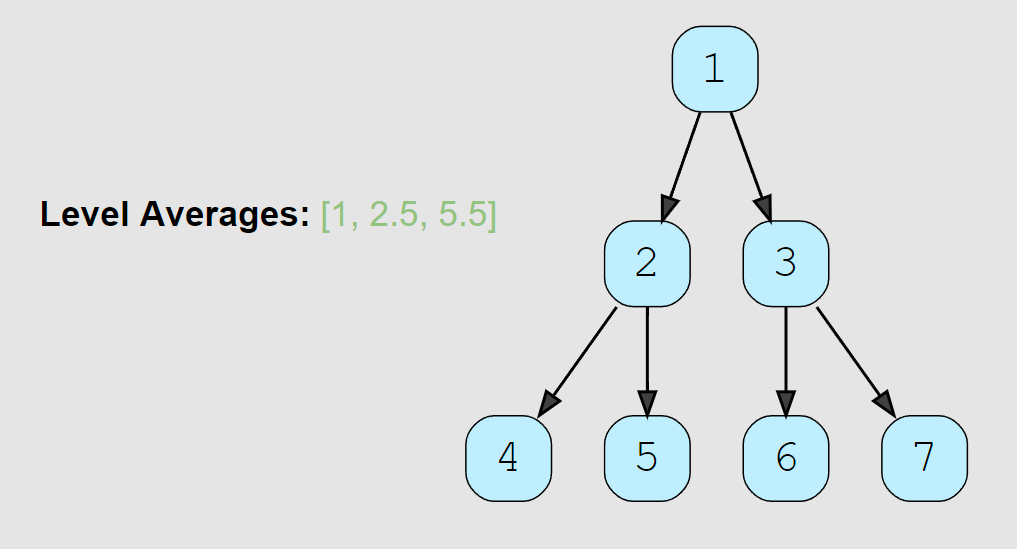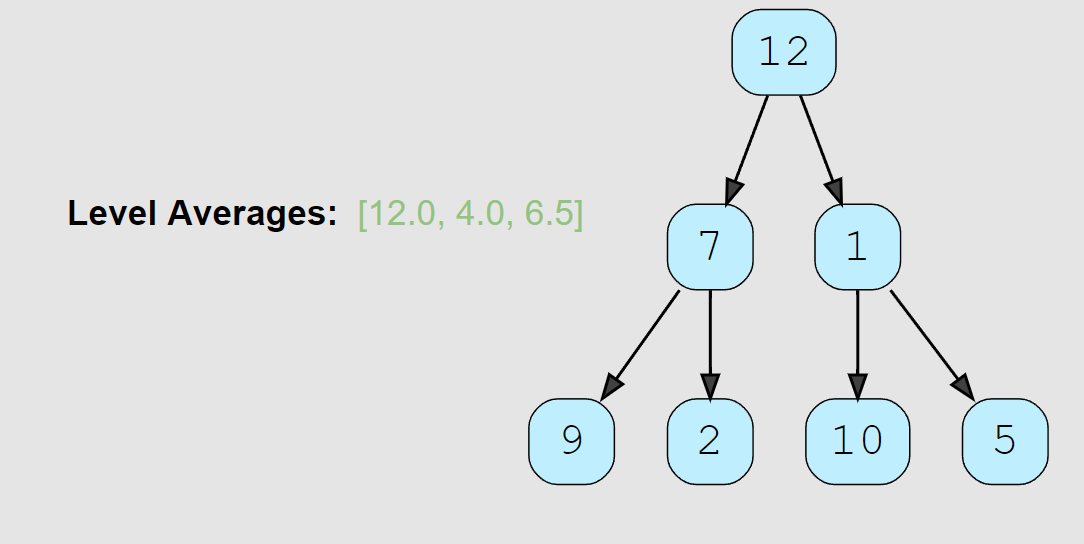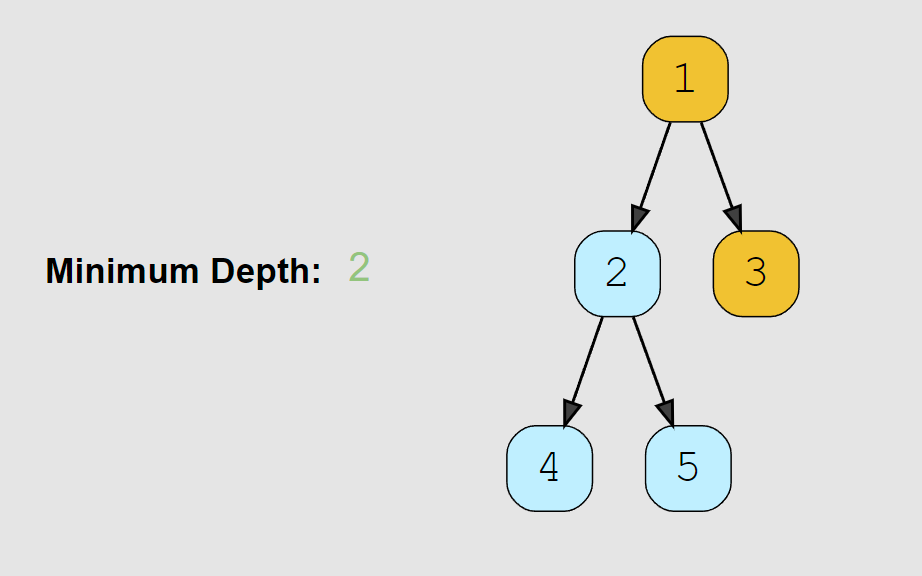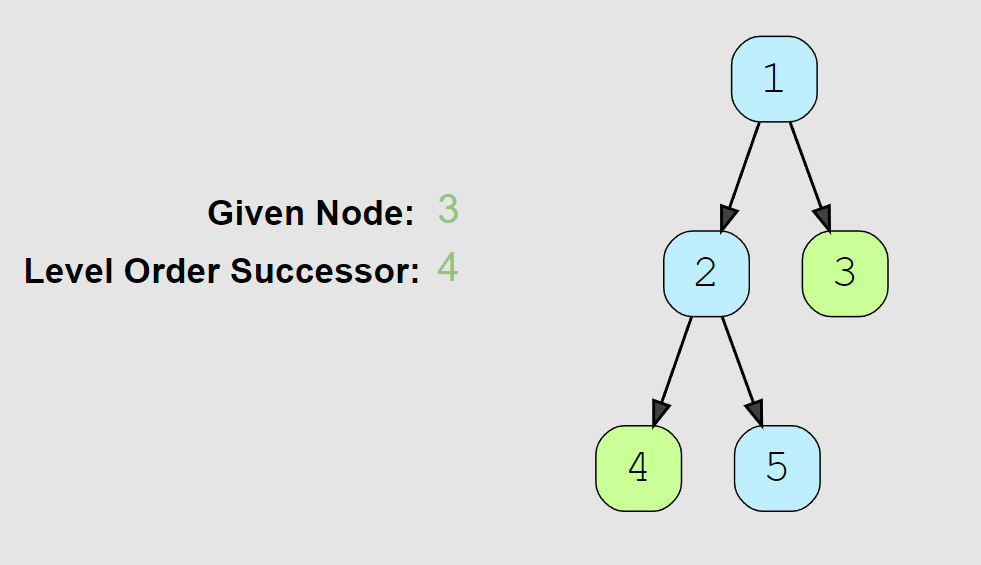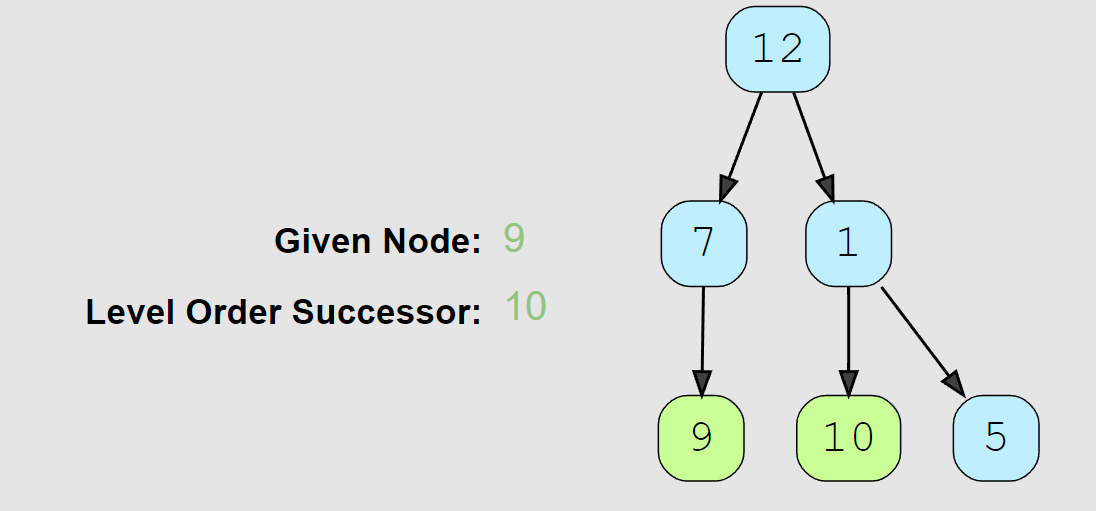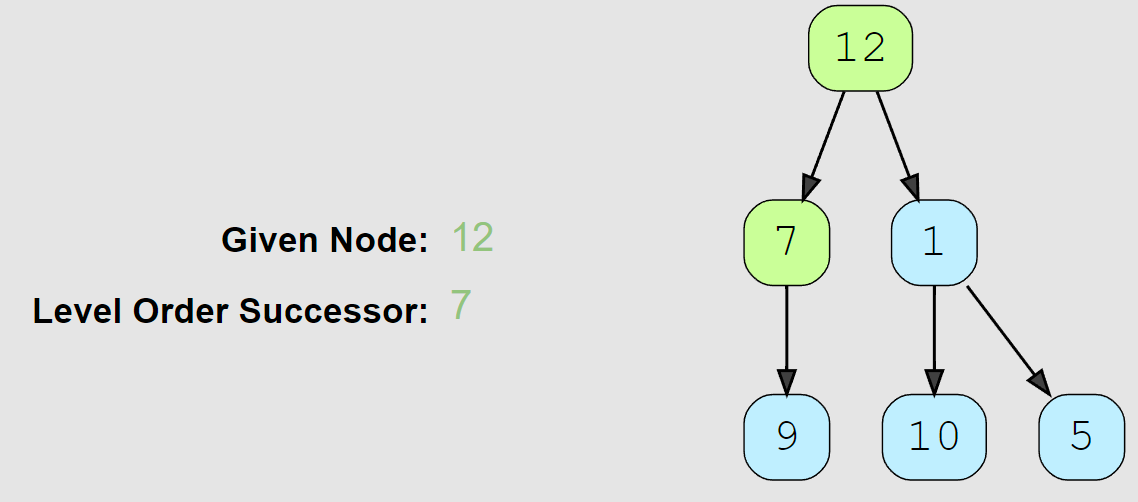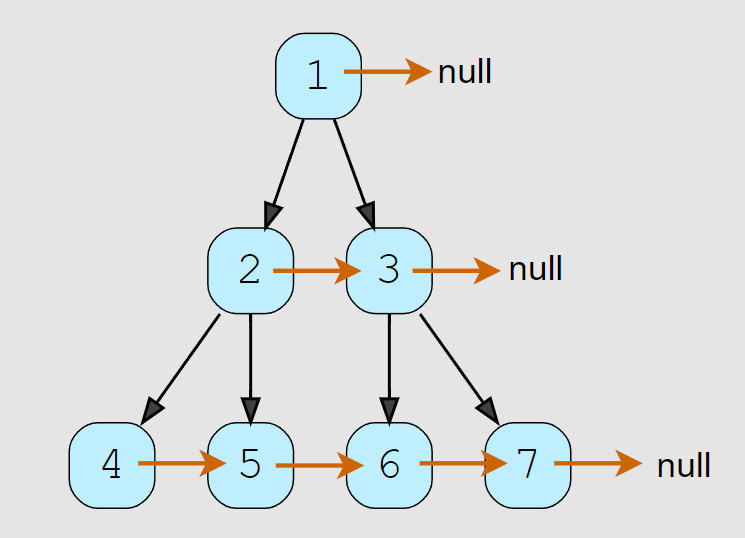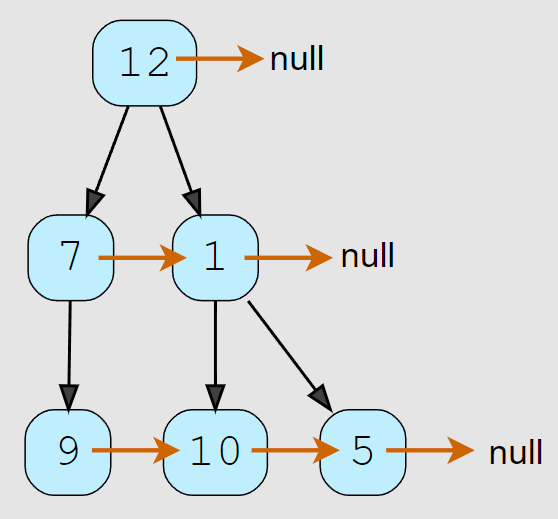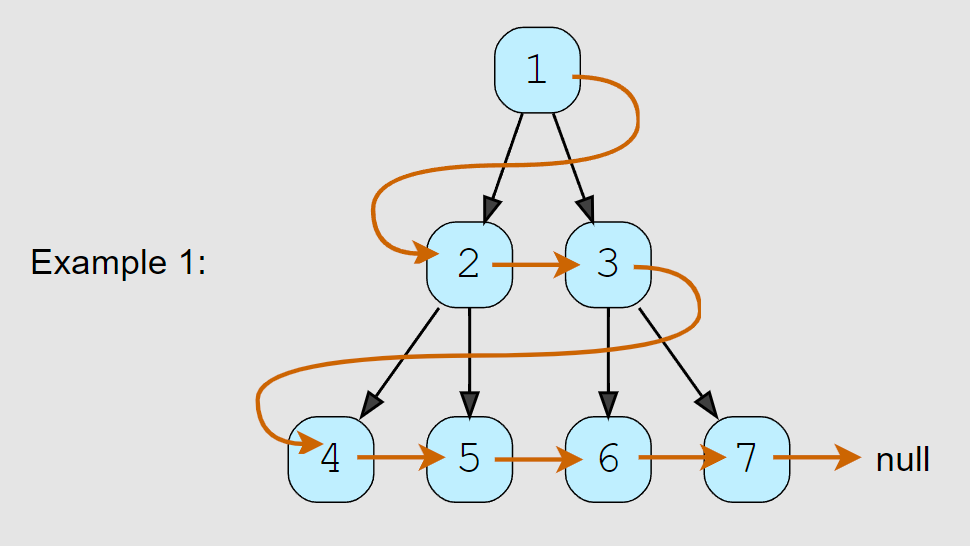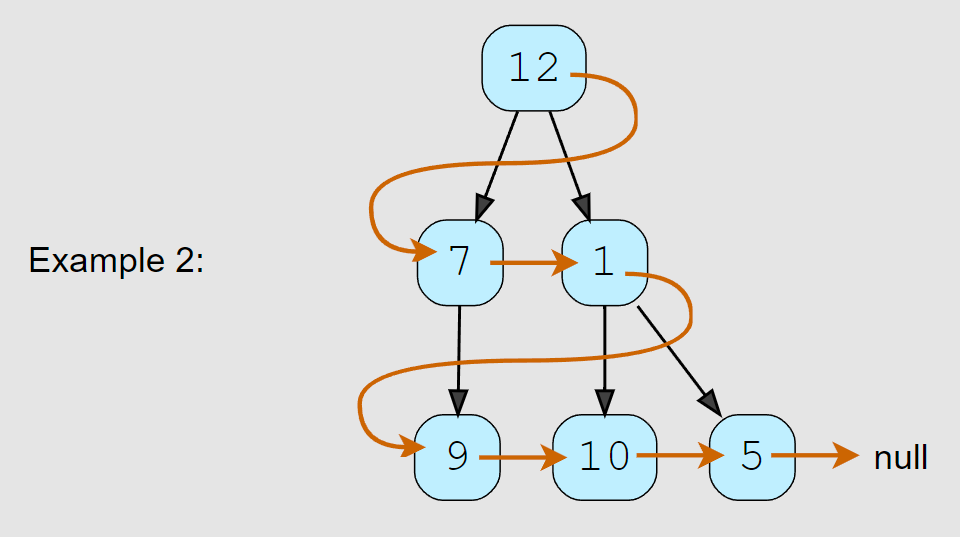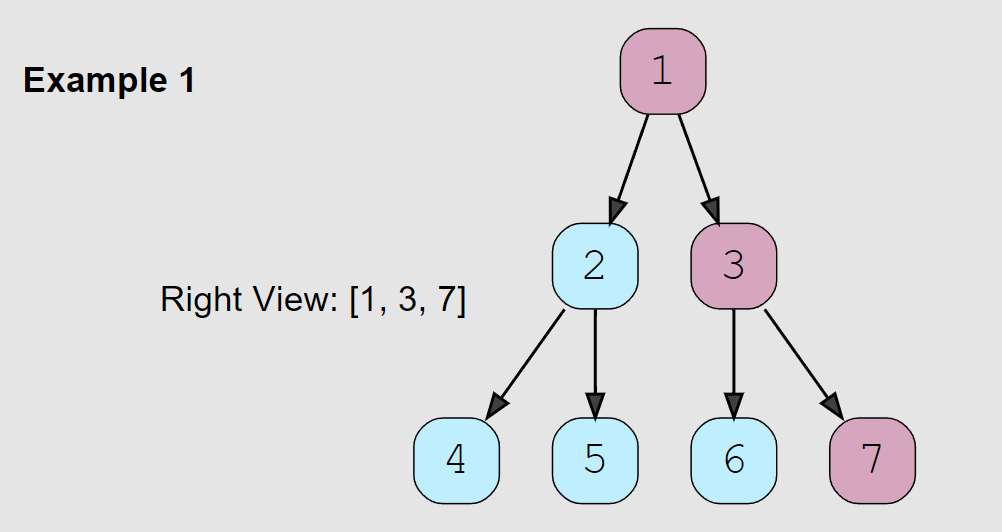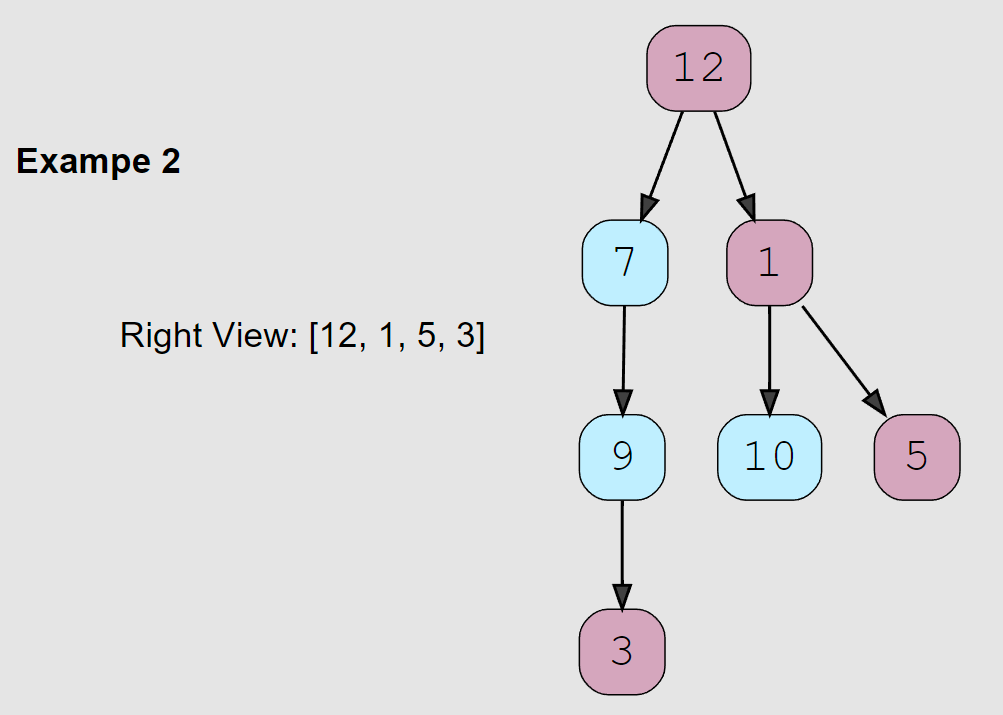Blind 75 questions, coding patterns and in-depth solutions for FAANG coding interviews.


Binary searchTwo pointers
Backtracking
DFSBFS
DFSBFS
Two pointers
Stack
Swap corresponding valuesStore one or more different values in the same pointer
Dynamic programming
Heap
MapTrie
Map/Set for O(1) time & O(n) spaceSort input for O(nlogn) time and O(1) space
| No. | Keywords | Data Structures and Algorithms |
|---|---|---|
| 1. | "Top k" | Heap: K closest points |
| 2. | "How many ways.." | |
| 3. | "Substring" | Sliding window: Longest substring without repeating characters |
| 4. | "Palindrome" | |
| 5. | "Tree" | |
| 6. | "Parentheses" | Stack: Valid Parentheses |
| 7. | "Subarray" | |
| 8. | "X Sum" | Two pointer: Two sum |
| 9. | "Max/longest sequence" | |
| 10. | "Minimum/Shortest" | |
| 11. | "Partition/split ... array/string" | DFS: Decode ways |
| 12. | "Subsequence" | |
| 13. | "Matrix" | |
| 14. | "Jump" | Greedy/DP: Jump game |
| 15. | "Game" | Dynamic programming: Divisor game, Stone game |
| 16. | "Connected component", "Cut/remove" "Regions/groups/connections" | Union Find: Number of connected components, Redundant connections |
| 17. | "Transitive relationship" | If the items are related to one another and the relationship is transitive, then chances are we can build a graph and use BFS or Union Find. |
| 18. | "Interval" | Greedy: sort by start/end time and then go through sorted intervals Interval Pattern |
To perform beginning to end computations of an array in O(n) time complexity
windowSum, windowStart = 0, 0
# 1: Increment the windowEnd pointer to start creating the sliding window
for windowEnd in range(len(array)):
# 2: Sliding the window, add elements going in
windowSum += array[windowEnd]
# 3: Set conditions required to start sliding the window
if condition():
# 4: Perform computations on elements in window
result.append(doSomethingToWindow())
# 5: Sliding the window, subtract the element going out
windowSum -= array[windowStart]
# 6: Move the sliding window one element at a time for the next iteration
windowStart += 1
return resultTo traverse and compute all elements of an array
# 1: Initialise two pointers on each end of the array
left, right = 0, len(array) - 1
# 2: While pointers have not traversed and crossed each other,
while left < right:
# 3: Perform some computation
computeSomething()
# 4: Set a condition that requires *left to increment and move to the right
if condition1():
left += 1
# 5: Set a condition that requires *right to decrement and move to the left
elif condition2():
right -= 1
baseCase()
return resultTo search for an element of an array in O(log(n))
def binarySearch(array, target):
# 1: Initialise two pointers for each side of the array
left, right = 0, len(array) - 1
# 2: While both pointers have not cross each other,
while (left <= right): # EDGE: <= is used for the edge case where array has only 1 element.
# 3: Evaluate the midpoint pointer by calculating (left + right) // 2
mid = (left + right) // 2
# 4: Return the midpoint index if array[mid] == target
if array[mid] == target:
return mid
else:
# 5: Else, if array[mid] is already smaller than the target, then we should discard everything on the left and update the new lower boundary: left = mid + 1
if (array[mid] < target):
left = mid + 1
# 6: Otherwise, we discard everything on the right and update the new upper boundary: right = mid - 1
else:
right = mid - 1
# 7: Return -1 by default if we cannot find our target number in the array
return -1To perform head to tail computations
def traverseLinkedList(head):
# 0: Initialise previous*, current* and next* pointers
previous, current, next = None, head, None
# 1: While current pointer has not fully traversed to the None end of the linked list,
while current is not None:
# 2: Perform forwardtracking computations
doSomething()
# 3: Traverse to the next node of the linked list
current = current.next
# 4: Perform manipulation of node connections
current.next = nextDistinctNode # Skip a node
current = nextDistinctNode
# O(n) Time since we need to traverse all n nodes at least once
# O(1) Space since we perform the LinkedList traversal in-placeTo perform head to tail reversal
def reverseLinkedList(head):
# 0: Initialise previous*, current* and next* pointers
previous, current, next = None, head, None
# 1: While we have not reached the end of the LinkedList (tail == None),
while current is not None:
next = current.next # 2: PLACEHOLDER - store currentNode.next in next
current.next = previous # 3: REVERSE - set currentNode.next to point to previous
previous = current # 4: UPDATE new head - move previous by 1 step
current = next # 5: UPDATE new node iteration - move current by 1 step
return previous # 6: Return new head of the reversed LinkedList
# O(n) Time since we need to traverse all n nodes at least once
# O(1) Space since we perform the LinkedList reversal in-placeTo perform root to leaf computations
def recursiveFunction(currentNode):
# 0: Define your input and return types!
# :currentNodetype: TreeNode object
# :rtype: int
# 1: Base case for NULL child nodes before backtracking in the recursive stack
if currentNode is None:
return # return 0, (0,0), False
# 2: Perform forwardtracking computations
informationToPassDown = doSomething()
# 3: Perform leaf node computations
if currentNode.left is None and currentNode.right is None:
answer = doSomething() # return answer
# 4: Recursive function calls to perform DFS on tree while passing down new forwardtracking computations
recursiveFunction(currentNode.left, informationToPassDown, answer)
recursiveFunction(currentNode.right, informationToPassDown, answer)
# 5: You may need to cleanup recent currentNode.value if backtacking is needed to find the answer elsewhere
del currentPath[-1]
# O(n) Time - where n is the number of nodes in the tree. We traverse each and every node once.
# O(n) Space worst case - where n is the total number of nodes in the tree that will be stored in the recursion stack
# Worst case is when the given tree is a linked list where every node has only one childTo perform leaf to root computations
def recursiveFunction(currentNode):
# 0: Define your input and return types!
# :currentNodetype: TreeNode object
# :rtype: int
# 1: Base case for NULL child nodes before backtracking in the recursive stack
if currentNode is None:
return
# 2: Recursive function calls to perform DFS on tree while passing down new backtracking computations
informationToPassDown, answer = recursiveFunction(currentNode.left)
informationToPassDown, answer = recursiveFunction(currentNode.right)
# 3: Perform backtracking computations
informationToPassDown = doSomething()
# 4: Return information to pass down during recursion
return (informationToPassDown, answer)
# O(n) Time - where n is the number of nodes in the tree. We traverse each and every node once.
# O(n) Space worst case - where n is the total number of nodes in the tree that will be stored in the recursion stack
# Worst case is when the given tree is a linked list where every node has only one childTo perform root to leaf computations
def iterativeFunction(root):
# 0: Define your input and return types!
# :roottype: TreeNode object
# :rtype: TreeNode object
# 1: Initialise a stack with root node
stack = [root]
# 2: Iterate all elements of the stack in LIFO order for DFS
while len(stack) > 0:
currentNode = stack.pop() # Pop the top-most element
# 3: Base case for NULL child nodes to skip iteration
if currentNode is None:
continue
# 4: Perform forwardtracking computations
doSomething()
# 5: Push child nodes to stack to traverse down the tree
stack.append(currentNode.left)
stack.append(currentNode.right)
# 6: You may need to return the computed answer
return answer # return root
# O(n) Time - where n is the number of nodes in the tree. We traverse each and every node once.
# O(n) Space worst case - where n is the total number of nodes in the tree. We also need O(n) for the stack.To perform root to leaf computations
# 0: Import double ended queue class from collections library
from collections import deque
def iterativeFunction(root):
# 1: Define your input and return types!
# :roottype: TreeNode object
# :rtype: list
# 2: Base case for NULL child nodes to skip iteration
if node is None:
continue
# 3: Instantiate deque() object and append root node
queue = deque()
queue.append(root)
# 4: Iterate all elements of the queue in FIFO order for BFS
while len(queue) > 0:
currentLevelSize = len(queue)
for _ in range(currentLevelSize):
# 5: Pop the bottom-most element
currentNode = queue.popleft()
currentLevel.append(currentNode.value)
# 6: Perform forwardtracking computations
doSomething()
# 7: Push child nodes to queue to traverse down the tree
queue.append(currentNode.left)
queue.append(currentNode.right)
# 8: You may need to return the computed answer
return answer # return root
# O(n) Time - where n is the number of nodes in the tree. We traverse each and every node once.
# O(n) Space worst case - where n is the total number of nodes in the tree
# We also need O(n) for the queue. We can have a max of n/2 nodes at any level (at the lowest level of BT)To extract information patterns and rank them
# 0: Import regular expressions library
import re
def extractInformation(log):
# 1: Define your input and return types
# :logtype: string
# :rtype: string
# 2: Initialise hashmap and result array
hashMap = {}
result = []
# 3: Define your regular expression
regex = r'(?P<number>\d+),(?P<name>\w+),/(?P<directory>\w+),(?P<latency>\d+)ms\s'
# 4: Extract pattern information into a list of tuples
tuples = re.findall(regex, log)
# 5: Iterate through list of tuples and extract information from each tuple
for tuple in tuples:
(number, name, directory, latency) = tuple
# 6: Store desired information into hashmap (e.g.: latency:name key-value pair)
if name not in hashMap:
hashMap[latency] = name
# 7: Sort desired information by hashMap.keys() (e.g.: latency)
sortedLatencies = sorted(hashMap.keys())
# 8: Append sorted information into result
for latency in sortedLatencies:
result.append(f'{hashMap[latency]} {latency}')
# 9: Print out result separated by newline
print('\n'.join(result))To run unit tests using the built-in unittest Python library
import unittest
class UnitTest(unittest.TestCase):
def testCase(self):
input1 = [1, 2, 3]
input2 = 2
actual = myFunction(input1, input2)
expected = [1, 3, 2]
self.assertEqual(actual, expected)
if __name__ == '__main__':
unittest.main()
unittest.main(argv=[''], exit=False, verbosity=2) # For Jupyter- ✅ Two Sum - https://leetcode.com/problems/two-sum/
- ✅ Best Time to Buy and Sell Stock - https://leetcode.com/problems/best-time-to-buy-and-sell-stock/
- ✅ Contains Duplicate - https://leetcode.com/problems/contains-duplicate/
- ✅ Product of Array Except Self - https://leetcode.com/problems/product-of-array-except-self/
- ✅ Maximum Subarray - https://leetcode.com/problems/maximum-subarray/
- ✅ Maximum Product Subarray - https://leetcode.com/problems/maximum-product-subarray/
- Find Minimum in Rotated Sorted Array - https://leetcode.com/problems/find-minimum-in-rotated-sorted-array/
- ✅ Search in Rotated Sorted Array - https://leetcode.com/problems/search-in-rotated-sorted-array/
- ✅ 3Sum - https://leetcode.com/problems/3sum/
- Container With Most Water - https://leetcode.com/problems/container-with-most-water/
Given an array of integers nums and an integer target, return indices of the two numbers such that they add up to target.
- Input:
nums = [2, 7, 11, 15], target = 9 - Output:
[0, 1] - Explanation:
Because nums[0] + nums[1] == 9, we return [0, 1].
# O(n^2) Time | O(1) Space
def TwoSums(array, target):
for i in range(len(array) - 1):
firstNum = array[i]
for j in range(i + 1, len(array)):
secondNum = array[j]
if firstNum + secondNum == targetSum:
return [firstNum, secondNum]
return []# O(n) time | O(n) space
def twoNumberSum(array, target):
nums = {}
for num in array:
potentialMatch = target - num
if potentialMatch in nums:
return [potentialMatch, num]
else:
nums[num] = True
return []✅ HASH TABLE: Use hash table to instantly check for difference value, map will add index of last occurrence of a num, don’t use same element twice
# O(nlogn) Time | O(1) Space
def TwoSums(array, target):
left = 0
right = len(array) - 1
array.sort()
while (left < right):
sum = array[left] + array[right]
if sum > target:
right -= 1
elif sum < target:
left += 1
elif sum == target:
return [array[left], array[right]]
return -1 ✅ TWO POINTERS: Sort the array, use two pointers on each end of the array and move pointers based on comparison between sum and targetNum
Given an integer array
nums, returntrueif any value appears at least twice in the array, and returnfalseif every element is distinct.
- Input:
nums = [1,2,3,1] - Output:
true
# O(n^2) Time | O(1) Space - where n is the length of the input
def containsDuplicate(nums):
for i in range(len(nums)):
currentValue = nums[i]
for j in range(i + 1, len(nums)):
valueToCompare = nums[j]
if currentValue == valueToCompare:
return True
return False# O(n) Time | O(n) Space - where n is the length of the input
def containsDuplicate(nums):
seen = set() # create a set which is an unordered collection of UNIQUE items
for num in nums: # for every num in nums, we add to the set
if num in seen: # but if we already find that num in the set, then we have a duplicate!
return True
seen.add(num)
return False# O(n) Time | O(1) Space - where n is the length of the input
def containsDuplicate(nums):
for num in nums:
absNum = abs(num)
if nums[absNum - 1] < 0:
return absNum
nums[absNum - 1] *= -1
return -1# One-liner solution
def containsDuplicate(self, nums):
return len(nums) > len(set(nums))✅ HASH SET: Use hash set to add and keep track of unique values in array, if value is seen in hash set, we found our duplicate
- Write a function that takes in a non-empty array of integers that are sorted in ascending order.
- Return a new array of the same length with the squares of the original integers also sorted in ascending order.
- Input:
array = [1, 2, 3, 5, 6, 8, 9] - Output:
[1, 4, 9, 25, 36, 64, 81]
# O(n) Time | O(n) Space - where n is the length of the input array
def sortedSquaredArray(array):
# 1: Initialise output array of size input array with dummy values
ans = [0 for _ in array]
# 2: Initialise two pointers on each end of the array
left, right = 0, len(array) - 1
# 3: Traversing idx pointer from end to beginning of the array because we want to write the largest to the smallest values
for idx in reversed(range(len(array))):
# 4: If abs(left-most value) is > abs(right-most value) e.g.: [-4, 1, 2]
if abs(array[left]) > abs(array[right]):
# 5: Insert the square of the largest value at the current iteration idx (from n-th to 0)
ans[idx] = array[left] * array[left]
# 6: Then, increment the left pointer
left += 1
# 7: Else if abs(right-most value) is >= abs(left-most value) e.g.: [1, 2, 3]
else:
# 8: Insert the square of the largest value at the current iteration idx (from n-th to 0)
ans[idx] = array[right] * array[right]
# 9: Then, decrement the right pointer
right -= 1
# 10: Finally, return the sorted squared array
return ans✅ TWO POINTERS: Initialise output array with 0's, and left and right pointers on each end of array. Traverse idx from end to beginning of the array, if abs(leftVal) > abs(rightVal), write the ans[idx] = leftVal ** 2 and increment left, else abs(rightVal) >= abs(leftVal), write the ans[idx] = rightVal **2 and decrement right.
Given an array nums containing
ndistinct numbers in the range[0, n], return the only number in the range that is missing from the array.
Example 1:
- Input: nums =
[3,0,1] - Output: 2
- Explanation:
n = 3since there are 3 numbers, so all numbers are in the range[0,3]. 2 is the missing number in the range since it does not appear in nums.
Example 2:
- Input: nums =
[0,1] - Output: 2
- Explanation:
n = 2since there are 2 numbers, so all numbers are in the range[0,2]. 2 is the missing number in the range since it does not appear in nums.
Example 3:
- Input: nums =
[9,6,4,2,3,5,7,0,1] - Output: 8
- Explanation:
n = 9since there are 9 numbers, so all numbers are in the range[0,9]. 8 is the missing number in the range since it does not appear in nums.
# Say for input array = [9,6,4,2,3,5,7,0,1], we have a range of [0, 9]
# sum(range(len(array))) = 0 + 1 + 2 + 3 + 4 + 5 + 6 + 7 + 8 + 9 = 45
# sum(array) = 9 + 6 + 4 + 2 + 3 + 5 + 7 + 0 + 1 = 37
# result = sum(range(len(array))) - sum(array) = 45 - 37 = 8
# O(n) Time - we are iterating and maintaining two arrays of size n: sum(range(len(array))) and sum(array)
# so O(2n) asymptotically converges to O(n)
# O(1) Space - no extra auxiliary memory is used
def missingNumber(array):
# Since in Python, `for idx in range(len(array))` will only add idx values from 0 to n - 1,
# so we will initially include the final value n in the result to account for this
result = len(array)
# 1: idx* represents numbers that will be summed from range(len(array))
for idx in range(len(array)):
# 2: Since result = sum(range(len(array))) - sum(array[idx]),
result += (idx - array[idx])
return result # alternatively, 1-liner solution: return sum(range(len(array) + 1)) - sum(array)
- Given two non-empty arrays of integers, write a function that determines whether the second array is a subsequence of the first one.
- A subsequence of an array is a set of numbers that aren't necessarily adjacent in the array but that are in the same order as they appear in the array.
- For instance, the numbers
[1, 3, 4]form a subsequence of the array[1, 2, 3, 4], and so do the numbers[2, 4].- Note that a single number in an array and the array itself are both valid subsequences of the array.
- Input:
array = [5, 1, 22, 25, 6, -1, 8, 10], sequence = [1, 6, -1, 10] - Output:
true
# O(n) Time | O(1) Space - where n is the length of the array
def isValidSubsequence(array, sequence):
# 1: Initialise pointers for both the input array and input sequence
arrIdx = 0
seqIdx = 0
# 2: While we have not finished traversing both the input array and input sequence,
while arrIdx < len(array) and seqIdx < len(sequence):
# 3: If the current values in both array and seq match, increment the seqIdx to look for the next pair of equal numbers
if array[arrIdx] == sequence[seqIdx]:
seqIdx += 1
# 4: Otherwise, increment arrIdx and keep traversing the array to look for next pair of equal numbers
arrIdx += 1
# 5: Once we have incremented seqIdx enough times, return the Boolean answer of whether the sequence is valid (only if seqIdx == len(sequence))
return seqIdx == len(sequence)✅ TWO POINTERS: Initialise pointer for both input arrays (arr, seq). While both pointers have not fully traversed their arrays, if values from both array match, increment seqIdx, otherwise keep incrementing arrIdx. Return Boolean logic seqIdx == len(sequence)
- Write a function that takes in a non-empty array of integers and returns an array of the same length, where each element in the output array is equal to the product of every other number in the input array.
- In other words, the value at
output [i]is equal to the product of every number in the input array other thaninput[i].- Note that you're expected to solve this problem without using division.
- Input:
array = [5, 1, 4, 2] - Output:
[8, 40, 10, 20] - Explanation:
8 is equal to 1 x 4 x 2
40 is equal to 5 x 4 x 2
10 is equal to 5 x 1 x 2
20 is equal to 5 x 1 x 4# O(n^2) Time | O(n) Space - where n is the length of the input array
def arrayOfProducts(array):
result = []
for i in range(len(array)):
product = 1
for j in range(len(array)):
if i != j:
product *= array[j]
result.append(product)
return result# O(n) Time | O(n) Space - where n is the length of the input array
def arrayOfProducts(array):
"""
*---L---->
[5, 1, 4, 2]
leftProducts = [1, 5, 5, 20]
<---R----*
[5, 1, 4, 2]
rightProducts = [8, 8, 2, 1]
products = [8, 40, 10, 20]
"""
# 1: Initialise products arrays with 1s and size equals to input array
products = [1 for _ in range(len(array))]
leftProducts = [1 for _ in range(len(array))]
rightProducts = [1 for _ in range(len(array))]
# 2: Initialise leftRunningProduct = 1 to enable multiplication of running products from left to right
leftRunningProduct = 1
# 3: Loop through each element from left to right,
for idx in range(len(array)):
# 4: Set the values of the leftProducts array with the leftRunningProduct value
leftProducts[idx] = leftRunningProduct
# 5: Multiplying up each element from left to right in a leftRunningProduct variable
leftRunningProduct *= array[idx]
# 6: Initialise rightRunningProduct = 1 to enable multiplication of running products from right to left
rightRunningProduct = 1
# 7: Loop through each element from right to left,
for idx in reversed(range(len(array))):
# 8: Set the values of the rightProducts array with the rightRunningProduct value
rightProducts[idx] = rightRunningProduct
# 9: Multiplying up each element from right to left in a rightRunningProduct variable
rightRunningProduct *= array[idx]
# 10: Loop through each element from left to right,
for idx in range(len(array)):
# 11: Multiply the elements of both leftProducts and rightProducts arrays
products[idx] = leftProducts[idx] * rightProducts[idx]
return products# O(n) Time | O(n) Space - where n is the length of the input array
def arrayOfProducts(array):
"""
*---L---->
[5, 1, 4, 2]
products = [1, 5, 5, 20]
<---R----*
[5, 1, 4, 2]
products = [8, 40, 10, 20]
"""
# 1: Initialise products array with 1s and size equals to input array
products = [1 for _ in range(len(array))]
# 2: Initialise leftRunningProduct = 1 to enable multiplication of running products from left to right
leftRunningProduct = 1
# 3: Loop through each element from left to right,
for idx in range(len(array)):
# 4: Set the values of each element in the answer array with the leftRunningProduct value
products[idx] = leftRunningProduct
# 5: Multiplying up each element from left to right in a leftRunningProduct variable
leftRunningProduct *= array[idx]
# 6: Initialise rightRunningProduct = 1 to enable multiplication of running products from right to left
rightRunningProduct = 1
# 7: Loop through each element from right to left,
for idx in reversed(range(len(array))):
# 8: Set the values of each element in the answer array with the rightRunningProduct value
products[idx] *= rightRunningProduct
# 9: Multiplying up each element from right to left in a rightRunningProduct variable
rightRunningProduct *= array[idx]
return products✅ TWO POINTERS:
- Initialise the result array with 1s and equal to the size of the input array.
- Starting with leftRunningProduct = 1, loop through each element of the input array from left to right, setting each element of the result array with leftRunningProduct as leftRunningProduct multiplies up each element from left to right.
- Starting with rightRunningProduct = 1, loop through each element of the input array from right to left, multiplying each element of the result array with rightRunningProduct as rightRunningProduct multiplies up each element from right to left.
- Return the result array.
- Write a function that takes in two non-empty arrays of integers, finds the pair of numbers (one from each array) whose absolute difference is closest to zero, and returns an array containing these two numbers, with the number from the first array in the first position.
- Note that the absolute difference of two integers is the distance between them on the real number line. For example, the absolute difference of -5 and 5 is 10, and the absolute difference of -5 and -4 is 1.
- You can assume that there will only be one pair of numbers with the smallest difference.
- Input:
arrayOne = [-1, 5, 10, 20, 28, 3], arrayTwo = [26, 134, 135, 15, 17] - Output:
[28, 26]
# O(nlog(n) + mlog(m)) time | O(1) space
def smallestDifference(arrayOne, arrayTwo):
# 1: Sort both input arrays first required for two pointer traversal
arrayOne.sort() # O(nlog(n))
arrayTwo.sort() # O(mlog(m))
# 2: Initialise pointers, ans list and set MAX placeholders for smallestNum variable to be replaced by currentNum
idxOne = idxTwo = currentNum = 0
currentNum = smallestNum = float("inf")
smallestPair = []
## EXAMPLE INPUT:
# sortedArrayOne = [-1, 3, 5, 10, 20, 28]
# * <-- idxOne pointer
# sortedArrayTwo = [15, 17, 26, 134, 135]
# * <-- idxTwo pointer
# Iteration #1: -1 < 15 so idxOne += 1 to bring the gap closer for min difference
# 3: While both idx1 and idx2 pointers have not fully traversed the end of the list,
while idxOne < len(arrayOne) and idxTwo < len(arrayTwo):
firstNum, secondNum = arrayOne[idxOne], arrayTwo[idxTwo]
# 4: if num1 in array1 < num2 in array2, calculate the difference and increment idx1 (to close the gap and move closer to the smallest difference between both nums)
if firstNum < secondNum:
currentNum = secondNum - firstNum
idxOne += 1
# 5: elif num2 in array2 < num1 in array1, calculate the difference and increment idx2 (to close the gap and move closer to the smallest difference between both nums)
elif secondNum < firstNum:
currentNum = firstNum - secondNum
idxTwo += 1
else:
# 6: else if we're lucky to get two exactly same num1 and num2 values, this is the best answer possible with smallest difference = 0
return [firstNum, secondNum]
# 7: To keep track on the smallest difference, we keep updating the smallestNum if currentNum < smallestNum in this iteration,
if currentNum < smallestNum:
smallestNum = currentNum # update smallestNum if currentNum < smallestNum in this iteration
smallestPair = [firstNum, secondNum] # store also the smallest pair of nums in this iteration
return smallestPair✅ TWO POINTERS:
- Sort both input array1 and array2.
- While idx1 and idx2 pointers have not fully traversed their arrays,
- If num1 < num2, calculate the difference and increment idx1, elif num2 < num1, calculate the difference and increment idx2, else return [num1, num2].
- Incrementing idx1 or idx2 pointers will close the gap between two array values and move closer to the smallest difference
- Keep track of smallestNum and smallestPair if currentNum < smallestNum.
- You're given an array of integers and an integer. Write a function that moves all instances of that integer in the array to the end of the array and returns the array.
- The function should perform this in place (i.e., it should mutate the input array) and doesn't need to maintain the order of the other integers.
- Input:
array = [2, 1, 2, 2, 2, 3, 4, 2], toMove = 2 - Output:
[4, 1, 3, 2, 2, 2, 2, 2]or[1, 3, 4, 2, 2, 2, 2, 2]
# O(n) Time | O(1) Space - where n is the length of the input array
def moveElementToEnd(array, toMove):
# 1: Initialise both left and right pointers of each end of the array
left = 0
right = len(array) - 1
# 2: While both pointers have not fully traverse the array and pass each other,
while left < right:
# 3: If the right pointer is on the value == toMoveNum, we keep decrementing the right pointer until it points to a number != toMoveNum
while array[right] == toMove and left < right: # EDGE: left < right to ensure we don't keep decrementing the right pointer pass the left pointer and perform an accidental swap below
right -= 1
# 5: Finally, if left points to a value == toMoveNum (right would've pointed to a value != toMoveNum at this point), perform a swap
if array[left] == toMove:
array[left], array[right] = array[right], array[left]
# 4: Then, keep moving the left pointer inward until value == toMoveNum
left += 1
return array✅ TWO POINTERS: Initialise two pointers (left & right) on each end. While left < right, nested while rightVal == toMoveNum, decrement right to ensure rightVal points to a swappable num != toMoveNum. Keep incrementing left. If leftVal == toMoveNum, perform swap.
# O(n) Time | O(1) Space - where n is the length of the input array
def moveElementToEnd(array, toMove):
writeIdx = 0
for readIdx in range(len(array)):
if array[readIdx] != toMove:
array[readIdx], array[writeIdx] = array[writeIdx], array[readIdx]
writeIdx += 1
return array
Working through an example, say we have an array [1, 0, 2, 0, 3] and toMove = 0.
When read = 0, write = 0 and write += 1.
When read = 1, then array[read] == 0 and write = 1.
When read = 2, then we swap array[2] (read) and array[1] (write). The array is now [1, 2, 0, 0, 3] and write = 2.
When read = 3, array[read] == 0 and we skip.
When read = 4, then we swap array[4] (read) and array[2] (write). The final array is [1, 2, 3, 0, 0].
def moveElementToBeginning(array, toMove):
writeIdx = len(array) - 1
for readIdx in reversed(range(len(array))):
if array[readIdx] != toMove:
array[readIdx], array[writeIdx] = array[writeIdx], array[readIdx]
writeIdx -= 1
return array✅ TWO POINTERS: Initialise two pointers (readIdx & writeIdx) at 0. Iterate through the array with readIdx, if array[readIdx] != toMove, swap array[readIdx], array[writeIdx] = array[writeIdx], array[readIdx] and increment writeIdx += 1, keep traversing array with readIdx, return mutated array
- Write a function that takes in an array of integers and returns the length of the longest peak in the array.
- A peak is defined as adjacent integers in the array that are strictly increasing until they reach a tip (the highest value in the peak), at which point they become strictly decreasing. At least three integers are required to form a peak.
- For example, the integers
1, 4, 10, 2form a peak, but the integers4, 0, 10don't and neither do the integers1, 2, 2, 0. Similarly, the integers1, 2, 3don't form a peak because there aren't any strictly decreasing integers after the3.
- Input:
array = [1, 2, 3, 3, 4, 0, 10, 6, 5, -1, -3, 2, 3] - Output:
6 - Explanation:
0, 10, 6, 5, -1 -3form the longest peak
# O(n) time | O(1) space - where n is the length of the input array
def longestPeak(array):
# 1: Initialise peakIdx pointer to be 1 (since we need at least one value to the left to evaluate a potential peak)
longestPeakLength = 0
peakIdx = 1
# 2: While peakIdx has not fully traversed the array,
while peakIdx < len(array) - 1:
# 3: Check previous and next values to see if current peakIdxValue forms a peak
isPeak = array[peakIdx] > array[peakIdx - 1] and array[peakIdx] > array[peakIdx + 1]
# 4: If they don't form a peak, keep incrementing peakIdx and skip current iteration
if not isPeak:
peakIdx += 1
continue
# 5: Else if current peakIdxValue does form a peak, let's evaluate how long is the peak.
# 6: For the left side of the peak, set the leftIdx to point to the subsequent previous value (peakIdx - 2) and then perform a while loop that keeps decrementing the leftIdx if the previous values are consecutively decreasing
leftIdx = peakIdx - 2
while leftIdx >= 0 and array[leftIdx + 1] > array[leftIdx]: # traverse until leftIdx = 0
leftIdx -= 1
# 7: For the right side of the peak, set the rightIdx to point to the subsequent next value (peakIdx + 2) and then perform a while loop that keeps incrementing the rightIdx if the next values are consecutively increasing
rightIdx = peakIdx + 2
while rightIdx < len(array) and array[rightIdx - 1] > array[rightIdx]: # traverse until rightIdx = len(array) - 1
rightIdx += 1
# 8: Evaluate the total length of the peak by using the difference between the two pointers (accounting for zero-indexing)
currentPeakLength = rightIdx - leftIdx - 1
# 9: Evaluate only the MAX between the longestPeakLength (from previous iteration) and currentPeakLength (current iteration)
longestPeakLength = max(longestPeakLength, currentPeakLength)
# 10: Update the peakIdx to be the right-most index. This is will be the new starting point to look for the next peak as we keep traversing the array.
peakIdx = rightIdx
return longestPeakLength✅ TWO POINTERS:
- Intialise peakIdx to traverse the array and find a potential peak.
- If peak is found, set leftIdx and rightIdx to be peakIdx - 2 and peakIdx + 2 to.
- Decrement leftIdx in a while loop if previous values are consecutively decreasing.
- Increment rightIdx in a while loop if next values are consecutively increasing.
- Evaluate currentPeakLength by calculating the difference between leftIdx and rightIdx.
- Update peakIdx to be rightIdx to find the next potential longest peak.
- Return max(longestPeakLength, currentPeakLength)
Given an array of integers nums and an integer k, return the total number of subarrays whose sum equals to k.
Example 1:
- Input: nums =
[1,1,1], k = 2 - Output: 2
Example 2:
- Input: nums =
[1,2,3], k = 3 - Output: 2
Constraints:
1 <= nums.length <= 2 * 104-1000 <= nums[i] <= 1000-107 <= k <= 107
# O(n) Time - we iterate each element in the input at most once and for each element we spend a constant amount of time.
# O(n) Space - in the worst case, we could store at most n elements in the dictionary
def subarraySum(array, targetSum):
runningSum, totalSum = 0, 0
# EDGE: Add initial prefixSum value of 0 with 1 occurrence
prefixSums = { 0:1 } # prefixSum : frequency
# <----------runningSum------------->
# <-prefixSum-> <-----targetSum----->
# s x y
for value in array:
# 1: Keep summing up elements into the runningSum
runningSum += value
prefixSum = runningSum - targetSum # 2: Simultaneously, calculate the prefixSum in each iteration
# 3: Add prefixSum value (frequency) into totalSum if prefixSum key is found in dictionary,
# otherwise create a new key-value pair prefixSum : 0 by default if not found
totalSum += prefixSums.get(prefixSum, 0)
prefixSums[runningSum] = 1 + prefixSums.get(runningSum, 0) # 4: If runningSum key is found in dictionary, increment its value
return totalSumGiven an integer array nums, return all the triplets
[nums[i], nums[j], nums[k]such thati != j,i != k, andj != k, andnums[i] + nums[j] + nums[k] == 0.
-
Input:
nums = [-1,0,1,2,-1,-4] -
Output:
[[-1,-1,2],[-1,0,1]] -
Input:
nums = []ornums = [0] -
Output:
[]
# O(n^2) Time | O(n) Space
def threeSum(nums: List[int]) -> List[List[int]]:
# 1: Sort the input array
nums.sort()
ans = []
# 2: Perform a single pass of the input array with idx as the pointer
for idx, val in enumerate(nums):
# EDGE 1: If there are two adjacent elements of the same value for indices after idx = 0, skip iteration to prevent checking for duplicates
if idx > 0 and nums[idx] == nums[idx - 1]:
continue
# 3: With the idx pointer taking care of the 1st valueToSum, intialise left (next to idx) and right pointers
left = idx + 1 # Left pointer (2nd pointer) needs to be next to the idx pointer (1st pointer)
right = len(nums) - 1 # Right pointer (3rd pointer) is at the end of the array
# 4: Perform 2Sum algorithm, while both pointers haven't traversed the entire array yet,
while left < right:
# 5: Compute threeSum with idx, left and right pointers
threeSum = nums[idx] + nums[left] + nums[right]
# 6: If threeSum < 0, threeSum is too small, so left pointer is incremented to increase value of threeSum
if threeSum < 0:
left += 1
# 7: If threeSum > 0, threeSum is too big, so right pointer is decremented to decrease value of threeSum
elif threeSum > 0:
right -= 1
# 8: Else, we have found the threeSum that equates to 0, so we append the answer
else:
ans.append([nums[idx], nums[left], nums[right]])
# EDGE CASE TO SKIP DUPLICATES
# [-3 -2, -2, 0, 0, 2, 2]
# [ IDX L R]
# EDGE 2: If two adjacent elements have the same value while the left and right pointers haven't finished traversing the entire array yet, keep moving the pointers to prevent checking for duplicates
while left < right and nums[left] == nums[left + 1]:
left += 1
while left < right and nums[right] == nums[right - 1]:
right -= 1
# 9: Move left and right pointers inwards once to continue traversing the array for next potential threeSum
left += 1
right -= 1
return ans✅ TWO POINTERS:
ThreeSum: A + B + C = 0- Sort input array, perform a FOR loop for A, then set Two Pointers (L & R) for B and C. Increment L if sum is too small and decrement R if sum is too big.
- To prevent duplicates, if A == prevA, skip FOR loop iteration. If B == prevB, increment L in the TwoPointer WHILE loop
# O(n^2) time | O(n) space
def threeNumberSum(array, targetSum):
# 1: Sort the input array for two pointer traversal
array.sort()
ans = []
# 2: idx pointer loops through all values from index 0 to "n - 2" for the 1st value of the sum
for idx in range(len(array) - 2): # since we're looking for a triplet, in the n-th iteration of the for loop, the idxPointer will always be 3rd from last of the array to allow for leftPointer and rightPointer to fit in the triplet
# EDGE 1: If there are two adjacent elements of the same value for indices after idx = 0, skip iteration to prevent checking for duplicates
if idx > 0 and nums[idx] == nums[idx - 1]:
continue
# 3: Initialise left and right pointers for the 2nd and 3rd value of the sum
left = idx + 1
right = len(array) - 1 # since we're dealing with pointers, we must account for Python's zero indexing
# POINTERS VISUALIZATION
# [ -3 -2 -2 0 0 2 2]
# [ IDX LEFT RIGHT]
# FORLOOP ^---TWO POINTER---^
# 4: While left and right pointers have not traverse the entire list and pass each other,
while left < right:
# 5: Evaluate the currentSum of the current iteration
currentSum = array[idx] + array[left] + array[right]
# 6: If currentSum of the current iteration < targetSum, increment left to increase value
if currentSum < targetSum:
left += 1
# 7: If currentSum of the current iteration > targetSum, decrement right to decrease value
elif currentSum > targetSum:
right -= 1
# 8: If we found the right combination to equal targetSum, append the 3 values of currentSum
elif currentSum == targetSum:
ans.append([array[idx], array[left], array[right]])
# EDGE CASE TO SKIP DUPLICATES
# [-3 -2, -2, 0, 0, 2, 2]
# [ IDX L R]
# EDGE 2: If two adjacent elements have the same value while the left and right pointers haven't finished traversing the entire array yet, keep moving the pointers to prevent checking for duplicates
while left < right and nums[left] == nums[left + 1]:
left += 1
while left < right and nums[right] == nums[right - 1]:
right -= 1
# 9: and move both left and right pointers inwards to look for more potential sums
left += 1
right -= 1
return ans✅ TWO POINTERS:
ThreeSum: A + B + C = 0- Sort input array, perform a FOR loop for A, then set Two Pointers (L & R) for B and C. Increment L if sum is too small and decrement R if sum is too big. When targetSum is found, find the next targetSum by traversing both L & R inwards.
🟨 4Sum
Given an array of unsorted numbers and a target number, find all unique quadruplets in it, whose sum is equal to the target number.
Example 1
- Input:
[4, 1, 2, -1, 1, -3], target=1 - Output:
[-3, -1, 1, 4], [-3, 1, 1, 2] - Explanation: Both the quadruplets add up to the target.
Example 2
- Input:
[2, 0, -1, 1, -2, 2], target=2 - Output:
[-2, 0, 2, 2], [-1, 0, 1, 2] - Explanation: Both the quadruplets add up to the target.
# O(n^3) Time - O(nlogn) to sort the array + O(n^2) from the nested for loops which is asymptotically equivalent to O(n^3) Time
# O(n) Space
def searchQuadruplets(array, targetSum):
array.sort()
quadruplets = []
# *idx to find A [X, X, X, X, B, C, D] where X are elements that *idx will iterate
for idx in range(len(array) - 3):
if idx > 0 and array[idx] == array[idx - 1]:
continue
# *jdx to find B [A, X, X, X, X, C, D] where X are elements that *jdx will iterate
for jdx in range(idx + 1, len(array) - 2):
if jdx > idx + 1 and array[jdx] == array[jdx - 1]:
continue
searchPairs(array, targetSum, idx, jdx, quadruplets)
return quadruplets
# *left and *right to find C and D [A, B, X, X, X, X, X] where X are elements that *left and *right will iterate
def searchPairs(array, targetSum, first, second, quadruplets):
left = second + 1
right = len(array) - 1
while left < right:
_sum = array[first] + array[second] + array[left] + array[right]
if _sum == targetSum:
quadruplets.append([array[first], array[second], array[left], array[right]])
left += 1
right -= 1
while left < right and array[left] == array[left - 1]:
left += 1
while left < right and array[right] == array[right + 1]:
right -= 1
elif _sum < targetSum:
left += 1
else:
right -= 1
- Given an integer array nums, find the contiguous subarray (containing at least one number) which has the largest sum and return its sum.
- A subarray is a contiguous part of an array.
- Input:
nums = [-2,1,-3,4,-1,2,1,-5,4] - Output:
6 - Explanation:
[4,-1,2,1] has the largest sum = 6.
# O(n) Time | O(1) Space - where n is the length of the input array
def maxSubArray(nums):
# 1: Initialise maxSumEndingHere pointer at the beginning of array and maxSoFar to keep track of max sum so far
maxSumEndingHere, maxSoFar = 0, float("-inf")
# 2: Traverse the array and compute for each element
for currentNum in nums:
# 3: Using Kadane's algorithm, calculate maxSumEndingHere and maxSoFar with max functions for each element traversed so far
maxSumEndingHere = max(currentNum, maxSumEndingHere + currentNum)
maxSoFar = max(maxSoFar, maxSumEndingHere)
return maxSoFar✅ Kadane's Algorithm:
- Traverse the array once and compute each element using Kadane's algorithm
- maxSumEndingHere = max(currentNum, maxSumEndingHere)
- maxSoFar = max(maxSoFar, maxSumEndingHere)
- Given an integer array nums, find a contiguous non-empty subarray within the array that has the largest product, and return the product.
- The test cases are generated so that the answer will fit in a 32-bit integer.
- A subarray is a contiguous subsequence of the array.
Example 1:
- Input:
nums = [2, 3, -2, 4] - Output:
6 - Explanation:
[2, 3] has the largest product = 6.
Example 2:
- Input:
nums = [-2, 0, -1] - Output:
0 - Explanation:
The result cannot be 2, because [-2, -1] is not a subarray.
# O(n) Time | O(1) Space - where n is the length of the input array
def maxProduct(nums):
maxProduct, minProduct, result = nums[0], nums[0], nums[0]
for i in range(1, len(nums)):
postiveProduct = max(nums[i], maxProduct*nums[i], minProduct*nums[i])
negativeProduct = min(nums[i], maxProduct*nums[i], minProduct*nums[i])
maxProduct, minProduct = postiveProduct, negativeProduct
result = max(maxProduct, result)
return result✅ Kadane's Algorithm:
- Traverse the array once and compute each element using Kadane's algorithm
- postiveProduct =
max(nums[i], maxProduct*nums[i], minProduct*nums[i]) - negativeProduct =
min(nums[i], maxProduct*nums[i], minProduct*nums[i]) - maxProduct, minProduct = postiveProduct, negativeProduct
- result =
max(maxProduct, result)
- You are given an array prices where
prices[i]is the price of a given stock on the ith day.- You want to maximize your profit by choosing a single day to buy one stock and choosing a different day in the future to sell that stock.
- Return the maximum profit you can achieve from this transaction. If you cannot achieve any profit, return 0.
- Input:
prices = [7,1,5,3,6,4] - Output:
5 - Explanation:
Buy on day 2 (price = 1) and sell on day 5 (price = 6), profit = 6-1 = 5.Note that buying on day 2 and selling on day 1 is not allowed because you must buy before you sell.
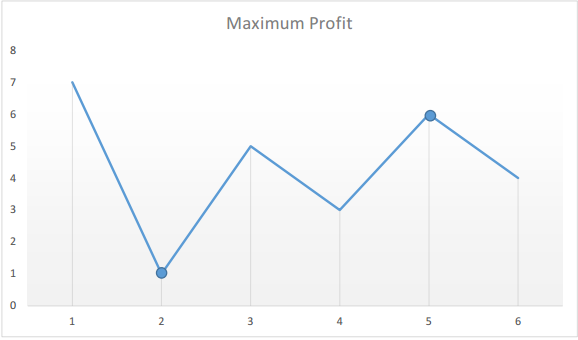
The points of interest are the peaks and valleys in the given graph. We need to find the largest peak following the smallest valley. We can maintain two variables - minprice and maxprofit corresponding to the smallest valley and maximum profit (maximum difference between selling price and minprice) obtained so far respectively.
# Solution using Kadane's Algorithm
# O(n) Time | O(1) Space - where n is the length of the input array
def maxProfit(prices):
# EDGE: If input array is empty, return 0
if len(prices) < 1:
return 0
# 1: Initialise minBuyPriceEndingHere pointer at the beginning of array and maxProfit value to keep track of max profits so far
minBuyPriceEndingHere = prices[0] # Minimum value of elements traversed so far
maxProfitSoFar = 0 # Maximum value of profit calculated so far (profit = currentPrice - minBuyPriceEndingHere)
# 2: Traverse the array and compute for each value
for currentPrice in prices:
# 3: Using Kadane's algorithm, calculate minBuyPriceEndingHere and maxProfitSoFar with min and max functions for each element traversed so far
minBuyPriceEndingHere = min(minBuyPriceEndingHere, currentPrice)
profit = currentPrice - minBuyPriceEndingHere # Calculate current profit using currentPrice
maxProfitSoFar = max(maxProfitSoFar, profit)
return maxProfitSoFar
# Kadane's Algorithm Concept
# O(n) Time | O(1) Space - where n is the length of the input array
def kadane(array):
# 1: Initialise maxSumEndingHere pointer at the beginning of array and maxSoFar to keep track of max sum so far
maxSumEndingHere = array[0] # Summation of all adjacent elements up to this point
maxSoFar = array[0] # Maximum value of summations calculated so far
# 2: Traverse the array and compute for each element
for idx in range(1, len(array)):
currentNum = array[idx]
# 3: Using Kadane's algorithm, calculate maxSumEndingHere and maxSoFar with max functions for each element traversed so far
maxSumEndingHere = max(currentNum, maxSumEndingHere + currentNum)
maxSoFar = max(maxSoFar, maxSumEndingHere)
return maxSoFar✅ Kadane's Algorithm:
- Traverse the array once and compute for each element using Kadane's algorithm
- minBuyPriceEndingHere = min(minBuyPriceEndingHere, currentPrice)
- profit = currentPrice - minBuyPriceEndingHere
- maxProfitSoFar = max(maxProfitSoFar, profit)
- Set Matrix Zeroes - https://leetcode.com/problems/set-matrix-zeroes/
- ✅ Spiral Matrix - https://leetcode.com/problems/spiral-matrix/
- Rotate Image - https://leetcode.com/problems/rotate-image/
- Word Search - https://leetcode.com/problems/word-search/
- Given an m x n matrix, return all elements of the matrix in spiral order.
- Input:
matrix = [[1,2,3],[4,5,6],[7,8,9]] - Output:
[1,2,3,6,9,8,7,4,5]
# O(n) Time | O(n) Space
def spiralTraverse(array):
# 1: Initialise row pointers and col pointers on all 4 ends of the 2-D matrix.
startRow, endRow = 0, len(array) - 1 # Iteration 1: 0, 3
startCol, endCol = 0, len(array[0]) - 1 # Iteration 1: 0, 3
ans = []
# 2: While the row and col pointers have not traversed until the other ends,
while startRow <= endRow and startCol <= endCol:
# 3: Append col values from "left" to "right" columns
for col in range(startCol, endCol + 1): # Iteration 1: 0, 4 (0 -> 3) Iteration 2: 1, 3 (1 -> 2)
ans.append(array[startRow][col])
# 4: Append row values from "top + 1" to "bottom" rows
for row in range(startRow + 1, endRow + 1): # Iteration 1: 1, 4 (1 -> 3) Iteration 2: 2, 3 (2)
ans.append(array[row][endCol])
# 5: Append col values from "right - 1" to "left" columns
for col in reversed(range(startCol, endCol)): # Iteration 1: 3, 0 (2 -> 0) Iteration 2: 2, 1 (1)
# EDGE 1: Break iteration if there is only 1 row left in the centre of matrix (to avoid double counting)
if startRow == endRow:
break
ans.append(array[endRow][col])
# 6: Append row values from "bottom - 1" to "top + 1" rows
for row in reversed(range(startRow + 1, endRow)): # Iteration 1: 3, 1 (2 -> 1) Iteration 2: 2, 2 (BREAK)
# EDGE 2: Break iteration if there is only 1 column left in the centre of matrix (to avoid double counting)
if startCol == endCol:
break
ans.append(array[row][startCol])
# 7: Update all 4 edge pointers to move inwards and evaluate layer by layer
startRow += 1 # Value Updated: 1
endRow -= 1 # Value Updated: 2
startCol += 1 # Value Updated: 1
endCol -= 1 # Value Updated: 2
return ans✅ TWO POINTERS: Keep track of visited cells; keep track of boundaries, layer-by-layer
- Insert Interval - https://leetcode.com/problems/insert-interval/
- ✅ Merge Intervals - https://leetcode.com/problems/merge-intervals/
- Non-overlapping Intervals - https://leetcode.com/problems/non-overlapping-intervals/
- Meeting Rooms (Leetcode Premium) - https://leetcode.com/problems/meeting-rooms/
- Meeting Rooms II (Leetcode Premium) - https://leetcode.com/problems/meeting-rooms-ii/
Given an array of intervals where
intervals[i] = [starti, endi], merge all overlapping intervals, and return an array of the non-overlapping intervals that cover all the intervals in the input.
- Input:
intervals = [[1,3],[2,6],[8,10],[15,18]] - Output:
[[1,6],[8,10],[15,18]] - Explanation:
Since intervals [1,3] and [2,6] overlaps, merge them into [1,6].
# O(nlogn) Time | O(n) Space
def mergeOverlappingIntervals(intervals):
# 1: Sort the input array of intervals based on the 1st elements of each interval
sortedIntervals = sorted(intervals, key=lambda x: x[0])
# 2: Initialise currentInterval with the 1st sorted interval and append it to the answer mergedIntervals since we need at least 1 interval to compare with
mergedIntervals = []
currentInterval = sortedIntervals[0]
mergedIntervals.append(currentInterval)
# 3: Loop through each interval in the sortedIntervals array,
for nextInterval in sortedIntervals:
# 4: Decompose currentInterval into 2 variables (e.g.: currentInterval = [1, 2] gives _ = 1 and currentIntervalEnd = 2)
_, currentIntervalEnd = currentInterval
# 5: Decompose nextInterval into 2 variables (e.g.: nextInterval = [3, 5] gives nextIntervalStart = 3 and nextIntervalEnd = 5)
nextIntervalStart, nextIntervalEnd = nextInterval
# 6: Check if two intervals are overlapping by comparing the intervalEnd value of the current interval is bigger or equal than the intervalStart value of the next interval
if currentIntervalEnd >= nextIntervalStart:
# 7: Mutate the currentIntervalEnd to be the highest number between the intervalEnd values of the currentInterval and nextInterval
currentInterval[1] = max(currentIntervalEnd, nextIntervalEnd)
else:
# 8: Else if there are no overlapping, update currentInterval with new interval and immediately append to the answer
currentInterval = nextInterval
mergedIntervals.append(currentInterval)
return mergedIntervals✅ SORT, CHECK AND MUTATE: Sort intervals by start values, compare end value and start value of adjacent intervals to check for overlap, mutate end value of answer interval to encapsulate merges, iterate checks for all intervals
- ✅ Longest Substring Without Repeating Characters - https://leetcode.com/problems/longest-substring-without-repeating-characters/
- Longest Repeating Character Replacement - https://leetcode.com/problems/longest-repeating-character-replacement/
- ✅ Minimum Window Substring - https://leetcode.com/problems/minimum-window-substring/
- Valid Anagram - https://leetcode.com/problems/valid-anagram/
- ✅ Group Anagrams - https://leetcode.com/problems/group-anagrams/
- ✅ Valid Parentheses - https://leetcode.com/problems/valid-parentheses/
- ✅ Valid Palindrome - https://leetcode.com/problems/valid-palindrome/
- ✅ Longest Palindromic Substring - https://leetcode.com/problems/longest-palindromic-substring/
- ✅ Palindromic Substrings - https://leetcode.com/problems/palindromic-substrings/
- Encode and Decode Strings (Leetcode Premium) - https://leetcode.com/problems/encode-and-decode-strings/
Given an integer n, return a string array answer (1-indexed) where:
answer[i] == "FizzBuzz"if i is divisible by 3 and 5.answer[i] == "Fizz"if i is divisible by 3.answer[i] == "Buzz"if i is divisible by 5.answer[i] == i(as a string) if none of the above conditions are true.
Example 1:
- Input:
n = 3 - Output:
["1","2","Fizz"]
Example 2:
- Input:
n = 5 - Output:
["1","2","Fizz","4","Buzz"]
Example 3:
- Input:
n = 15 - Output:
["1","2","Fizz","4","Buzz","Fizz","7","8","Fizz","Buzz","11","Fizz","13","14","FizzBuzz"]
# O(n) Time | O(1) Space
def fizzBuzz(n):
result = []
for idx in range(1, n + 1):
currentString = ""
if idx % 3 == 0:
currentString += "Fizz"
if idx % 5 == 0:
currentString += "Buzz"
if not currentString:
result.append(str(idx))
else:
result.append(currentString)
return result
- Given a non-empty string of lowercase letters and a non-negative integer representing a key, write a function that returns a new string obtained by shifting every letter in the input string by k positions in the alphabet, where k is the key.
- Note that letters should "wrap" around the alphabet; in other words, the letter
zshifted by one returns the lettera
- Input:
string = xyz, key = 2 - Output:
zab
# O(n) Time | O(n) Space
def caesarCipherEncryptor(string, key):
newLetters = []
newKey = key % 26 # ensures that keys larger than 26 are reseted back to 0 (to preserve key range of 0-26)
for letter in string:
newLetters.append(getNewLetter(letter, newKey))
return "".join(newLetters) # converts array of convertedLetters into a continuous string
def getNewLetter(letter, key):
newLetterCode = ord(letter) + key
if newLetterCode <= 122:
return chr(newLetterCode)
else:
return chr(96 + newLetterCode % 122)✅ ORD/CHR AND MODULO:
ASCII: A = 96, Z = 122- Loop each letter, convert letter into ASCII + KEY using ORD, then re-convert using CHR while handling for Z->A wrapping using MODULO 122
- Write a function that takes in a string of lowercase English-alphabet letters and returns the index of the string's first non-repeating character.
- The first non-repeating character is the first character in a string that occurs only once.
- If the input string doesn't have any non-repeating characters, your function should return
-1
- Input:
string = "abcdcaf" - Output:
1 - Explanation:
The first non-repeating character is "b" and is found at index 1
# O(n) Time | O(1) Space - where n is the length of the input string
# O(1) Space because input string only has lowercase English-alphabet letters hence the hash table will never have more than 26 character frequencies.
def firstNonRepeatingCharacter(string):
# 1: Initialise a dictionary to keep track of the frequencies of each character of the input string
charFrequencies = {}
# 2: Loop through each character of the input string
for char in string:
# 3: Create a key-value pair - where the key is the currentChar and value is the frequency of that char.
charFrequencies[char] = charFrequencies.get(char, 0) + 1
# 4: During traversal, if currentChar is found again in the charFrequencies dictionary, the frequency value will be incremented by 1. This keeps track of the character's frequency when iterating through the input string.
"""
# dict.get() method:
# param (1): key to be searched in the dictionary
# param (2): default value to be returned if key is not found
"""
# 3: Once we have built our charFrequencies hash table, iterate through the input string again
for idx in range(len(string)):
# 4: Extract the currentChar from currentIdx
char = string[idx]
# 5: If currentChar has a frequency of 1 based on the hash table,
if charFrequencies[char] == 1:
# 6: Return the idx immediately as this will be the first non repeating (unique) character
return idx
# 7: Otherwise, there are no unique characters, so return -1
return -1✅ DICTIONARIES: Loop through each char and store the frequencies of each char using charFrequencies[char] = charFrequencies.get(char, 0) + 1. Then, loop through each char again and if charFrequencies[char] == 1, return idx else return -1
- Given a string paragraph and a string array of the banned words banned, return the most frequent word that is not banned.
- It is guaranteed there is at least one word that is not banned, and that the answer is unique.
- The words in paragraph are case-insensitive and the answer should be returned in lowercase.
Example 1:
- Input: paragraph =
"Bob hit a ball, the hit BALL flew far after it was hit.", banned =["hit"] - Output:
"ball" - Explanation:
"hit"occurs 3 times, but it is a banned word."ball"occurs twice (and no other word does), so it is the most frequent non-banned word in the paragraph.- Note that words in the paragraph are not case sensitive, that punctuation is ignored (even if adjacent to words, such as
"ball,"), and that"hit"isn't the answer even though it occurs more because it is banned.
Example 2:
- Input: paragraph =
"a.", banned =[] - Output:
"a"
Constraints:
1 <= paragraph.length <= 1000- paragraph consists of English letters,
space ' ', or one of the symbols:"!?',;.". 0 <= banned.length <= 1001 <= banned[i].length <= 10banned[i]consists of only lowercase English letters.
# O(n) Time | O(1) Space - where n is the length of the input string
# O(1) Space because input string only has lowercase English-alphabet letters hence the hash table will never have more than 26 character frequencies.
import re
def mostCommonWord(string, banned):
# 1: Convert string into list of lowercase words
words = re.findall(r'\w+', string.lower())
legalWords = []
# 2: Append only allowed words into legalWords[]
for word in words:
if word not in set(banned):
legalWords.append(word)
# 3: Create a hashmap of word:frequency
wordFrequency = {}
for word in legalWords:
if word not in wordFrequency:
wordFrequency[word] = 0
wordFrequency[word] += 1
# 4: Return the word with the highest frequency
return max(wordFrequency, key=wordFrequency.get)
- You're given a string of available characters and a string representing a document that you need to generate.
- Write a function that determines if you can generate the document using the available characters.
- If you can generate the document, your function should return
true; otherwise, it should returnfalse- You're only able to generate the document if the frequency of unique characters in the characters string is greater than or equal to the frequency of unique characters iSthe document string.
- For example, if you're given characters =
"abcabc"and document ="aabbccc"you cannot generate the document because you're missing onec.- The document that you need to create may contain any characters, including special characters, capital letters, numbers, and spaces.
- Note: You can always generate the empty string
""
- Input: characters =
"Bste!hetsi ogEAxpelrt x "document ="AlgoExpert is the Best!" - Output:
true
# O(m * (n + m)) Time | O(1) Space
# where n is the number of characters
# where m is the length of the document
def generateDocument(chars, doc):
# 1: For each character in doc, calculate frequency of that char in chars and doc input strings
for currentChar in doc:
docFrequency = countCharFrequency(currentChar, doc)
charsFrequency = countCharFrequency(currentChar, chars)
# 2: At any point, if frequency of currentChar is not the same for both input strings (chars and doc),
if docFrequency > charsFrequency:
return False # 3: Return False as mismatch in character frequencies means chars and doc are not the same
return True # 4: Else docFrequency == charsFrequency, so return True as both chars and doc are the same
# 1: Helper function to calculate the number of targetchar occurrences in inputString
def countCharFrequency(targetChar, inputString):
frequency = 0
# 2: For each char in inputString,
for char in inputString:
if char == targetChar: # 3: If currentChar == targetChar, increment the frequency by 1
frequency += 1
return frequency
- Write a function that takes in a non-empty string and returns its run-length encoding.
- From Wikipedia, "run-length encoding is a form of lossless data compression in which runs of data are stored as a single data value and count, rather than as the original run."
- For this problem, a run of data is any sequence of consecutive, identical characters.
- So the run "AAA" would be run-length-encoded as "3A"
- To make things more complicated, however, the input string can contain all sorts of special characters, including numbers. And since encoded data must be decodable, this means that we can't naively run-length-encode long runs.
- For example, the run "AAAAAAAAAAAA" (12
As), can't naively be encoded as "12A" , since this string can be decoded as either "AAAAAAAAAAAA" Or "1AA".- Thus, long runs (runs of 10 or more characters) should be encoded in a split fashion; the aforementioned run should be encoded as "9A3A"
Example 1
- Input: string =
"AAAAAAAAAAAAABBCCCCDD" - Output:
"9A4A2B4C2D"
# O(n) Time | O(n) Space - where n is the length of the input string
def runLengthEncoding(string):
encodedString = []
currentLength = 1 # Since input string is always non-empty, first run will be of at least length 1
# 1: Loop through each char of string except the first char
for idx in range(1, len(string)):
# 2: Set currentChar at idx* and previousChar at idx* - 1
currentChar = string[idx]
previousChar = string[idx - 1]
# 4: If adjacent characters do not match or currentLength has reached 9,
if currentChar != previousChar or currentLength == 9:
# 5: Append the length of repeating chars followed by that repeating char
encodedString.append(str(currentLength))
encodedString.append(previousChar)
currentLength = 0 # 5: Reset currentLength to 0
# 3: If adjacent characters are matching, keep incrementing the running currentLength to keep track of the number of repetitions
currentLength += 1
# 6: Handle the last running characters since if currentChar != previousChar check was skipped
encodedString.append(str(currentLength))
encodedString.append(string[len(string) - 1])
return "".join(encodedString) # 7: Convert list to string✅ String Manipulation
- Loop through each char of string
- If two adjacent chars do not match, keep incrementing currentLength* to track length of repeating chars
- If two adjacent chars match, append str(currentLength) and previousChar into answer
- Handle the last running characters by appending str(currentLength) and lastChar
- You are given an array of logs. Each log is a space-delimited string of words, where the first word is the identifier.
- There are two types of logs: Letter-logs: All words (except the identifier) consist of lowercase English letters. Digit-logs: All words (except the identifier) consist of digits.
- Reorder these logs so that: 1. The letter-logs come before all digit-logs. 2. The letter-logs are sorted lexicographically by their contents. If their contents are the same, then sort them lexicographically by their identifiers. 3. The digit-logs maintain their relative ordering. Return the final order of the logs.
Example 1:
- Input: logs =
["dig1 8 1 5 1","let1 art can","dig2 3 6","let2 own kit dig","let3 art zero"] - Output:
["let1 art can","let3 art zero","let2 own kit dig","dig1 8 1 5 1","dig2 3 6"] - Explanation: The letter-log contents are all different, so their ordering is
"art can","art zero","own kit dig". The digit-logs have a relative order of"dig1 8 1 5 1","dig2 3 6".
Example 2:
- Input: logs =
["a1 9 2 3 1","g1 act car","zo4 4 7","ab1 off key dog","a8 act zoo"] - Output:
["g1 act car","a8 act zoo","ab1 off key dog","a1 9 2 3 1","zo4 4 7"]
Constraints:
1 <= logs.length <= 1003 <= logs[i].length <= 100- All the tokens of
logs[i]are separated by a single space. logs[i]is guaranteed to have an identifier and at least one word after the identifier.
def reorder(logs):
digits, letters = [], []
# e.g.: logs = ["dig1 8 1 5 1","let1 art can","dig2 3 6","let2 own kit dig","let3 art zero"]
for log in logs:
# 1: Divide logs into two parts, digit logs and letter logs
# This is based on the 2nd element after the split (e.g.: 8, art, 3, own, art)
if log.split()[1].isdigit():
# Note: Relative order of digit logs are preserved as we traverse the logs
digits.append(log) # ['dig1 8 1 5 1', 'dig2 3 6']
else:
letters.append(log) # ['let1 art can', 'let2 own kit dig', 'let3 art zero']
# 2: Sort letter logs by 1st element (identifiers) (e.g.: let1, let2, let3)
letters.sort(key = lambda x : x.split()[0]) # ['let1 art can', 'let2 own kit dig', 'let3 art zero']
# 3: Sort letter logs by remaining elements (contents) (e.g.: art can, art zero, own kit dig)
letters.sort(key = lambda x : x.split()[1:]) # ['let1 art can', 'let3 art zero', 'let2 own kit dig']
# 4: Combine digit logs with sorted letter logs
result = letters + digits
return result # ['let1 art can', 'let3 art zero', 'let2 own kit dig', 'dig1 8 1 5 1', 'dig2 3 6']| Symbol | Value |
|---|---|
| I | 1 |
| V | 5 |
| X | 10 |
| L | 50 |
| C | 100 |
| D | 500 |
| M | 1000 |
- Roman numerals are represented by seven different symbols:
I, V, X, L, C, D and M.- For example, 2 is written as
IIin Roman numeral, just two one's added together. 12 is written asXII, which is simplyX + II. The number 27 is written asXXVII, which isXX + V + II.- Roman numerals are usually written largest to smallest from left to right.
- However, the numeral for four is not
IIII. Instead, the number four is written asIV. Because the one is before the five we subtract it making four. The same principle applies to the number nine, which is written asIX.
There are six instances where subtraction is used:
- I can be placed before V (5) and X (10) to make 4 and 9.
- X can be placed before L (50) and C (100) to make 40 and 90.
- C can be placed before D (500) and M (1000) to make 400 and 900.
Given a roman numeral, convert it to an integer.
Example 1:
- Input: s =
"III" - Output: 3
- Explanation: III = 3
Example 2:
- Input: s =
"LVIII" - Output: 58
- Explanation:
L = 50, V= 5, III = 3
Example 3:
- Input: s =
"MCMXCIV" - Output: 1994
- Explanation:
M = 1000, CM = 900, XC = 90 and IV = 4
Constraints:
1 <= s.length <= 15- s contains only the characters
('I', 'V', 'X', 'L', 'C', 'D', 'M') - It is guaranteed that s is a valid roman numeral in the range
[1, 3999]
# O(n) Time - we iterate each element in the input at most once and for each element we spend a constant amount of time.
# O(1) Space - we have used only constant space to store the hash table and the result.
# O(7) Hash Table and O(1) result array asymptotically converges to O(1) Space
def romanToInteger(string):
# 1: Initiate hash map that maps roman numerals to integers
table = {
"I": 1,
"V": 5,
"X": 10,
"L": 50,
"C": 100,
"D": 500,
"M": 1000
}
result = 0
# Explanation:
# IV - If string[idx] < string[idx + 1],
# I will be a negative number and V will be a positive number so -= string[idx]
# VI - If string[idx] > string[idx + 1],
# V will be a positive number and I will be a negative number so += string[idx]
# 2: Iterate through each character of string,
for idx in range(len(string)):
# 3: if idx* is not out-of-bounds and roman at idx is smaller than roman at idx + 1,
if idx < len(string) - 1 and table[string[idx]] < table[string[idx + 1]]:
result -= table[string[idx]] # 4: roman at idx is a negative number so subtract from result
else: # 5: if roman at idx is bigger than roman at idx + 1,
result += table[string[idx]] # 6: roman at idx is a positive number so add from result
return result| Symbol | Value |
|---|---|
| I | 1 |
| V | 5 |
| X | 10 |
| L | 50 |
| C | 100 |
| D | 500 |
| M | 1000 |
- Roman numerals are represented by seven different symbols:
I, V, X, L, C, D and M.- For example, 2 is written as
IIin Roman numeral, just two one's added together. 12 is written asXII, which is simplyX + II. The number 27 is written asXXVII, which isXX + V + II.- Roman numerals are usually written largest to smallest from left to right.
- However, the numeral for four is not
IIII. Instead, the number four is written asIV. Because the one is before the five we subtract it making four. The same principle applies to the number nine, which is written asIX.
There are six instances where subtraction is used:
- I can be placed before V (5) and X (10) to make 4 (IV) and 9 (IX).
- X can be placed before L (50) and C (100) to make 40 (XL) and 90 (XC).
- C can be placed before D (500) and M (1000) to make 400 (CD) and 900 (CM).
Given an integer, convert it to a roman numeral.
Example 1:
- Input: num = 3
- Output:
"III" - Explanation: 3 is represented as 3 ones.
Example 2:
- Input: num = 58
- Output:
"LVIII" - Explanation: L = 50, V = 5, III = 3.
Example 3:
- Input: num = 1994
- Output:
"MCMXCIV" - Explanation: M = 1000, CM = 900, XC = 90 and IV = 4.
Constraints:
1 <= num <= 3999
# O(n) Time where n is the number of elements in the array
# O(1) Space - No extra auxiliary memory is used
def integerToRoman(num):
table = {
1000: 'M',
900: 'CM',
500: 'D',
400: 'CD',
100: 'C',
90: 'XC',
50: 'L',
40: 'XL',
10: 'X',
9: 'IX',
5: 'V',
4: 'IV',
1: 'I'
}
# Explanation:
# Say our input is 2500. From the hash table, we start with the 1000:M k-v pair,
# we compute num // key = 2500 // 1000 = 2, so need to insert roman M twice
# Hence, result += 2 * M = MM
# Then, we move on to the next bit so num = 2500 % 1000 = 500
# We then repeat the above steps using the next decreasing k-v pair which is 900:CM
result = ""
for key in table:
# EDGE: If the input integer is 0 or negative, break the function
if num <= 0:
break
# 1: Compute how many Roman characters will be appended to the result string using round down operation
result += (num // key) * table[key]
num %= key # 2: Eliminate left-most bit and move on to the next integer to compute
return resultImplement the myAtoi(string s) function, which converts a string to a 32-bit signed integer (similar to C/C++'s atoi function).
The algorithm for myAtoi(string s) is as follows:
- Read in and ignore any leading whitespace.
- Check if the next character (if not already at the end of the string) is '-' or '+'. Read this character in if it is either.
- This determines if the final result is negative or positive respectively. Assume the result is positive if neither is present.
- Read in next the characters until the next non-digit character or the end of the input is reached.
- The rest of the string is ignored.
- Convert these digits into an integer (i.e.
"123" -> 123,"0032" -> 32).- If no digits were read, then the integer is 0. Change the sign as necessary (from step 2).
- If the integer is out of the 32-bit signed integer range [-231, 231 - 1], then clamp the integer so that it remains in the range.
- Specifically, integers less than -231 should be clamped to -231, and integers greater than 231 - 1 should be clamped to 231 - 1.
- Return the integer as the final result.
Note: Only the space character
' 'is considered a whitespace character. Do not ignore any characters other than the leading whitespace or the rest of the string after the digits.
Example 1:
- Input: s =
"42" - Output: 42
- Explanation: The underlined characters are what is read in, the caret is the current reader position.
- Step 1: "42" (no characters read because there is no leading whitespace)
- Step 2: "42" (no characters read because there is neither a '-' nor '+')
- Step 3: "42" ("42" is read in)
- The parsed integer is 42. Since 42 is in the range
[-231, 231 - 1], the final result is 42.
Example 2:
- Input: s =
" -42" - Output: -42
- Explanation:
- Step 1: " -42" (leading whitespace is read and ignored)
- Step 2: " -42" ('-' is read, so the result should be negative)
- Step 3: " -42" ("42" is read in)
- The parsed integer is -42. Since -42 is in the range
[-231, 231 - 1], the final result is -42.
Example 3:
- Input: s =
"4193 with words" - Output: 4193
- Explanation:
- Step 1: "4193 with words" (no characters read because there is no leading whitespace)
- Step 2: "4193 with words" (no characters read because there is neither a '-' nor '+')
- Step 3: "4193 with words" ("4193" is read in; reading stops because the next character is a non-digit)
- The parsed integer is 4193. Since 4193 is in the range
[-231, 231 - 1], the final result is 4193.
Constraints:
0 <= s.length <= 200- s consists of English letters (lower-case and upper-case), digits
(0-9),' ','+','-', and'.'.
# O(n) Time - we visit each character in the input at most once and for each character we spend a constant amount of time.
# O(1) Space - we have used only constant space to store the sign and the result.
def stringToInteger(string: str) -> int:
sign, idx, result = 1, 0, 0
# 1: Set the min/max values for a 32-bit system.
MAX_INT = 2 ** 31 - 1
MIN_INT = -2 ** 31
# Note: while idx < len(string): idx += 1 means while we're not in the end of string, keep iterating
# 2: Skip all whitespaces from the beginning of the input string.
while idx < len(string) and string[idx] == ' ':
idx += 1
# 3: Set sign = +1, if it's positive number, otherwise sign = -1.
if idx < len(string) and string[idx] == '+':
sign = 1
idx += 1
elif idx < len(string) and string[idx] == '-':
sign = -1
idx += 1
# 4: Keep traversing digits of input and stop if it is not a digit.
# The end of the string also counts as a non-digit character.
while idx < len(string) and string[idx].isdigit():
digit = int(string[idx]) # Convert current string[idx] to integer
# 5: Append current digit to the result.
result = 10 * result + digit
idx += 1
# Say for input string 123,
# Iteration 1: result = 0, digit = 1 so result = 10 * 0 + 1 = 1
# Iteration 2: result = 1, digit = 2 so result = 10 * 1 + 2 = 12
# Iteration 3: result = 12, digit = 3 so result = 10 * 12 + 3 = 123
# 6: Multiply result with its sign.
result = sign * result
if result < 0: # 7: If result is negative,
return max(result, MIN_INT) # default to return MIN_INT if result < MIN_INT
return min(result, MAX_INT) # 8: Elif result is positive, default to return MAX_INT if result > MAX_INT
- Write a function that takes in a string of words separated by one or more whitespaces and returns a string that has these words in reverse order.
- For example, given the string
"tim is great", your function should return"great is tim"- For this problem, a word can contain special characters, punctuation, and numbers. The words in the string will be separated by one or more whitespaces, and the reversed string must contain the same whitespaces as the original string.
- For example, given the still
"whitespaces 4"you would be expected to return"4 whitespaces".- Note that you're not allowed to to use any built-in
splitorreversemethods/functions.- However, you are allowed to use a built-in join method/function.
- Also note that the input string isn't guaranteed to always contain words.
- Input: string =
"AlgoExpert is the best!" - Output:
"best! the is AlgoExpert"
# METHOD 1
# O(n) Time | O(n) Space - where n is the length of the string
def reverseWordsInString(string):
words = []
start = 0
# split() method implementation
for idx, char in enumerate(string): # 1: Loop through each char of string
# 2: If char is a whitespace, append spliced string (consisting of all chars between start* and idx* before that whitespace) to result
if char == " ":
words.append(string[start:idx])
start = idx # 3: Reset start pointer to next idx
# 4: If start pointer is still pointing at a whitespace, append whitespace character to result
elif string[start] == " ":
words.append(" ")
start = idx # 5: Reset start pointer to next idx
# 6: Handle the last word of the string
# start* will still point at the start of the last word
words.append(string[start:])
reverseList(words) # 7: Call the reverse list helper function to reverse all words in list
return "".join(words) # 8: Convert list to string
# reverse() method implementation
def reverseList(list):
# Use two pointers that move inwards while swapping elements
start, end = 0, len(list) - 1
while start < end:
list[start], list[end] = list[end], list[start]
start += 1
end -= 1
# METHOD 2
def reverseWordsInString(string):
chars = [char for char in string] # Pre-allocate space for chars list
reverseListRange(chars, 0, len(chars) - 1)
start = 0
while start < len(chars):
end = start
while end < len(chars) and chars[end] != " ":
end += 1
reverseListRange(chars, start, end - 1)
start = end + 1
return "".join(chars)
def reverseListRange(list, start, end):
while start < end:
list[start], list[end] = list[end], list[start]
start += 1
end -= 1
- Given an array of strings
strs, group the anagrams together. You can return the answer in any order.- An Anagram is a word or phrase formed by rearranging the letters of a different word or phrase, typically using all the original letters exactly once.
- Input:
strs = ["eat","tea","tan","ate","nat","bat"] - Output:
[["bat"],["nat","tan"],["ate","eat","tea"]]
# O(w * nlog(n)) time | O(w * n) space
# w - the number of words
# n - the length of the longest word
def groupAnagrams(words):
anagrams = {}
for word in words:
sortedWord = "".join(sorted(word))
if sortedWord in anagrams:
anagrams[sortedWord].append(word)
else:
anagrams[sortedWord] = [word]
return list(anagrams.values())✅ HASH TABLE: Loop and sort each word, append sortedWord/List[word] key/value pairs in anagrams_dict, if sortedWord is in anagrams_dict, set anagrams_dict[sortedWord].append(word), else set anagrams[sortedWord] = [word]. Return anagram_dict.values()
- Write a function that takes in a string made up of brackets (
(,[,{,),], and}) and other optional characters.- The function should return a boolean representing whether the string is balanced with regards to brackets.
- A string is said to be balanced if it has as many opening brackets of a certain types as it has closing brackets of that type and if no bracket is unmatched.
- Note that an opening bracket can't match a corresponding closing bracket that comes before it, and similarly, a closing bracket can't match a corresponding opening bracket that comes after it.
- Also, brackets can't overlap each other as in
[(])
- Input:
string = "([])(){}(())()()" - Output:
true
def isValidParentheses(string):
# 1: Initialise a mapping of parentheses (where left brackets are keys and right brackets are values)
dict = {'(':')', '{':'}','[':']'}
stack = []
# 2: Loop through every character of the input string
for char in string:
# 3: If the character is a left bracket (, {, [, it is a valid key in dict, so we append it to the stack
if char in dict:
stack.append(char)
# 4: Else if it's a right bracket ), }, ], check if stack is empty or check if the brackets are matching
elif len(stack) == 0 or dict[stack.pop()] != char:
return False
# 5: Finally, check if the stack still contains any unmatched left bracket
return len(stack) == 0# O(n) Time | O(n) Space
def balancedBrackets(string):
# 1: Initialise variables and dictionaries of brackets
openingBrackets = "([{"
closingBrackets = ")]}"
matchingBrackets = {")": "(", "]": "[", "}": "{"}
stack = []
# 2: Loop through every character of the input string
for char in string:
# 3: If currentChar is any of the openingBrackets, append it to the stack
if char in openingBrackets:
stack.append(char)
# 4: Else if currentChar is any of the closingBrackets, perform a series of checks
elif char in closingBrackets:
# 5: If the stack is empty (while our 1st char was a closing bracket), this string is not a balanced bracket, return False
if len(stack) == 0:
return False
# 6: If opening bracket at the final element of the stack is equal to the closing bracket of currentChar, pop the stack.
# When looking up the dictionary using currentChar (being a closing bracket in this case) as the key, we obtain its equivalent openingBracket value. But if the final element of the stack is also equal to this openingBracket value, we cancel out these balanced brackets by popping the stack.
if stack[-1] == matchingBrackets[char]:
stack.pop()
# 7: Else if the final element of the stack is not equals to any matching brackets from currentChar, this string is not a balanced bracket, return False
else:
return False
# 8: Else finally, return the Boolean based on whether the stack is empty or not.
return len(stack) == 0✅ DICTIONARIES AND STACKS: Initialise dictionary of matching brackets. Loop through each character of input string. If char is openingBrackets, append to stack. If char is closingBrackets, do a series of checks. If stack is empty, return False. If opening bracket at the final element of stack matches with the closing bracket of currentChar, pop the stack, else return False. Else finally, return len(stack) == 0
Given n pairs of parentheses, write a function to generate all combinations of well-formed parentheses.
Example 1:
- Input:
n = 3 - Output:
["((()))","(()())","(())()","()(())","()()()"]
Example 2:
- Input:
n = 1 - Output:
["()"]
Constraints:
1 <= n <= 8
# O(4n/sqrt(2n)) Time - Each valid sequence has at most n steps during the backtracking procedure.
# O(4n/sqrt(2n)) Space - Each valid sequence has at most n steps during the backtracking procedure and using O(n) space to store the sequence.
def generateParentheses(n): # n - the number of matching bracket pairs
result = []
stack = []
def backtrack(numberOfOpen, numberOfClosed):
# 2: Base case if we have reached n number of open and close brackets,
# append generated brackets to result
if numberOfOpen == numberOfClosed == n:
result.append("".join(stack))
# 3: If numberOfOpenBrackets < n, append an open bracket and increment numberOfOpen in recursive function
if numberOfOpen < n: # Note: We can always append open brackets up to n-times
stack.append("(")
backtrack(numberOfOpen + 1, numberOfClosed)
stack.pop() # stack is a global variable, clean up the stack for next usage
# 4: If numberOfClosedBrackets < numberOfOpenBrackets, append a closed bracket and increment numberOfClosed in recursive function
if numberOfClosed < numberOfOpen: # Note: We can only append closed brackets if its equivalent open bracket is already present first
stack.append(")")
backtrack(numberOfOpen, numberOfClosed + 1)
stack.pop() # stack is a global variable, clean up the stack for next usage
# 1: Recursively call the backtrack function with initial values of 0 open and close brackets
backtrack(0, 0)
return result
- You're given a string of length 12 or smaller, containing only digits. Write a function that returns all the possible IP addresses that can be created by inserting three
.s in the string.- An IP address is a sequence of four positive integers that are separated by
.s, where each individual integer is within the range0 - 255, inclusive.- An IP address isn't valid if any of the individual integers contains leading
0s.- For example,
"192.168.0.1"is a valid IP address, but"192.168.00.1"and"192.168.0.01"aren't, because they contain00and01, respectively.- Another example of a valid IP address is
"99.1.1.10"; conversely,"991.1.1.0"isn't valid, because"991"is greater than 255.- Your function should return the IP addresses in string format and in no particular order. If no valid IP addresses can be created from the string, your function should return an empty list.
- Input:
string = "1921680" - Output:
['1.9.216.80', '1.92.16.80', '1.92.168.0', '19.2.16.80', '19.2.168.0', '19.21.6.80', '19.21.68.0', '19.216.8.0', '192.1.6.80', '192.1.68.0', '192.16.8.0']
# O(1) Time | O(1) Space
# Time Complexity: Since an IP address is a 32 bit integer (e.g.: 0-255.0-255.0-255.0-255), you will only need to compute at most at a constant 2^32 numbers hence O(2^32) which can be reduced to O(1). The size of the input, n is independent and 2^32 is the absolute constant upper bound.
# Space Complexity: Since you can only generate a list that is at most 2^32 IP addresses in it (2^32 being the absolute constant upper bound), the space complexity is O(2^32) which can be reduced to O(1).
def validIPAddresses(string):
ipAddressesFound = []
# [192 . 1 . 68 . 0]
# [ i j k ] # i, j, k pointers represent the dots in the IP adddresses
# For the 1st octet, you can only place the dot at positions 1 - 3. The pointer i gives a range to slice the string for the first IP octet.
for i in range(1, min(len(string), 4)): # We start at range 1 so that we will never have an empty string
currentIPAddressParts = ['', '', '', '']
currentIPAddressParts[0] = string[:i] # slice the input string until pointer i for the 1st IP octet
if not isValidPart(currentIPAddressParts[0]): # then check of this sliced string is a valid IP (0-255) with not leading zeroes (e.g.: 01)
continue # skip if 1st IP octet is invalid
# For the 2nd octet, we select a range (for j) after pointer i and spanning at most 3 digits (to honour the valid IP range of 0-255)
for j in range(i + 1, i + min(len(string) - i, 4)):
currentIPAddressParts[1] = string[i:j] # slice the input string starting from index i to j for 2nd IP octet
if not isValidPart(currentIPAddressParts[1]):
continue # skip if 2nd IP octet is invalid
# For the 3rd octet, we select a range (for k) after pointer j and spanning at most 3 digits (to honour the valid IP range of 0-255)
for k in range(j + 1, j + min(len(string) - j, 4)):
currentIPAddressParts[2] = string[j:k] # slice the input string starting from index j to k for 3rd IP octet
currentIPAddressParts[3] = string[k:] # slice the rest of the input string starting index k onwards for 4th IP octet
# if 3rd and 4th IP octets are valid, then we found the right combinations of IP dot pointers that make a valid IP address,
if isValidPart(currentIPAddressParts[2]) and isValidPart(currentIPAddressParts[3]):
ipAddressesFound.append('.'.join(currentIPAddressParts)) # Add the answer and delimiting all IP address octets with '.'
return ipAddressesFound
def isValidPart(string):
stringAsInt = int(string) # Converting str to int helps remove any leading zeroes in string (e.g.: 00 -> 0 and 01 -> 1)
if stringAsInt > 255:
return False
return len(string) == len(str(stringAsInt)) # Checks if there are any leading 0's✅ THREE POINTERS: Set 3 pointers i, j, k for each IP dots, create 3 FOR loops for each pointer to slice string into 4 possible IP octets and check if the octets are valid (0-255) using a helper function. If all 4 octets are valid, then join the valid octets with '.' and append to answers array.
- Given a string
queryIP, return"IPv4"if IP is a valid IPv4 address,"IPv6"if IP is a valid IPv6 address or"Neither"if IP is not a correct IP of any type.
Valid IPv4 Rules
- A valid IPv4 address is an IP in the form
"x1.x2.x3.x4"where0 <= xi <= 255andxicannot contain leading zeros.- For example,
"192.168.1.1"and"192.168.1.0"are valid IPv4 addresses but"192.168.01.1", while"192.168.1.00"and"192.168@1.1"are invalid IPv4 addresses.
Valid IPv6 Rules
- A valid IPv6 address is an IP in the form
"x1:x2:x3:x4:x5:x6:x7:x8"where:1 <= xi.length <= 4xiis a hexadecimal string which may contain digits, lower-case English letter ('a' to 'f') and upper-case English letters ('A' to 'F').- Leading zeros are allowed in
xi- For example,
"2001:0db8:85a3:0000:0000:8a2e:0370:7334"and"2001:db8:85a3:0:0:8A2E:0370:7334"are valid IPv6 addresses, while"2001:0db8:85a3::8A2E:037j:7334"and"02001:0db8:85a3:0000:0000:8a2e:0370:7334"are invalid IPv6 addresses.
Example 1:
- Input: queryIP =
"172.16.254.1" - Output:
"IPv4" - Explanation: This is a valid IPv4 address, return
"IPv4".
Example 2:
- Input: queryIP =
"2001:0db8:85a3:0:0:8A2E:0370:7334" - Output:
"IPv6" - Explanation: This is a valid IPv6 address, return
"IPv6".
Example 3:
- Input: queryIP =
"256.256.256.256" - Output:
"Neither" - Explanation: This is neither a IPv4 address nor a IPv6 address.
Constraints:
- queryIP consists only of English letters, digits and the characters
'.'and':'.
# O(1) Time because the patterns to match have constant length
# O(1) Space
import re
def validateIPAddress(IP):
chunkIPv4 = r'([0-9]|[1-9][0-9]|1[0-9][0-9]|2[0-4][0-9]|25[0-5])'
patternIPv4 = re.compile(r'^(' + chunkIPv4 + r'\.){3}' + chunkIPv4 + r'$')
chunkIPv6 = r'([0-9a-fA-F]{1,4})'
patternIPv6 = re.compile(r'^(' + chunkIPv6 + r'\:){7}' + chunkIPv6 + r'$')
if patternIPv4.match(IP):
return "IPv4"
return "IPv6" if patternIPv6.match(IP) else "Neither"
def main():
IP = "172.16.254.1" # IPv4
IP = "2001:0db8:85a3:0:0:8A2E:0370:7334" # IPv6
IP = "256.256.256.256" # Neither
print(validateIPAddress(IP))
if __name__ == "__main__":
main()| Number Range | Regex Set | Explanation |
|---|---|---|
| 0 - 9 | [0-9] | Chunk contains only one digit, from 0 to 9 |
| 10 - 99 | [1-9][0-9] | Chunk contains two digits. The first one could be from 1 to 9, and the second one from 0 to 9 |
| 100 - 199 | 1[0-9][0-9] | Chunk contains three digits, and the first one is 1. The second and the third ones could be from 0 to 9 |
| 200 - 249 | 2[0-4][0-9] | Chunk contains three digits, the first one is 2 and the second one is from 0 to 4. Then the third one could be from 0 to 9 |
| 250 - 255 | 25[0-5] | Chunk contains three digits, the first one is 2, and the second one is 5. Then the third one could be from 0 to 5 |
patternIPv4 = ^( ([0-9]|[1-9][0-9]|1[0-9][0-9]|2[0-4][0-9]|25[0-5]) \.){3} ([0-9]|[1-9][0-9]|1[0-9][0-9]|2[0-4][0-9]|25[0-5]) $
^: Matches the beginning of the string\.: Escaped dot character^(chunkIPv4\.){3}: Match 3 exact regex patterns$: Matches the ending of the string[0-9]: Set of characters to match|: Or operator
patternIPv6 = ^( ([0-9a-fA-F]{1,4}) \: ){7} ([0-9a-fA-F]{1,4}) $
^: Matches the beginning of the string\:: Escaped colon character^(chunkIPv6\:){7}: Match 7 exact regex patterns$: Matches the ending of the string[[0-9a-fA-F]: Set of characters to match
Given two version numbers,
version1andversion2, compare them.
- Version numbers consist of one or more revisions joined by a dot
'.'.- Each revision consists of digits and may contain leading zeros.
- Every revision contains at least one character.
- Revisions are 0-indexed from left to right, with the leftmost revision being revision 0, the next revision being revision 1, and so on.
- For example
2.5.33and0.1are valid version numbers.
To compare version numbers, compare their revisions in left-to-right order.
- Revisions are compared using their integer value ignoring any leading zeros.
- This means that revisions
1and001are considered equal.- If a version number does not specify a revision at an index, then treat the revision as 0.
- For example, version
1.0is less than version1.1because their revision 0s are the same, but their revision 1s are 0 and 1 respectively, and0 < 1.
Return the following:
- If
version1 < version2, return-1.- If
version1 > version2, return1.- Otherwise, return
0.
Example 1:
- Input: version1 =
"1.01", version2 ="1.001" - Output:
0 - Explanation: Ignoring leading zeroes, both
"01"and"001"represent the same integer"1".
Example 2:
- Input: version1 =
"1.0", version2 ="1.0.0" - Output:
0 - Explanation: version1 does not specify revision
2, which means it is treated as"0".
Example 3:
- Input: version1 =
"0.1", version2 ="1.1" - Output:
-1 - Explanation: version1's revision
0is"0", while version2's revision0is"1".0 < 1, soversion1 < version2.
Constraints:
1 <= version1.length,version2.length <= 500version1andversion2only contain digits and'.'.version1andversion2are valid version numbers.- All the given revisions in
version1andversion2can be stored in a 32-bit integer.
def compareVersion(version1, version2):
v1 = version1.split('.') # e.g.: "1.01" -> ["1", "0", "1"] len = 3
v2 = version2.split('.') # e.g.: "1.001" -> ["1", "0", "0", "1"] len = 4
# 1: Iterate idx* based on the larger version length
for idx in range(max(len(v1), len(v2))): # max(3, 4) = 4
# 2: Use zeros instead for versions that are too short in length
n1 = 0 if idx >= len(v1) else int(v1[idx]) # e.g.: since len = 3 < idx = 4, use n1 = 0 at 4th iteration
n2 = 0 if idx >= len(v2) else int(v2[idx])
# 3: If at any point the revision digit n1 < n2, return -1
if n1 < n2:
return -1
elif n1 > n2: # 4: Else if revision digit n1 > n2, return 1
return 1
return 0 # 5: Otherwise, return 0
- Write a function that, given a string, returns its longest palindromic substring.
- A palindrome is defined as a string that's written the same forward and backward. Note that single-character strings are palindromes.
- You can assume that there will only be one longest palindromic substring.
- Input:
string = "abaxyzzyxyf" - Output:
xyzzyx
# O(n^3) Time | O(n) Space
def longestPalindromicSubstring(string): # O(n^2) Time
longestString = ""
for i in range(len(string)):
for j in range(i, len(string)):
substring = string[i : j + 1]
if len(substring) > len(longestString) and isPalindrome(substring):
longestString = substring
return longestString
def isPalindrome(string): # O(n) Time
left, right = 0, len(string) - 1
while left < right:
if string[left] != string[right]:
return False
left += 1
right -= 1
return True
def isPalindrome(string): # Pythonic
if string == string[::-1]:
return True
return False✅ BRUTE FORCE: Use two FOR loops to get startIdx and endIdx of palindromic substring, check if len(substring) > len(longestString) and isPalindrome(substring) and keep updating longestString.
# O(n^2) Time | O(n) Space
def longestPalindromicSubstring(string): # O(n) Time
# 1: Initialising an array of startIdx and endIdx of the current longest palindromic substring
# [0, 1] yields string[0:1]. This slices the string at index zero which only contains the first letter which is the smallest possible palindromic substring.
currentLongest = [0, 1] # NOTE: In Python, the endIdx letter of sliced string is not INCLUSIVE.
# 2: Traversing the idx pointer from 1 to len(string). We start at 1 because the first letter is always palindromic
for idx in range(1, len(string)):
# 3: Get odd-length palindrome where the center is the letter between previousLetter and nextLetter
# e.g.: cab(a)bac
odd = getLongestPalindromeFrom(string, idx - 1, idx + 1)
# 4: Get even-length palindrome where the center is in between previousLetter and currentLetter
# e.g.: cab|bac
even = getLongestPalindromeFrom(string, idx - 1, idx)
# 5: Get the longest palindromic substring of current iteration based on the length between x[1] and x[0]
# e.g.: odd = [0, 3] even = [0, 6], oddLength = 3 - 0 = 3, evenLength = 6 - 0 = 6, hence: longest = 6
longest = max(odd, even, key = lambda x: x[1] - x[0])
# 6: Get the longest palindromic substring of all iterations based on the length between x[1] and x[0]
currentLongest = max(longest, currentLongest, key = lambda x: x[1] - x[0])
# 7: Return the sliced input string using the startIdx and endIdx of currentLongest
return string[currentLongest[0] : currentLongest[1] + 1] # NOTE: In Python, the endIdx letter of sliced string is not INCLUSIVE so we add 1 to include the final letter at endIdx.
def getLongestPalindromeFrom(string, left, right): # O(n) Time
# 1: Starting from the middle of the palindrome, we spread out the left and right pointers until the ends during traversal
while left >= 0 and right < len(string):
# 2: If both pointers are on different letters, this is not a contiguous palindrome so break at this point
if string[left] != string[right]:
break
# 3: Else both pointers are on the same letters, keep spreading the pointers outwards until the start and end of palindromic substring
left -= 1
right += 1
# 4: Return the startIdx and endIdx of the palindromic substring
return [left + 1, right - 1]
# NOTE: When left and right pointers have moved all the way outwards to the start and end of the palindromic substring and they finally break the while loop condition of left >= 0 and right < len(string), the left and right pointers would have been positioned one step too far to the left and right at left - 1 and right + 1 in order to break the while loop condition. So we return [left + 1, right - 1] to account for this offset.✅ STRING INDEX MANIPULATION: For each index of string, obtain the startIdx and endIdx of both odd-length and even-length palindromic substrings using getLongestPalindromeFrom helper function, keep updating longestPalindromicSubstring using max functions.
Convert a non-negative integer num to its English words representation.
Example 1:
- Input:
num = 123 - Output:
"One Hundred Twenty Three"
Example 2:
- Input:
num = 12345 - Output:
"Twelve Thousand Three Hundred Forty Five"
Example 3:
- Input:
num = 1234567 - Output:
"One Million Two Hundred Thirty Four Thousand Five Hundred Sixty Seven"
Constraints:
0 <= num <= 231 - 1
# O(1) Time | O(1) Space
# Create a dictionary for all the unique words (one … ten, eleven … nineteen, twenty, thirty, forty, … ninty)
wordDictionary = {
0: "",
1: "One",
2: "Two",
3: "Three",
4: "Four",
5: "Five",
6: "Six",
7: "Seven",
8: "Eight",
9: "Nine",
10: "Ten",
11: "Eleven",
12: "Twelve",
13: "Thirteen",
14: "Fourteen",
15: "Fifteen",
16: "Sixteen",
17: "Seventeen",
18: "Eighteen",
19: "Nineteen",
20: "Twenty",
30: "Thirty",
40: "Forty",
50: "Fifty",
60: "Sixty",
70: "Seventy",
80: "Eighty",
90: "Ninety",
100: "Hundred",
}
def integerToWords(inputNumber):
result = []
# EDGE: Check if inputNumber is valid and within the range constraints
if not inputNumber or inputNumber < 1 or inputNumber > 999:
return "Invalid Input!"
if inputNumber < 20: # 1: If inputNumber < 20, immediately return mapped word from Dictionary
return wordDictionary[inputNumber]
# Round Down Division (//) - extracts the digit of interest (e.g.: 123 // 100 = 1)
# Modulo (%) - removes the most significant bit (e.g.: 123 % 100 = 23)
# 2: Extract the hundreds, tens and ones digits
# Say for inputNumber = 123,
hundredsPosition = inputNumber // 100 # hundredsPosition = 1
tensPosition = (inputNumber % 100) // 10 # tensPosition = 2
onesPosition = inputNumber % 10 # onesPosition = 3
# 3: If hundreds digit exists, look up word in dictionary and append " Hundred"
if hundredsPosition > 0:
result.append(f'{wordDictionary[hundredsPosition]} {wordDictionary[100]}')
# 4: If tens digit exists and >= 2, look up the word in dictionary
if tensPosition >= 2:
result.append(wordDictionary[10 * tensPosition])
# 5: If ones digit exists, look up the word in dictionary
if onesPosition > 0:
result.append(wordDictionary[onesPosition])
else: # 6: Else if tens digit < 2, tens digits are in between 0-19
# Hence, remove the hundreds digit and look up word for 0-19 in dictionary
result.append(wordDictionary[inputNumber - hundredsPosition * 100])
return " ".join(result) # 7: Join all elements of result array delimited by a single whitespace# O(1) Time | O(1) Space
def integerToWords(inputNumber):
# Create global dictionaries for all unique words
oneDigit = {
1: 'One',
2: 'Two',
3: 'Three',
4: 'Four',
5: 'Five',
6: 'Six',
7: 'Seven',
8: 'Eight',
9: 'Nine'
}
twoDigits = {
10: 'Ten',
11: 'Eleven',
12: 'Twelve',
13: 'Thirteen',
14: 'Fourteen',
15: 'Fifteen',
16: 'Sixteen',
17: 'Seventeen',
18: 'Eighteen',
19: 'Nineteen'
}
tens = {
2: 'Twenty',
3: 'Thirty',
4: 'Forty',
5: 'Fifty',
6: 'Sixty',
7: 'Seventy',
8: 'Eighty',
9: 'Ninety'
}
def getTwoDigits(inputNumber):
if not inputNumber: # EDGE: Immediately return empty string if invalid inputNumber
return ""
elif inputNumber < 10: # 1: If inputNumber < 10, immediately return oneDigitWord from dictionary
return oneDigit[inputNumber]
elif inputNumber < 20: # 2: If inputNumber < 20, immediately return twoDigitWord from dictionary
return twoDigits[inputNumber]
else: # 3: If 20 <= inputNumber < 99,
tensDigit = inputNumber // 10 # Extract the tensDigit MSB
onesDigit = inputNumber % 10 # Filter the onesDigit
if onesDigit: # 4: If onesDigit is non-zero, include the onesDigitWord with the tensDigitWord
return f'{tens[tensDigit]} {oneDigit[onesDigit]}'
else: # 5: Else, only include the tensDigitWord
return f'{tens[tensDigit]}'
def getThreeDigits(inputNumber): # Function used if 100 < inputNumber < 999
if not inputNumber: # EDGE: Immediately return empty string if invalid inputNumber
return ""
# 1: If inputNumber < 100 (where inputNumber // 100 is zero, hundreds digit does not exist), call getTwoDigits function instead
elif not inputNumber // 100:
return getTwoDigits(inputNumber)
else: # 2: If inputNumber > 100,
hundredsDigit = inputNumber // 100 # Extract the hundredsDigit MSB
lastTwoDigits = inputNumber % 100 # Filter the lastTwoDigits
# 4: If lastTwoDigits is non-zero, include the lastTwoDigitsWord (obtained via getTwoDigits function call) with hundredsDigitWord
if lastTwoDigits:
return f'{oneDigit[hundredsDigit]} Hundred {getTwoDigits(lastTwoDigits)}'
else: # 5: Else, only include the hundredsDigitWord
return f'{oneDigit[hundredsDigit]} Hundred'
# EDGE: Check if inputNumber are within the range constraints between 0 and 2^31 - 1 for a 32-bit system
MAX_INT = 2 ** 31 - 1
if inputNumber < 0 or inputNumber > MAX_INT:
return "Invalid Input!"
# EDGE: Immediately return "Zero" if inputNumber == 0
if inputNumber == 0:
return "Zero"
# Round Down Division (//) - extracts the most significant digit (e.g.: 123 // 100 = 1)
# Modulo (%) - filters the number to exclude the most significant digit (e.g.: 123 % 100 = 23)
# Say inputNumber = 2 ** 32 - 1 = 2,147,483,647,
billions = inputNumber // 1000000000 # 1: Extract billions digit (e.g.: 2)
millions = (inputNumber % 1000000000) // 1000000 # 2: Filter off billions digit and extract millions digits (e.g.: 147)
thousands = (inputNumber % 1000000) // 1000 # 3: Filter off millions digits and extract thousands digits (e.g.: 483)
lastThreeDigits = inputNumber % 1000 # 4: Extract lastThreeDigits (e.g.: 647)
result = []
if billions: # 5: If billions digit exist, append oneDigitWord + "Billion" in result
result.append(f'{oneDigit[billions]} Billion')
if millions: # 6: If millions digits exist, append threeDigitsWord + "Million" in result
result.append(f'{getThreeDigits(millions)} Million')
if thousands: # 7: If thousands digits exist, append threeDigitsWord + "Thousand" in result
result.append(f'{getThreeDigits(thousands)} Thousand')
if lastThreeDigits: # 8: If last three digits exist, append lastThreeDigits in result
result.append(f'{getThreeDigits(lastThreeDigits)}')
return " ".join(result).rstrip() # 9: Return final result string and strip off any ending whitespaces with rstrip()
## If we only need to handle 0 < inputNumber < 999, use the below code instead:
# if inputNumber < 100:
# return getTwoDigits(inputNumber)
# else:
# return getThreeDigits(inputNumber)
- Write a function that takes in a string and return its longest substring without duplicate characters.
- You can assume that there will only be one longest substring without duplication.
- Input:
string = "clementisacap" - Output:
mentisac
# O(n) Time | O(min(n, a)) Space
# where n is the length of the input string and a is the length of unique letters (set) in the input string
def longestSubstringWithoutDuplication(string):
# 1: Initialise lastSeen dictionary that stores char:idxLastSeenOfChar
lastSeen = {}
# 2: Initialise List[startIdx, endIdx] of the longest substring without duplication (LSWD)
# [0, 1] yields string[0:1]. This slices the string at index zero which only contains the first letter which is the smallest possible substring without duplication.
longest = [0, 1] # NOTE: In Python, the endIdx letter of sliced string is not INCLUSIVE.
startIdx = 0
# 3: Looping through each character of the input string
for idx, char in enumerate(string):
# 4: If currentChar is seen before in our lastSeen dictionary, there is a duplication so,
if char in lastSeen:
# 5: Update the startIdx of the next potential LSWD using the below max function
startIdx = max(startIdx, lastSeen[char] + 1) # lastSeen[char] + 1 so that we don't include the duplicated character in our LSWD
# 6: Keep track of the longest LSWD by comparing the length of current iteration's SWD and that of previously stored LSWD
if longest[1] - longest[0] < (idx + 1 - startIdx):
# 7: Update the new and longer LSWD with new startIdx and endIdx
longest = [startIdx, idx + 1]
# 8: Else, store currentChar:currentIdx into the dictionary
lastSeen[char] = idx
# 9: Return the sliced input string using the startIdx and endIdx of LSWD
return string[longest[0] : longest[1]] ✅ DICTIONARIES AND MAX COMPUTATIONS: Loop through each char of input string, if char is seen in dictionary, update the startIdx of the new LSWD using max computations startIdx = max(startIdx, lastSeen[char] + 1), if longest[1] - longest[0] < (idx + 1 - startIdx), keep track of the startIdx and endIdx of LSWD so far, else store each char and its last seen index in the dictionary, finally return sliced input string using the startIdx and endIdx of LSWD.
- ✅ Reverse a Linked List - https://leetcode.com/problems/reverse-linked-list/
- Detect Cycle in a Linked List - https://leetcode.com/problems/linked-list-cycle/
- ✅ Merge Two Sorted Lists - https://leetcode.com/problems/merge-two-sorted-lists/
- ✅ Merge K Sorted Lists - https://leetcode.com/problems/merge-k-sorted-lists/
- ✅ Remove Nth Node From End Of List - https://leetcode.com/problems/remove-nth-node-from-end-of-list/
- Reorder List - https://leetcode.com/problems/reorder-list/
- You're given the head of a Singly Linked List whose nodes are in sorted order with respect to their values.
- Write a function that returns a modified version of the Linked List that doesn't contain any nodes with duplicate values.
- The Linked List should be modified in place (i.e., you shouldn't create a brand new list), and the modified Linked List should still have its nodes sorted with respect to their values.
- Each
LinkedListnode has an integervalueas well as anextnode pointing to the next node in the list or toNoneif it's the tail of the list.
- Input:
linkedList = 1 -> 1 -> 3 -> 4 -> 4 -> 4 -> 5 -> 6 -> 6 - Output:
1 -> 3 -> 4 -> 5 -> 6
class LinkedList:
def __init__(self, value):
self.value = value
self.next = None
# O(n) Time | O(1) Space - where n is the number of nodes in the linked list
def removeDuplicatesFromLinkedList(head):
# 1: Set currentNode to be the head of the linkedList
currentNode = head
# 2: While we haven't traversed until the end of the linkedList,
while currentNode is not None:
# 3: Set nextDistinctNode to be the next node after currentNode
nextDistinctNode = currentNode.next
# 4: While nextDistinctNode is not at the None end of the linkedList and checking if nextNode.value == currentNode.value
while nextDistinctNode is not None and nextDistinctNode.value == currentNode.value:
# 5: If their values are the same, update nextDistinctNode to move to the next node until we find a distinct value
nextDistinctNode = nextDistinctNode.next
"""
Key: p1 - currentNode, p2 - nextDistinctNode
Step 3:
p1 p2
1 -> 1 -> 3 -> 4 -> 4 -> 4 -> 5 -> 6 -> 6
Step 4:
p1 p2
1 -> 1 -> 3 -> 4 -> 4 -> 4 -> 5 -> 6 -> 6
Step 5:
p1 p2
1 ---X--> 3 -> 4 -> 4 -> 4 -> 5 -> 6 -> 6
Step 6:
p1
1 ---X--> 3 -> 4 -> 4 -> 4 -> 5 -> 6 -> 6
"""
# 6: Once nextDistinctNode is positioned at a distinct value, connect the currentNode.next to point to nextDistinctNode (bypassing all the equal value nodes)
currentNode.next = nextDistinctNode
# 7: Update currentNode to be the nextDistinctNode for the next iteration
currentNode = nextDistinctNode
# 8: Return the head of the mutated linkedList
return head ✅ ITERATIVELY IN-PLACE:
- Initialise currentNode = head, iterate through the linkedList while keeping track of nextDistinctNode = currentNode.next
- While nextDistinctNode.value == currentNode.value, keep moving nextDistinctNode = nextDistinctNode.next until nextDistinctNode is positioned on a distinct value not equal to currentNode.value.
- Then, connect currentNode.next to point to nextDistinctNode and update currentNode to be nextDistinctNode (this bypasses all the equal value nodes).
- You're given two Linked Lists of potentially unequal length. Each Linked List represents a non-negative integer, where each node in the Linked List is a digit of that integer, and the first node in each Linked List always represents the least significant digit of the integer.
- Write a function that returns the head of a new Linked List that represents the sum of the integers represented by the two input Linked Lists.
- Each
LinkedListnode has an integervalueas well as anextnode pointing to the next node in the list or toNoneif it's the tail of the list.- The
valueof eachLinkedListnode is always in the range of0 - 9- Note: your function must create and return a new Linked List, and you're not allowed to modify either of the input Linked Lists.
- Input:
linkedListOne = 2 -> 4 -> 7 -> 1
linkedListTwo = 9 -> 4 -> 5- Output:
1 -> 9 -> 2 -> 2
# linkedListOne represents 1742
# linkedListTwo represents 549
# Hence, 1742 + 549 = 2291class LinkedList:
def __init__(self, value):
self.value = value
self.next = None
# O(max(m, n)) Time | O(max(m, n)) Space
# where m is the length of linkedListOne
# where n is the length of linkedListTwo
def sumOfLinkedLists(linkedListOne, linkedListTwo):
# 1: Initialise a new placeholder node with value 0
newLinkedListHeadPointer = LinkedList(0)
currentNode = newLinkedListHeadPointer # Initially set currentNode to be the placeholder node (will be updated)
carry = 0
# 2: Renaming input nodes for readability
nodeOne = linkedListOne
nodeTwo = linkedListTwo
# 3: While we haven't reached the each of the linked list,
while nodeOne is not None or nodeTwo is not None or carry != 0:
# 4: Unpack the value of the node (or set it to 0 if it is a node with None)
valueOne = nodeOne.value if nodeOne is not None else 0
valueTwo = nodeTwo.value if nodeTwo is not None else 0
"""
Visual Example of Algorithm
# For Step 5 and 6,
LL1: 2 -> 4 -> 7 -> 1
+ + + +
LL2: 9 -> 4 -> 5
______________________
11 8 12 1
______________________
CAR: +0 +1 +0 +1
SUM: 11 9 12 2 (sumOfValues = valueOne + valueTwo + carry)
%10 %10 %10 %10
OUT: 1 9 2 2 (newValue = sumOfValues % 10)
# For Step 7,
SUM: 11 9 12 2 (sumOfValues = valueOne + valueTwo + carry)
//10 //10 //10 //10
CAR: +0 +1 +0 +1 (carry = sumOfValues // 10)
"""
## ARITHMETICS
# 5: Compute the sum of nodeOneValue, nodeTwoValue and carryOverValue (from previous sum)
sumOfValues = valueOne + valueTwo + carry
# 6: Compute value of the newNode which will be pointer as next
newValue = sumOfValues % 10
# 7: Compute the carry over value using sumOfValues // 10
carry = sumOfValues // 10
## UPDATE LINKED LISTS
# 8: Create a newNode using newValue
newNode = LinkedList(newValue)
# 9: Connect currentNode to newNode by setting the next pointer of currentNode to point to newNode
currentNode.next = newNode
# 10: Update the currentNode to the next newNode
currentNode = newNode
## TRAVERSE LINKED LISTS
# 11: Iterate to the next nodes of the linked lists
nodeOne = nodeOne.next if nodeOne is not None else None
nodeTwo = nodeTwo.next if nodeTwo is not None else None
# 12: Return the head of the new linked list (since newLinkedListHeadPointer is just a placeholder node with value 0, we only care about the next node which is the head of the new linked list)
return newLinkedListHeadPointer.next ✅ ITERATIVE ARITHMETICS: Initialise dummy head node, traverse both linked lists, compute sumOfValues = LL1 + LL2 + carry, use %10 to compute new values of the new nodes to link, use //10 to compute carry over value for next iteration, return head of the newly created linked list (dummy.next)
- Write a function that takes in the head of a Singly Linked List and an integer
kand removes the kth node from the end of the list.- The removal should be done in place, meaning that the original data structure should be mutated (no new structure should be created).
- Furthermore, the input head of the linked list should remain the head of the linked list after the removal is done, even if the head is the node that's supposed to be removed.
- In other words, if the head is the node that's supposed to be removed, your function should simply mutate its
valueandnextpointer.- Note that your function doesn't need to return anything.
- You can assume that the input Linked List will always have at least two nodes and, more specifically, at least k nodes.
- Each
LinkedListnode has an integervalueas well as anextnode pointing to the next node in the list or toNoneif it's the tail of the list.
- Input:
head = 0 -> 1 -> 2 -> 3 -> 4 -> 5 -> 6 -> 7 -> 8 -> 9
k = 4- Output:
0 -> 1 -> 2 -> 3 -> 4 -> 5 -> 7 -> 8 -> 9
# The input linked lists is mutated in-place where the 4th node from the end (node value 6) has been removedclass LinkedList:
def __init__(self, value):
self.value = value
self.next = None
# O(n) Time | O(1) Space
def removeKthNodeFromEnd(head, k):
# 1: Intialise two pointers for the linked list
counter = 1
first = head
second = head
"""
Step 2: Move second pointer k = 4 times
F S
0 -> 1 -> 2 -> 3 -> 4 -> 5 -> 6 -> 7 -> 8 -> 9
Step 3: Then, move both first and second pointers at equal pace until second pointer is positioned at None end
F S
0 -> 1 -> 2 -> 3 -> 4 -> 5 -> 6 -> 7 -> 8 -> 9 -> None
Step 4: Perform first.next = first.next.next to delete the k-th node from the end
F S
0 -> 1 -> 2 -> 3 -> 4 -> 5 ---X--> 7 -> 8 -> 9 -> None
"""
# 2: Move the second pointer down the linked list k-times
while counter <= k:
second = second.next
counter += 1
# 5: Edge case - If k value is high enough to move the second pointer to the end of the linked lists already,
if second is None:
"""
Step 5: If k = 4 and S is already at None end,
F S
0 -> 1 -> 2 -> 3 -> None
Step 6: Then, immediately delete the head because the head is the k-th node from the end
F S
X -> 1 -> 2 -> 3 -> None
"""
# 6: Immediately, perform linked list mutation to delete the head of the linked list as our answer
head.value = head.next.value
head.next = head.next.next
return
# 3: Move both the first and second pointers at the same pace (.next) until the second pointer reaches the None end of the linked list
while second.next is not None:
second = second.next
first = first.next # This is ensure the first pointer will naturally point at the k-th node from the end
# 4: Perform linked list mutation to delete the k-th node from the end by changing the next pointer to skip the k-th node
first.next = first.next.next ✅ TWO POINTERS: Initially set two pointers (F & S), move the S pointer k number of times, if S points to None already, delete the head immediately, otherwise move F & S pointers at the same pace until S points at None so that F natrually points to the k-th node from end, delete the k-th node by mutating F.next = F.next.next
- Write a function that takes in the head of a $\pgly Linked List, reverses the list in place (i.e., doesn't create a brand new list), and returns its new head.
- Each
LinkedListnode has an integervalueas well as anextnode pointing to the next node in the list or to None / null if it's the tail of the list.- You can assume that the input Linked List will always have at least one node; in other words, the head will never be
None
- Input:
head = 0 -> 1 -> 2 -> 3 -> 4 -> 5 # The head node with value 0- Output:
5 -> 4 -> 3 -> 2 -> 1 -> 0 # The new head node with value 5class LinkedList:
def __init__(self, value):
self.value = value
self.next = None
"""
Key: p1 - previousNode, p2 - currentNode, p3 - currentNode.next
Step 1:
p1 p2 p3
None -> 0 -> 1 -> 2 -> 3 -> 4 -> 5 -> None
Step 4 - 7:
p1 p2 p3
None -> 0 <- 1 -> 2 -> 3 -> 4 -> 5 -> None
Step 8:
p1 p2 p3
None -> 0 <- 1 <- 2 <- 3 <- 4 <- 5 -> None
"""
# O(n) Time | O(1) Space - where n is the number of nodes in the linked list
def reverseLinkedList(head):
# 1: Initialise previousNode and currentNode with None and input head respectively
previousNode, currentNode = None, head
# 2: While currentNode has not reached None yet (end of the linkedlist),
while currentNode is not None:
# 3: Store the next node of currentNode in a temporary next variable (p3)
next = currentNode.next
# 4: Connect currentNode.next to the previousNode so that we create a reversal
currentNode.next = previousNode
# 5: To prepare for the next iteration, we need to shift the previousNode and currentNode forward so that we can reverse the next node
# 6: Update previousNode to be currentNode
previousNode = currentNode
# 7: Update currentNode to be the temporary next variable (p3) we stored earlier
currentNode = next
# 8: Return the new head of the reversed linked list
return previousNode✅ ITERATIVE MUTATION: Iterate through the linked list while maintaining currentNode and previousNode, iteratively reverse, return new head of list
- You are given the heads of two sorted linked lists
list1andlist2.- Merge the two lists in a one sorted list. The list should be made by splicing together the nodes of the first two lists.
- Return the head of the merged linked list.
- Input:
linkedListOne = 1 -> 2 -> 4
linkedListTwo = 1 -> 3 -> 4- Output:
1 -> 1 -> 2 -> 3 -> 4 -> 4class ListNode:
def __init__(self, value=0, next=None):
self.value = value
self.next = next
# O(n + m) Time where n is the length of the 1st linked list and m is the length of the 2nd linked list
# O(1) Space - we mutated the linked lists in place
def mergeTwoLists(list1, list2):
# 0: Instantiate a null ListNode as the head of the new merged linked list (LL)
head = current = ListNode()
# head* will be a placeholder that only points at the head of the new merged LL
# current* will be used to iterate through the new merged LL
while list1 is not None and list2 is not None:
if list1.value < list2.value:
# 1: Set current.next to point to the node at list1* if list1.value < list2.value
current.next = list1
list1 = list1.next # 2: Iterate list1* to the next node in list1
else:
# 3: Set current.next to point to the node at list2* if list2.value < list1.value
current.next = list2
list2 = list2.next # 4: Iterate list2* to the next node in list2
current = current.next # 5: Iterate the current* to the next node
# At the end of the while loop, either list1* or list2* will be pointing at a None value, so we
# 6: Attach the remaining portion of list1 or list2 to current if there are still nodes left
if list1 is not None:
current.next = list1
elif list2 is not None:
current.next = list2
return head.next # 7: Return the head of the new merged linked list
- You are given an array of k linked-lists lists, each linked-list is sorted in ascending order.
- Merge all the linked-lists into one sorted linked-list and return it.
Example 1:
- Input:
lists = [
[1,4,5], # 1->4->5
[1,3,4], # 1->3->4
[2,6] # 2->6
]- Output:
[1,1,2,3,4,4,5,6]
Example 2:
- Input: lists =
[] - Output:
[]
Example 3:
- Input: lists =
[[]] - Output:
[]
Constraints:
k == lists.length0 <= k <= 1040 <= lists[i].length <= 500-104 <= lists[i][j] <= 104lists[i]is sorted in ascending order.- The sum of
lists[i].lengthwill not exceed104.
class ListNode:
def __init__(self, value=0, next=None):
self.value = value
self.next = None
# O(nlog(k)) Time - n is the number of nodes in both lists and k is the number of linked lists
# We keep merging two sorted linked lists in each iteration until we get a single linked list at O(k)
# Every time we merge two sorted linked lists, we iterate all nodes in both lists once at O(n)
# O(1) Space - We always merge two sorted linked lists in-place
def mergeKLists(lists):
# EDGE: Return None if input lists is None or empty
if lists is None or len(lists) == 0:
return None
# 1: While the length of lists to merge > 1, we need to keep merging 2 lists at a time
while len(lists) > 1:
mergedLists = []
# 2: In each iteration, we merge every 2 lists at a time at O(log(k))
for idx in range(0, len(lists), 2):
list1 = lists[idx]
# 3: To account for idx* potentially being out-of-bounds if we have odd number of lists,
# We set list2 to be None if idx* is out-of-bounds
list2 = lists[idx + 1] if idx < len(lists) - 1 else None
mergedLists.append(mergeLists(list1, list2))
lists = mergedLists # 4: Keep updating lists with new merged lists until we have 1 big merged list
return lists[0] # 5: At this point, there is only 1 big merged list, so we return only that
# O(n + m) Time where n is the length of the 1st linked list and m is the length of the 2nd linked list
# O(1) Space - we mutated the linked lists in place
def mergeLists(list1, list2):
# 0: Instantiate a null ListNode as the head of the new merged linked list (LL)
head = current = ListNode()
# head* will be a placeholder that only points at the head of the new merged LL
# current* will be used to iterate through the new merged LL
while list1 is not None and list2 is not None:
if list1.value < list2.value:
# 1: Set current.next to point to the node at list1* if list1.value < list2.value
current.next = list1
list1 = list1.next # 2: Iterate list1* to the next node in list1
else:
# 3: Set current.next to point to the node at list2* if list2.value < list1.value
current.next = list2
list2 = list2.next # 4: Iterate list2* to the next node in list2
current = current.next # 5: Iterate the current* to the next node
# At the end of the while loop, either list1* or list2* will be pointing at a None value, so we
# 6: Attach the remaining portion of list1 or list2 to current if there are still nodes left
if list1 is not None:
current.next = list1
elif list2 is not None:
current.next = list2
return head.next # 7: Return the head of the new merged linked listImplement an
LRUCacheclass for a Least Recently Used (LRU) cache. The class should support: >* Inserting key-value pairs with theinsertKeyValuePairmethod. >* Retrieving a key's value with thegetValueFromkeymethod. >* Retrieving the most recently used (the most recently inserted or retrieved) key with thegetMostRecentkeymethod. >*Note:Each of these methods should run in constant time.
Additionally, the
LRUCacheclass should store amaxSizeproperty set to the size of the cache, which is passed in as an argument during instantiation. This size represents the maximum number of key-value pairs that the cache can store at once. If a key-value pair is inserted in the cache when it has reached maximum capacity, the least recently used key-value pair should be evicted from the cache and no longer retrievable; the newly added key-value pair should effectively replace it.
Note:Inserting a key-value pair with an already existing key should simply replace the key's value in the cache with the new value and shouldn't evict a key-value pair if the cache is full. Lastly, attempting to retrieve a value from a key that isn't in the cache should returnNone
- Sample Usage:
# All operations below are performed sequentially:
LRUCache(3): - # Instantiate an LRUCache object of size 3
insertKeyValuePair("b", 2): -
insertKeyValuePair("a", 1): -
insertKeyValuePair("c", 3): -
getMostRecentKey(): "c" # "c" was the most recently inserted key
getValueFromKey("a"): 1
getMostRecentKey(): "a" # "a" was the most recently retrieved key
insertKeyValuePair("d", 4): - # The cache had 3 entries; the least recently used one is evicted
getValueFromKey("b"): None # "b" was evicted in the previous operation
insertKeyValuePair("a", 5): - # "a" already exists in the cache so its value just gets replaced
getValueFromKey("a"): 5class DoublyLinkedList:
def __init__(self):
self.head = None
self.tail = None
def setHeadTo(self, node):
if self.head == node:
return
elif self.head is None:
self.head = node
self.tail = node
elif self.head == self.tail:
self.tail.prev = node
self.head = node
self.head.next = self.tail
else:
if self.tail == node:
self.removeTail()
node.removeBindings()
self.head.prev = node
node.next = self.head
self.head = node
def removeTail(self):
if self.tail is None:
return
if self.tail == self.head:
self.head = None
self.tail = None
return
self.tail = self.tail.prev
self.tail.next = None✅ ITERATIVE MUTATION: Iterate through the linked list while maintaining currentNode and previousNode, iteratively reverse, return new head of list
class DoublyLinkedListNode:
def __init__(self, key, value):
self.key = key
self.value = value
self.next = None
self.prev = None
def removeBindings(self):
if self.prev is not None:
self.prev.next = self.next
if self.next is not None:
self.next.prev = self.prev
self.prev = None
self.next = None✅ ITERATIVE MUTATION: Iterate through the linked list while maintaining currentNode and previousNode, iteratively reverse, return new head of list
class LRUCache:
def __init__(self, maxSize):
self.cache = {}
self.maxSize = maxSize or 1
self.currentSize = 0
self.listOfMostRecent = DoublyLinkedList()
# O(1) Time | O(1) Space
def insertKeyValuePair(self, key, value):
if key not in self.cache:
if self.currentSize == self.maxSize:
self.evictLeastRecent()
else:
self.currentSize += 1
self.cache[key] = DoublyLinkedListNode(key, value)
else:
self.replaceKey(key, value)
self.updateMostRecent(self.cache[key])
# O(1) Time | O(1) Space
def getValueFromKey(self, key):
if key not in self.cache:
return None
self.updateMostRecent(self.cache[key])
return self.cache[key].value
# O(1) Time | O(1) Space
def getMostRecentKey(self):
if self.listOfMostRecent.head is None:
return None
return self.listOfMostRecent.head.key
def evictLeastRecent(self):
keyToRemove = self.listOfMostRecent.tail.key
self.listOfMostRecent.removeTail()
del self.cache[keyToRemove]
def updateMostRecent(self, node):
self.listOfMostRecent.setHeadTo(node)
def replaceKey(self, key, value):
if key not in self.cache:
raise Exception("The provided key is not in the cache.")
self.cache[key].value = value✅ HASH TABLE WITH DOUBLY LINKED LIST: Iterate through the linked list while maintaining currentNode and previousNode, iteratively reverse, return new head of list
- Clone Graph - https://leetcode.com/problems/clone-graph/
- Course Schedule - https://leetcode.com/problems/course-schedule/
- Pacific Atlantic Water Flow - https://leetcode.com/problems/pacific-atlantic-water-flow/
- ✅ Number of Islands - https://leetcode.com/problems/number-of-islands/
- Longest Consecutive Sequence - https://leetcode.com/problems/longest-consecutive-sequence/
- Alien Dictionary (Leetcode Premium) - https://leetcode.com/problems/alien-dictionary/
- Graph Valid Tree (Leetcode Premium) - https://leetcode.com/problems/graph-valid-tree/
- Number of Connected Components in an Undirected Graph (Leetcode Premium) - https://leetcode.com/problems/number-of-connected-components-in-an-undirected-graph/
- You're given an array of integers where each integer represents a jump of its value in the array.
- For instance, the integer
2represents a jump of two indices forward in the array; the integer-3represents a jump of three indices backward in the array.- If a jump spills past the array's bounds, it wraps over to the other side. For instance, a jump of
-1at index0brings us to the last index in the array.- Similarly, a jump of
1at the last index in the array brings us to index0- Write a function that returns a boolean representing whether the jumps in the array form a single cycle.
- A single cycle occurs if, starting at any index in the array and following the jumps, every element in the array is visited exactly once before landing back on the starting index.
- Input:
array = [2, 3, 1, -4, -4, 2] - Output:
true
# O(n) Time | O(1) Space
def hasSingleCycle(array):
# 1: Initialise currentIdx pointer to traverse array
numElementsVisited = 0
currentIdx = 0
# 2: While we still have elements to visit (counted by length of array),
while numElementsVisited < len(array):
# 3: Check if we still have elements to traverse and we already found ourselves back at the index 0, return False as we have multiple cycles!
if numElementsVisited > 0 and currentIdx == 0:
return False
# 4: Otherwise, we keep traversing the array by incrementing the numElementsVisited
numElementsVisited += 1
# 5: Update the currentIdx using a helper function to get the next index
currentIdx = getNextIdx(currentIdx, array)
# 9: Once we have visited all elements, check if the currentIdx has looped back to the beginning index (which verifies a single cycle) and return the corresponding Boolean
return currentIdx == 0
def getNextIdx(currentIdx, array):
# 6: Get the jump value based on the current value of the input array.
# This is used to determine the next index to jump to.
jump = array[currentIdx]
# 7: Set the nextIdx to jump by adding currentIdx + jumpValue.
# Use %len(array) to wrap back around the array when jump goes out of bounds of the array.
nextIdx = (currentIdx + jump) % len(array)
# 8: Return the next index to jump only if nextIdx is positive, otherwise, return nextIdx + len(array) instead.
return nextIdx if nextIdx >= 0 else nextIdx + len(array)
# We want to prevent returning problematic -ve indices so we return nextIdx + len(array) to convert -ve indices to +ve indices which wraps around the arrays when jump value is too large of a -ve value.✅ DEPTH FIRST SEARCH (RECURSIVE): Traverse the array with numElementsVisited == len(array) counter, if we currentIdx == 0 while we're still traversing, return False. Otherwise, keep incrementing numElementsVisited. Update currentIdx with nextIdx = (currentIdx + array[currentIdx]) % len(array). Return currentIdx == 0 after visiting all elements.
- You're given a list of edges representing an unweighted, directed graph with at least one node. Write a function that returns a boolean representing whether the given graph contains a cycle.
- For the purpose of this question, a cycle is defined as any number of vertices, including just one vertex, that are connected in a closed chain. A cycle can also be defined as a chain of at least one vertex in which the first vertex is the same as the last.
- The given list is what's called an adjacency list, and it represents a graph. The number of vertices in the graph is equal to the length of
edges, where each indexiinedgescontains vertexi's outbound edges, in no particular order.- Each individual edge is represented by a positive integer that denotes an index (a destination vertex) in the list that this vertex is connected to.
- Note that these edges are directed, meaning that you can only travel from a particular vertex to its destination, not the other way around (unless the destination vertex itself has an outbound edge to the original vertex).
- Also note that this graph may contain self-loops. A self-loop is an edge that has the same destination and origin; in other words, it's an edge that connects a vertex to itself. For the purpose of this question, a self-loop is considered a cycle.
- Input:
edges = [
[1, 3],
[2, 3, 4],
[0],
[],
[2, 5],
[],
]- Output:
true
# There are multiple cycles in this graph:
# 1: 0 -> 1 -> 2 -> 0
# 2: 0 -> 1 -> 4 -> 2 -> 0
# 3: 1 -> 2 -> 0 -> 1
# These are just 3 examples; there are more.# O(v + e) Time | O(v) Space
# where v is the number of vertices and e is the nunmber of edges in the graph
def cycleInGraph(edges):
numberOfNodes = len(edges)
visited = [False for _ in range(numberOfNodes)]
currentlyInStack = [False for _ in range(numberOfNodes)]
for node in range(numberOfNodes):
if visited[node]:
continue
containsCycle = isNodeInCycle(node, edges, visited, currentlyInStack)
if containsCycle:
return True
return False
def isNodeInCycle(node, edges, visited, currentlyInStack):
visited[node] = True
currentlyInStack[node] = True
neighbours = edges[node]
for neighbour in neighbours:
if not visited[neighbour]:
containsCycle = isNodeInCycle(neighbour, edges, visited, currentlyInStack)
if containsCycle:
return True
elif currentlyInStack[neighbour]:
return True
currentlyInStack[node] = False
return False✅ DEPTH FIRST SEARCH (RECURSIVE):
- You're given three inputs, all of which are instances of an
AncestralTreeclass that have anancestorproperty pointing to their youngest ancestor.- The first input is the top ancestor in an ancestral tree (i.e., the only instance that has no ancestor--its
ancestorproperty points toNone, and the other two inputs are descendants in the ancestral tree.- Write a function that returns the youngest common ancestor to the two descendants.
- Note that a descendant is considered its own ancestor. So in the simple ancestral tree below, the youngest common ancestor to nodes A and B is node A.
# The youngest common ancestor to nodes A and B is node A.
A
/
B - Input:
# The nodes are from the ancestral tree below.
topAncestor = node A
descendantOne = node E
descendantTwo = node I
A
/ \
B C
/ \ / \
D E F G
/ \
H I - Output:
node B
class AncestralTree:
def __init__(self, name):
self.name = name
self.ancestor = None
# O(d) Time | O(1) Space - where d is the depth of descendants
# O(d) Time because we only need to traverse the number of depths of the lowest descendant node at most
# O(1) Space because we are not using any recursion stack or storing any extra memory in arrays, we are computing the AncestralTree in-place
def getYoungestCommonAncestor(topAncestor, descendantOne, descendantTwo):
# 1: Calculate how deep the descendant nodes are located in the AncestralTree using a helper function
depthOne = getDescendantDepth(descendantOne, topAncestor)
depthTwo = getDescendantDepth(descendantTwo, topAncestor)
# 5: If depth of descendantOne is deeper than that of descendantTwo,
if depthOne > depthTwo:
# 6: Pass the lowerDescendant node, higherDescendant node and their difference in depths to helper function
return backtrackAncestralTree(descendantOne, descendantTwo, depthOne - depthTwo)
else: # 7: Else if depthTwo >= depthOne, pass the higherDescendant node, lowerDescendant node and their difference in depths to helper function
return backtrackAncestralTree(descendantTwo, descendantOne, depthTwo - depthOne)
def getDescendantDepth(descendant, topAncestor):
depth = 0
# 2: While we have not traversed all the way up to the top-most ancestor from the descendant node,
while descendant != topAncestor:
# 3: Increment the depth (bottom-up) and update descendant to be the next top ancestor node
depth += 1
descendant = descendant.ancestor
# 4: Return total depth between descendant node and top-most ancestor node
return depth
def backtrackAncestralTree(lowerDescendant, higherDescendant, diff):
# 8: While their difference in depths are greater than zero,
while diff > 0:
# 9: Traverse the lowerDescendant node up the Ancestral tree by calling the ancestor property
lowerDescendant = lowerDescendant.ancestor
# 10: Decrement diff to iterate the traversal of the lowerDescendant node up the AncestralTree until difference in depths is zero (or in other words, both nodes are now at the same level of the AncestralTree)
diff -= 1
# 11: Now that both descendant nodes are at the same level, determine the next youngest common ancestor (YCA) of both nodes.
# 12: While both descendant nodes are not equal to each other (YCA not determined yet),
while lowerDescendant != higherDescendant:
# 13: Keep traversing both nodes at the same time until they both reached the youngest common ancestor
lowerDescendant = lowerDescendant.ancestor
higherDescendant = higherDescendant.ancestor
# 14: At this point, lowerDescendant = higherDescendant = YoungestCommonAncestor, so just return any descendant node
return lowerDescendant # return higherDescendant is also fine✅ DEPTH FIRST SEARCH (ITERATIVE):
- Calculate both the depth of descendantOne and descendantTwo nodes from the topAncestor using a while loop and a depth += 1 incrementor.
- Pass the descendantOne, descendantTwo and differenceInDepths into backtrackAncestralTree helper function.
- In this helper function, while differenceInDepths > 0, move the lowerDescendant up (by calling the ancestor property) until both nodes are at the same level of AncestralTree.
- Finally, determine the youngest common ancestor of both nodes by moving both nodes up at the same time while lowerDescendant != higherDescendant.
- Return any descendant node once both descendant nodes have reached their youngest common ancestor node.
class BinaryTree:
def __init__(self, value):
self.value = value
self.left = None
self.right = None
# O(n) Time | O(h) Space - where n is the number of nodes and h is the height of the binary tree
def getYoungestCommonAncestor(root, descendantOne, descendantTwo):
# 1: Base Case: If the root also happens to be either descendantOne or descendantTwo node, return root as the YCA
# Since we perform DFS from the root down to its children, if current root == descendantOne or root == descendantTwo, then the current root must be their YCA.
if root is None or root == descendantOne or root == descendantTwo:
return root
# 2: Recursively call function on the left and right child nodes to traverse down the tree
leftNode = getYoungestCommonAncestor(root.left, descendantOne, descendantTwo)
rightNode = getYoungestCommonAncestor(root.right, descendantOne, descendantTwo)
# 3: If leftNode from left subtree and rightNode from right subtree are both returning actual values (non-null), root is the YCA.
# If left subtree contains one of descendant (descendantOne or descendantTwo) and right subtree contains the remaining descendant (descendantTwo or descendantOne) then the root is their YCA.
if leftNode is not None and rightNode is not None:
return root
# 4: If leftNode from left subtree is returning an actual value but that from right is returning None, leftNode is the YCA.
# If left subtree contains both descendantOne and descendantTwo then return left as their YCA.
if leftNode is not None:
return leftNode
# 5: If rightNode from right subtree is returning an actual value but that from left is returning None, rightNode is the YCA.
# If right subtree contains both descendantOne and descendantTwo then return right as their YCA.
else:
return rightNode✅ DEPTH FIRST SEARCH (RECURSIVE):
- Perform DFS from root down to every single children nodes by recursively calling itself while passing in node.left, node.right, descendantOne and descendantTwo nodes.
- If root is None or root == descendantOne or root == descendantTwo, return root.
- If leftNode is not None and rightNode is not None, return root.
- If leftNode is not None, return leftNode
- Else if right node is not None, return rightNode
- You're given a two-dimensional array (a matrix) of potentially unequal height and width containing only
0's and1's. Each0represents land, and each1represents part of a river. A river consists of any number of1's that are either horizontally or vertically adjacent (but not diagonally adjacent). The number of adjacent 1s forming a river determine its size.- Note that a river can twist. In other words, it doesn't have to be a straight vertical line or a straight horizontal line; it can be L-shaped, for example.
- Write a function that returns an array of the sizes of all rivers represented if the input matrix. The sizes don't need to be in any particular order.
Input: matrix = [
[1, 0, 0, 1, 0],
[1, 0, 1, 0, 0],
[0, 0, 1, 0, 1],
[1, 0, 1, 0, 1],
[1, 0, 1, 1, 0]
]
Output: [1, 2, 2, 2, 5] # The numbers could be ordered differently
Explanation: matrix = [ # The rivers can be clearly seen here:
[1, , , 1, ],
[1, , 1, , ],
[ , , 1, , 1],
[1, , 1, , 1],
[1, , 1, 1, ]
]# O(n) Time - we only need to traverse all of the elements in the matrix once
# O(n) Space - we are using an auxiliary matrix of size n to keep track of visited nodes
# n - the number of elements in the matrix
def riverSizes(matrix):
sizes = [] # River Sizes answer array
# 1: Initialise an auxiliary matrix to keep track of nodes already visited
visited = [[False for value in row] for row in matrix]
# 2: Loop through every element in each row and column,
for i in range(len(matrix)):
for j in range(len(matrix[i])):
# 3: Skip nodes that are already marked as visited in the auxiliary matrix
if visited[i][j]:
continue
# 4: Otherwise if unvisited, call the traverseNode helper function to traverse node at position (i, j) in the current interation
traverseNode(i, j, matrix, visited, sizes)
return sizes
def traverseNode(i, j, matrix, visited, sizes):
currentRiverSize = 0
# ====================================
# Depth First Search (Iterative Stack)
# ====================================
# 5: Initialise a stack of nodes to explore (for DFS implementation in LIFO order)
nodesToExplore = [[i, j]]
# STEP 1: EXPLORE NODES, USE STACK AND ITERATE DFS ON POPPED NODES THAT ARE RIVERS (1's)
# 6: While we still have nodes to explore,
while len(nodesToExplore):
currentNode = nodesToExplore.pop()
# 7: Unpack the current node's positions i and j
i, j = currentNode[0], currentNode[1]
# STEP 2: SKIP IF ALREADY VISITED OR LAND
# 8: If currentNode has already been visited, skip current iteration
if visited[i][j]:
continue
# 9: Else if not visited, mark the currentNode as visited in the auxiliary matrix to keep track
visited[i][j] = True
# 10: If currentNode is a piece of land, skip current iteration
if matrix[i][j] == 0:
continue
# STEP 3: OTHERWISE, WE FOUND A RIVER!
# 11: Increment the currentRiverSize every time currentNode is determined to be a river
currentRiverSize += 1
# STEP 4: NOW, CHECK ADJACENT NEIGHBOURS AND ITERATE DFS ON NEWLY APPENDED NEIGHBOUR NODES THAT ARE RIVERS
# 12: Use a helper function to obtain an array of unvisited neighbours around the currentNode and push it to nodesToExplore stack
unvisitedNeighbours = getUnvisitedNeighbours(i, j, matrix, visited)
# 23: For each unvisited neighbour node in unvisitedNeighbours array,
for neighbour in unvisitedNeighbours:
nodesToExplore.append(neighbour) # 24: Append new unvisited neighbour nodes to explore in the stack
# STEP 5: AFTER A FULL DFS ON A RIVER, APPEND ANSWER TO OUR RIVER SIZES ARRAY
# 25: If currentRiverSize was incremented and we have an actual river, append to the sizes answer array
if currentRiverSize > 0:
sizes.append(currentRiverSize)
def getUnvisitedNeighbours(i, j, matrix, visited):
unvisitedNeighbours = []
# 13: Check if 4 adjacent neighbours surrounding our currentNode are valid neighbours first (condition: unvisited and within the matrix boundary)
# ==========================================
# ROWS CHECK FOR NEIGHBOURS ABOVE AND BELOW
# ==========================================
# 14: Check if currentNode is not located at the top-most row and then check if neighbour node above is unvisited
if i > 0 and not visited[i - 1][j]:
unvisitedNeighbours.append([i - 1, j]) # 15: Append the unvisited neighbour node above (with their indices)
# 16: Check if currentNode is not located at the bottom-most row and then check if neighbour node below is unvisited
if i < len(matrix) - 1 and not visited[i + 1][j]:
unvisitedNeighbours.append([i + 1, j]) # 17: Append the unvisited neighbour node below (with their indices)
# ============================================
# COLUMNS CHECK FOR NEIGHBOURS LEFT AND RIGHT
# ============================================
# 18: Check if currentNode is not located at the left-most column and then check if neighbour node to the left is unvisited,
if j > 0 and not visited[i][j - 1]:
unvisitedNeighbours.append([i, j - 1]) # 19: Append the unvisited neighbour node to the left (with their indices)
# 20: Check if currentNode is not located at the right-most column and then check if neighbour node to the left is unvisited,
if j < len(matrix[0]) - 1 and not visited[i][j + 1]:
unvisitedNeighbours.append([i, j + 1]) # 21: Append the unvisited neighbour node to the right (with their indices)
return unvisitedNeighbours # 22: Finally, return the array containing all the unvisited adjacent neighbour nodes✅ DEPTH FIRST SEARCH (ITERATIVE STACK): for each cell, if cell is 1 and unvisited, run dfs, increment count and mark each contiguous 1's as visited in auxiliary matrix
- You're given a two-dimensional array (a matrix) of potentially unequal height and width containing only
0s and1s.- The matrix represents a two-toned image, where each
1represents black and each0represents white.- An island is defined as any number of
1s that are horizontally or vertically adjacent (but not diagonally adjacent) and that don't touch the border of the image.- In other words, a group of horizontally or vertically adjacent
1s isn't an island if any of those1s are in the first row, last row, first column, or last column of the input matrix.- Note that an island can twist. In other words, it doesn't have to be a straight vertical line or a straight horizontal line; it can be L-shaped, for example.
- You can think of islands as patches of black that don't touch the border of the two-toned image.
- Write a function that returns a modified version of the input matrix, where all of the islands are removed. You remove an island by replacing it with
0s. Naturally, you're allowed to mutate the input matrix.
- Input:
matrix =
[
[1, 0, 0, 0, 0, 0],
[0, 1, 0, 1, 1, 1],
[0, 0, 1, 0, 1, 0],
[1, 1, 0, 0, 1, 0],
[1, 0, 1, 1, 0, 0],
[1, 0, 0, 0, 0, 1],
]- Output:
matrix =
[
[1, 0, 0, 0, 0, 0],
[0, 0, 0, 1, 1, 1],
[0, 0, 0, 0, 1, 0],
[1, 1, 0, 0, 1, 0],
[1, 0, 0, 0, 0, 0],
[1, 0, 0, 0, 0, 1],
]# O(w.h) Time | O(w.h) Space where w and are the width and height of the input matrix
def removeIslands(matrix):
for row in range(len(matrix)):
for col in range(len(matrix[row])):
"""
[x, x, x, x] rowIsBorder: row == 0
[x, 0, 0, x]
[x, 0, 0, x]
[x, x, x, x] rowIsBorder: row == len(matrix) - 1
colIsBorder:
col == 0 len(matrix[row]) - 1
"""
# 1: Evaluate the Booleans below if current element (row, col) constitutes as a border island
rowIsBorder = (row == 0 or row == len(matrix) - 1)
colIsBorder = (col == 0 or col == len(matrix[row]) - 1)
isBorder = (rowIsBorder or colIsBorder)
# 2: Skip iteration if current element is not located at a border
if not isBorder:
continue
# 3: Skip iteration if current element is not an island (1)
if matrix[row][col] != 1:
continue
# 4: Otherwise, current element is a border island that we need to traverse via iterative DFS
changeOnesConnectedToBorderToTwos(matrix, row, col)
# 15: After iterative DFS, all islands (1) have been mutated to 2 and we loop through the matrix,
for row in range(len(matrix)):
for col in range(len(matrix[row])):
color = matrix[row][col]
# 16: Convert any 1s into 0s as they constitute islands not connected to a border
if color == 1:
matrix[row][col] = 0
# 17: Convert any 2s into 1s as they constitute border islands
elif color == 2:
matrix[row][col] = 1
# 18: Finally, output the mutated matrix in place as the answer
return matrix
def changeOnesConnectedToBorderToTwos(matrix, startRow, startCol):
# 5: Initialise a stack of tuples to keep track of all islands to traverse
stack = [(startRow, startCol)]
# 6: While we haven't finish traversing, pop the stack to evaluate current island
while len(stack) > 0:
currentPosition = stack.pop()
# 7: Unpack the tuple into currentRow and currentCol
currentRow, currentCol = currentPosition
# 8: Mutate the island value of the matrix in-place from 1 to 2
matrix[currentRow][currentCol] = 2
# 9: Then, check neighboring elements for any potential islands
neighbors = getNeighbors(matrix, currentRow, currentCol)
# 12: Once we've collected a list of valid neighbors to explore, loop through each neighbor
for neighbor in neighbors:
row, col = neighbor # Unpack the (row, col) tuple of current neighbor
# 13: If neighbor is not an island (0), skip iteration
if matrix[row][col] != 1:
continue
# 14: Otherwise neighbor is an island (1) and append its tuple (row, col) into the stack
# The stack enables LIFO order to perform DFS on all islands
stack.append(neighbor)
def getNeighbors(matrix, row, col):
# 10: Initialise a list of potential neighbors, depth and width of matrix
neighbors = []
numRows = len(matrix)
numCols = len(matrix[row])
# 11: Append all the (row, col) tuples of valid neighbors into List
if row - 1 >= 0: # ABOVE
neighbors.append((row - 1, col))
if row + 1 < numRows: # BELOW
neighbors.append((row + 1, col))
if col - 1 >= 0: # LEFT
neighbors.append((row, col - 1))
if col + 1 < numCols: # RIGHT
neighbors.append((row, col + 1))
return neighbors✅ DEPTH FIRST SEARCH (ITERATIVE STACK): Loop through only cells at the border, if cell is 1, run iterative dfs using a stack, mutate 1s into 2s, check for neighbours for any 1s to push to stack for next dfs iteration. Then, loop through all cells again and mutate 1s to 0s and 2s to 1s and return the mutated matrix in place.
- Given an
m x n2D binary gridgridwhich represents a map of'1's (land) and'0's (water), return the number of islands.- An island is surrounded by water and is formed by connecting adjacent lands horizontally or vertically. You may assume all four edges of the grid are all surrounded by water.
# Example 1:
Input: grid = [
["1","1","1","1","0"],
["1","1","0","1","0"],
["1","1","0","0","0"],
["0","0","0","0","0"]
]
Output: 1
# Example 2:
Input: grid = [
["1","1","0","0","0"],
["1","1","0","0","0"],
["0","0","1","0","0"],
["0","0","0","1","1"]
]
Output: 3def numberOfIslands(matrix):
if not matrix:
return 0
visited = [[None for _ in range(len(matrix[0]))] for _ in range(len(matrix))]
result = 0
for i in range(len(matrix)):
for j in range(len(matrix[0])):
if not visited[i][j] and matrix[i][j] == 1:
dfs(i, j, visited, matrix)
result += 1
return result
def dfs(i, j, visited, matrix):
if visited[i][j] or matrix[i][j] == 0:
return
visited[i][j] = True
if i > 0 and not visited[i - 1][j]:
dfs(i - 1, j, visited, matrix)
if i < len(matrix) - 1 and not visited[i + 1][j]:
dfs(i + 1, j, visited, matrix)
if j > 0 and not visited[i][j - 1]:
dfs(i, j - 1, visited, matrix)
if j < len(matrix[0]) - 1 and not visited[i][j + 1]:
dfs(i, j + 1, visited, matrix)✅ DEPTH FIRST SEARCH (RECURSIVE): for each cell, if cell is 1 and unvisited, run dfs, increment count and mark each contiguous 1's as visited in auxiliary matrix
- You are given an
m x nbinary matrixgrid. An island is a group of1's (representing land) connected 4-directionally (horizontal or vertical.) You may assume all four edges of the grid are surrounded by water.- The area of an island is the number of cells with a value
1in the island.- Return the maximum area of an island in
grid. If there is no island, return0.
Input: grid = [
[0,0,1,0,0,0,0,1,0,0,0,0,0],
[0,0,0,0,0,0,0,1,1,1,0,0,0],
[0,1,1,0,1,0,0,0,0,0,0,0,0],
[0,1,0,0,1,1,0,0,1,0,1,0,0],
[0,1,0,0,1,1,0,0,1,1,1,0,0],
[0,0,0,0,0,0,0,0,0,0,1,0,0],
[0,0,0,0,0,0,0,1,1,1,0,0,0],
[0,0,0,0,0,0,0,1,1,0,0,0,0]
]
Output: 6
Explanation: The answer is not 11, because the island must be connected 4-directionally.def maxAreaOfIsland(self, grid):
seen = set()
ans = 0
for r0, row in enumerate(grid):
for c0, val in enumerate(row):
if val and (r0, c0) not in seen:
shape = 0
stack = [(r0, c0)]
seen.add((r0, c0))
while stack:
r, c = stack.pop()
shape += 1
for nr, nc in ((r-1, c), (r+1, c), (r, c-1), (r, c+1)):
if (0 <= nr < len(grid) and 0 <= nc < len(grid[0])
and grid[nr][nc] and (nr, nc) not in seen):
stack.append((nr, nc))
seen.add((nr, nc))
ans = max(ans, shape)
return ansdef riverSizes(matrix):
visited = [[False for value in row] for row in matrix]
sizes = []
for i in range(len(matrix)):
for j in range(len(matrix[i])):
if visited[i][j]:
continue
traverseNode(i, j, matrix, visited, sizes)
return max(sizes) if len(sizes) > 0 else 0
def traverseNode(i, j, matrix, visited, sizes):
currentRiverSize = 0
nodesToExplore = [[i, j]]
while len(nodesToExplore) > 0:
currentNode = nodesToExplore.pop()
i, j = currentNode[0], currentNode[1]
if visited[i][j]:
continue
visited[i][j] = True
if matrix[i][j] == 0:
continue
currentRiverSize += 1
unvisitedNeighbours = getUnvisitedNeighbours(i, j, matrix, visited)
for neighbour in unvisitedNeighbours:
nodesToExplore.append(neighbour)
if currentRiverSize > 0:
sizes.append(currentRiverSize)
def getUnvisitedNeighbours(i, j, matrix, visited):
unvisitedNeighbours = []
if i > 0 and not visited[i - 1][j]:
unvisitedNeighbours.append([i - 1, j])
if i < len(matrix) - 1 and not visited[i + 1][j]:
unvisitedNeighbours.append([i + 1, j])
if j > 0 and not visited[i][j - 1]:
unvisitedNeighbours.append([i, j - 1])
if j < len(matrix[0]) - 1 and not visited[i][j + 1]:
unvisitedNeighbours.append([i, j + 1])
return unvisitedNeighbours ✅ DEPTH FIRST SEARCH (ITERATIVE STACK): for each cell, if cell is 1 and unvisited, run dfs, increment count and mark each contiguous 1's as visited in auxiliary matrix
- ✅ Maximum Depth of Binary Tree - https://leetcode.com/problems/maximum-depth-of-binary-tree/
- ✅ Same Tree - https://leetcode.com/problems/same-tree/
- ✅ Invert/Flip Binary Tree - https://leetcode.com/problems/invert-binary-tree/
- ✅ Binary Tree Maximum Path Sum - https://leetcode.com/problems/binary-tree-maximum-path-sum/
- ✅ Binary Tree Level Order Traversal - https://leetcode.com/problems/binary-tree-level-order-traversal/
- Serialize and Deserialize Binary Tree - https://leetcode.com/problems/serialize-and-deserialize-binary-tree/
- Subtree of Another Tree - https://leetcode.com/problems/subtree-of-another-tree/
- Construct Binary Tree from Preorder and Inorder Traversal - https://leetcode.com/problems/construct-binary-tree-from-preorder-and-inorder-traversal/
- Validate Binary Search Tree - https://leetcode.com/problems/validate-binary-search-tree/
- Kth Smallest Element in a BST - https://leetcode.com/problems/kth-smallest-element-in-a-bst/
- Lowest Common Ancestor of BST - https://leetcode.com/problems/lowest-common-ancestor-of-a-binary-search-tree/
- Implement Trie (Prefix Tree) - https://leetcode.com/problems/implement-trie-prefix-tree/
- Add and Search Word - https://leetcode.com/problems/add-and-search-word-data-structure-design/
- Word Search II - https://leetcode.com/problems/word-search-ii/
- Write a function that takes in a Binary Tree and returns a list of its branch sums ordered from leftmost branch sum to rightmost branch sum.
- A branch sum is the sum of all values in a Binary Tree branch. A Binary Tree branch is a path of nodes in a tree that starts at the root node and ends at any leaf node.
- Each
BinaryTreenode has an integervalue, aleftchild node, and arightchild node. Children nodes can either be BinaryTree nodes themselves orNone/null.
- Input:
1
/ \
2 3
/ \ / \
4 5 6 7
/ \ /
8 9 10- Output:
Output: [15, 16, 18, 10, 11]
15 == 1 + 2 + 4 + 8
16 == 1 + 2 + 4 + 9
18 == 1 + 2 + 5 + 10
10 == 1 + 3 + 6
11 == 1 + 3 + 7# O(n) Time | O(n) Space
# Time: traversing all of each node at least once with constant time operations
# Space: returning a list of branch sums with the length of the number of leaf nodes in the input BT
class BinaryTree:
def __init__(self, value):
self.value = value
self.left = None
self.right = None
def branchSums(root):
sums = []
# 1: Initialise the recursion function call with initial parameters
calculateBranchSums(root, 0, sums)
def calculateBranchSums(node, runningSum, sums):
# EDGE: Skip function call if node is None, which can occur when parent node has only 1 child
if node is None:
return
# 2: Compute the newRunningSum of the current node being traversed
newRunningSum = runningSum + node.value
# 4: If we have reached a leaf node in this function call, append the final newRunningSum answer
if node.left is None and node.right is None:
sums.append(newRunningSum)
return
# 3: Traverse down the tree in DFS order by recursively calling the function itself with new inputs
calculateBranchSums(node.left, newRunningSum, sums)
calculateBranchSums(node.right, newRunningSum, sums)✅ DFS RECURSION: Recursively call the calculateBranchSums helper function to traverse down the branch (both left and right), summing up nodes and append the totalSum when a leaf node is reached (node.left and node.right are None)
- The distance between a node in a Binary Tree and the tree's root is called the node's depth.
- Write a function that takes in a Binary Tree and returns the sum of its node/s depths.
- Each
BinaryTreenode has an integervalue, aleftchild node, and arightchild node. Children nodes can either beBinaryTreenodes themselves orNone
- Input:
1
/ \
2 3 Depth = 1
/ \ / \
4 5 6 7 Depth = 2
/ \
8 9 Depth = 3- Output: 16
- Explanation:
- The depth of the node with value 2 is 1.
- The depth of the node with value 3 is 1.
- The depth of the node with value 4 is 2.
- The depth of the node with value 5 is 2.
- etc...
- Summing all of these depths yields 16.
class BinaryTree:
def __init__(self, value):
self.value = value
self.left = None
self.right = None
# Average case: When the tree is balanced
# O(n) Time | O(h) Space - where n is the number of nodes in BT and h is the height of BT
def nodeDepths(root):
sumofDepths = 0
# 1: Initialise a stack of dicts to keep track of node objects and depth value
stack = [{"node": root, "depth": 0}]
# 2: While we still have nodes to evaluate their depths (stack is not empty yet),
while len(stack) > 0:
nodeInfo = stack.pop() # 3: Pop out the dict from the stack to evaluate
node = nodeInfo["node"] # 4: Extract the dict's node object
depth = nodeInfo["depth"] # 5: Extract the dict's depth
# EDGE: If we reached a branch end of the BT, skip the below code and iteration
if node is None:
continue
# 6: Aggregate and sum up the depth value of the node to get sumOfDepth
sumofDepths += depth
# 7: Then, continue traversing left and right nodes while incrementing their depth values
stack.append({"node": node.left, "depth": depth + 1})
stack.append({"node": node.right, "depth": depth + 1})
return sumofDepths # 8: Return total sum of depths after all dictionaries are popped from stack✅ DFS STACK: Use stack of nodeDicts to keep track each node object and their depth (stored as key-value pairs). Pop the stack and aggregate sumOfDepths value. To traverse down the BT, push in new nodeDicts (left and right) into Stack and increment depth value. Return sumOfDepths when all nodes are popped from stack.
- Given the roots of two binary trees p and q, write a function to check if they are the same or not.
- Two binary trees are considered the same if they are structurally identical, and the nodes have the same value.
Example 1:
- Input: p =
[1,2,3], q =[1,2,3] - Output:
true
1 1
/ \ / \
2 3 2 3Example 2:
- Input: p =
[1,2], q =[1,null,2] - Output:
true
1 1
/ \
2 2Example 3:
- Input: p =
[1,2,1], q =[1,1,2] - Output:
false
1 1
/ \ / \
2 1 1 2class TreeNode:
def __init__(self, value, left=None, right=None):
self.value = value
self.left = left
self.right = right
# O(n) Time - where n is a number of nodes in the tree, since one visits each node exactly once.
# O(log(n)) Space Best Case - if completely balanced tree and
# O(n) Space Worst Case - if completely unbalanced tree, to keep a recursion stack.
def isSameTree(node1, node2):
# BASE CASE: If we have reached the leaf nodes, check if node1 == node2
if node1 is None or node2 is None:
return node1 == node2
# 1: While backtracking from leaf to root, if at any point node1.value != node2.value, return False
if node1.value != node2.value:
return False
# 2: Recursively call isSameTree passing in new node.left and node.right information
# This performs DFS traversal until leaf and then backtracks with Boolean outputs for each tree
return isSameTree(node1.left, node2.left) and isSameTree(node1.right, node2.right)
# 3: If isSameTree outputs are always True for both trees during backtracking, the trees are same!Given the root of a binary tree, check whether it is a mirror of itself (i.e., symmetric around its center).
Example 1:
- Input: root =
[1,2,2,3,4,4,3] - Output:
true
1
/ \
2 2
/ \ / \
3 4 4 3Example 2:
- Input: root =
[1,2,2,null,3,null,3] - Output:
false
1
/ \
2 2
\ \
3 3Constraints:
- The number of nodes in the tree is in the range
[1, 1000] -100 <= Node.val <= 100
class TreeNode:
def __init__(self, value, left=None, right=None):
self.value = value
self.left = left
self.right = right
# O(n) Time - where n is a number of nodes in the tree, since we visit each node exactly once.
# O(log(n)) Space Best Case - if completely balanced tree and
# O(n) Space Worst Case - if completely unbalanced tree, to keep a recursion stack.
def isSymmetric(root):
# EDGE: Return True immediately if input root is None
if root is None:
return True
return isSymmetricRecursion(root.left, root.right)
def isSymmetricRecursion(leftNode, rightNode):
# BASE CASE: Return True in this recursion call if both leftNode and rightNode are identically None
if leftNode is None and rightNode is None:
return True
# BASE CASE: Return False in this recursion call if only either leftNode or rightNode is None
if leftNode is None or rightNode is None:
return False
# 1: If both nodes.value are equal, perform symmetric check on their child nodes
if leftNode.value == rightNode.value:
# 2: Recursively check for symmetry on outer pair children nodes
outerPair = isSymmetricRecursion(leftNode.left, rightNode.right)
# 3: Recursively check for symmetry on inner pair children nodes
innerPair = isSymmetricRecursion(leftNode.right, rightNode.left)
return outerPair and innerPair # 4: The tree is symmetric if both children pairs are symmetric
else:
return False # 5: Else return False if both children pairs are not symmetric
"""
outerPair = isSymmetricRecursion(leftNode.left, rightNode.right)
1
/ \
2 2 if leftNode.value == rightNode.value, check outerPair symmetry
/ \ / \
(3) 4 4 (3)
innerPair = isSymmetricRecursion(leftNode.right, rightNode.left)
1
/ \
2 2 if leftNode.value == rightNode.value, check innerPair symmetry
/ \ / \
3 (4) (4) 3
"""
- Write a function that takes in a Binary Tree and inverts it. In other words, the function should swap every left node in the tree for its corresponding right node.
- Each
BinaryTreenode has an integervalue, aleftchild node, and arightchild node. Children nodes can elther beBinaryTreenodes themselves orNone.
- Input:
1
/ \
2 3
/ \ / \
4 5 6 7
/ \
8 9 - Output:
1
/ \
3 2
/ \ / \
7 6 5 4
/ \
9 8 class BinaryTree:
def __init__(self, value):
self.value = value
self.left = None
self.right = None
# O(n) Time | O(n) Space
def invertBinaryTree(tree):
# 1: Initialise a queue of nodes to keep track of nodes in FIFO order for BFS
queue = [tree]
while len(queue):
# 2: Pop the first-in element of the queue (FIFO order)
node = queue.pop(0)
# EDGE: If we reach a branch end of the BT, skip the below code and iteration
if node is None:
continue
# 3: Call helper function to swap the node.left and node.right objects of the current node
swapLeftAndRight(node)
# 4: To traverse down the BT, we keep appending the available nodes (to the left and right) down the tree
queue.append(node.left)
queue.append(node.right)
return tree # return the mutated BT after all nodes are popped from the queue
def swapLeftAndRight(tree): # helper function to swap node.left and node.right objects of the current node
tree.left, tree.right = tree.right, tree.left✅ BFS QUEUE: Use queue of BT nodes to keep track of nodes in FIFO order. Pop the currentNode from the queue and execute a helper function to swap its node.left and node.right childs. To traverse down the BT, push in new node.left and node.right of currentNode into queue. Return root of the mutated BT when all nodes are popped from queue.
- Write a function that takes in a Binary Tree and returns its diameter. The diameter of a binary tree is defined as the length of its longest path, even if that path doesn't pass through the root of the tree.
- A path is a collection of connected nodes in a tree, where no node is connected to more than two other nodes. The length of a path is the number of edges between the path's first node and its last node.
- Each
BinaryTreenode has an integervalue, aleftchild node, and arightchild node. Children nodes can either beBinaryTreenodes themselves orNone
- Input:
1
/ \
3 2
/ \
7 4
/ \
8 5
/ \
9 6- Output: 6
- Explanation: 9 -> 8 -> 7 -> 3 -> 4 -> 5 -> 6. There are 6 edges between the first node and the last node of this tree's longest path.
class BinaryTree:
def __init__(self, value):
self.value = value
self.left = None
self.right = None
# 1: Create a new class TreeInfo for a more elegant output with object.attribute format rather than using a tuple
class TreeInfo:
def __init__(self, diameter, height):
self.diameter = diameter
self.height = height
# Average case: When the tree is balanced
# O(n) Time | O(h) Space - where n is the number of nodes in the BT and h is the height of the BT
def binaryTreeDiameter(tree):
maxDiameter, _ = findDiameter(tree)
return maxDiameter
def findDiameter(tree):
# 1: Set the base case for when we reach the branch end of the binary tree with None child nodes
if tree is None:
return (0, 0)
# 2: Recursively call findDiameter helper function passing in tree.left and tree.right to DFS traverse down until branch end before computations in Step 3
leftTreeDiameter, leftTreeHeight = findDiameter(tree.left)
rightTreeDiameter, rightTreeHeight = findDiameter(tree.right)
# 3: From the branch end, backtrack with the following max computations:
# Set currentDiameter to whichever value is larger for 3 cases
currentDiameter = max(leftTreeHeight + rightTreeHeight, leftTreeDiameter, rightTreeDiameter)
# Set currentHeight that increments by 1 plus whichever value is larger for 2 cases
currentHeight = 1 + max(leftTreeHeight, rightTreeHeight) # Value 1 enables the edges to be aggregated as we backtrack
# 4: Return a tuple of currentDiameter and currentHeight integers
return (currentDiameter, currentHeight)✅ DFS RECURSION WITH BACKTRACKING MAX COMPUTATIONS: Recursively call findDiameter to perform DFS on all child nodes until the leaf node. Then, backtrack and compute diameter and height values using max functions. Return tuple with the final diameter and height values after all recursive calls.
currentDiameter= max(leftTreeHeight + rightTreeHeight, leftTreeDiameter, rightTreeDiameter)currentHeight= 1 + max(leftTreeHeight, rightTreeHeight)
- You're given the root node of a Binary Tree. Write a function that returns
trueif this Binary Tree is height balanced andfalseif it isn't.- A Binary Tree is height balanced if for each node in the tree, the difference between the height of its left subtree and the height of its right subtree is at most
1- Each
BinaryTreenode has an integervalue, aleftchild node, and arightchild node.- Children nodes can either be
BinaryTreenodes themselves orNone
- Input:
tree =
1
/ \
2 3
/ \ \
4 5 6
/ \
7 8 - Output:
true
class BinaryTree:
def __init__(self, value):
self.value = value
self.left = None
self.right = None
# O(n) Time | O(h) Space - where n is the number of nodes and h is the height of the binary tree
def heightBalancedBinaryTree(tree):
isBalanced, _ = checkBalanced(tree)
return isBalanced
def checkBalanced(tree):
# 1: Set the base case for when we reach the branch end of the binary tree with None child nodes
if tree is None:
return (True, -1)
# 2: Recursively call checkBalanced helper function passing in tree.left and tree.right to DFS traverse down until branch end before computations in Step 3
isLeftTreeBalanced, leftTreeHeight = checkBalanced(tree.left)
isRightTreeBalanced, rightTreeHeight = checkBalanced(tree.right)
# 3: From the branch end, backtrack with the following logical and max computations:
# The tree is only balanced if left tree is balanced, right tree is balanced and the difference between the height of its left subtree and the height of its right subtree is at most 1
isBalanced = isLeftTreeBalanced and isRightTreeBalanced and (abs(leftTreeHeight - rightTreeHeight) <= 1)
# Set height to whichever value is larger between left or right subtree
height = 1 + max(leftTreeHeight, rightTreeHeight) # Add 1 to keep track of total height after n recursive calls
# 4: Return a tuple of isBalanced Boolean and height integer
return (isBalanced, height)✅ DFS RECURSION WITH BACKTRACKING MAX COMPUTATIONS: Recursively call checkBalanced to perform DFS on all child nodes until the leaf node. Then, backtrack and compute isBalanced Boolean and height int using logical and max functions respectively. Return tuple with isBalanced Boolean and height int after all recursive calls.
isBalanced= isLeftTreeBalanced and isRightTreeBalanced and (abs(leftTreeHeight - rightTreeHeight) <= 1)height= 1 + max(leftTreeHeight, rightTreeHeight)
- Write a function that takes in a Binary Tree and returns its max path sum.
- A path is a collection of connected nodes in a tree, where no node is connected to more than two other nodes; a path sum is the sum of the values of the nodes in a particular path.
- Each
BinaryTreenode has an integervalue, aleftchild node, and arightchild node. Children nodes can either beBinaryTreenodes themselves orNone.
- Input
1
/ \
2 3
/ \ / \
4 5 6 7 - Output: 18
- Explanation: The optimal path is 5 -> 2 -> 1 -> 3 -> 7 with a path sum of 5 + 2 + 1 + 3 + 7 = 18
class BinaryTree:
def __init__(self, value):
self.value = value
self.left = None
self.right = None
def maxPathSum(tree):
_, maxSum = findMaxSum(tree)
return maxSum
def findMaxSum(node):
if node is None:
return (0, float("-inf"))
# ====================================================
# STEP 1: RECURSIVE DFS CALLS TO REACH LEAF NODE FIRST
# ====================================================
# 1: Recursively call the function itself while passing in tree.left and tree.right as inputs
# The recursive function calls of child nodes will traverse down until the branch end (DFS) before executing the below code
leftBranchSum, leftPathSum = findMaxSum(node.left)
rightBranchSum, rightPathSum = findMaxSum(node.right)
value = node.value
# ===================================================================
# STEP 2: BACKTRACK USING MAX COMPUTATIONS FROM LEAF BACK TO THE ROOT
# ===================================================================
# 2: Once recursive DFS until the branch end is complete, backtrack with the following max computations:
maxChildSum = max(leftBranchSum, rightBranchSum)
maxBranchSum = max(maxChildSum + value, value)
maxRootSum = max(leftBranchSum + value + rightBranchSum, maxBranchSum)
maxPathSum = max(leftPathSum, rightPathSum, maxRootSum)
# 3: Return tuple with maxBranchSum, maxPathSum values
return (maxBranchSum, maxPathSum)✅ DFS RECURSION WITH BACKTRACKING MAX COMPUTATIONS: Recursively call findMaxSum to perform DFS on all child nodes until the leaf node. Then, backtrack and compute maxChildSum, maxBranchSum, maxRootSum and maxPathSum using max functions. Return tuple with maxBranchSum and maxPathSum values after all recursive calls.
maxChildSum= max(leftBranchSum, rightBranchSum)maxBranchSum= max(maxChildSum+ value, value)maxRootSum= max(leftBranchSum + value + rightBranchSum,maxBranchSum)maxPathSum= max(leftPathSum, rightPathSum,maxRootSum)
- Write a function that takes in a Binary Search Tree (BST) and a target integer value and returns the closest value to that target value contained in the BST.
- You can assume that there will only be one glosest value.
- Each
BSTnode has an integervalue, aleftchild node, and arightchild node.- A node is said to be a valid
BSTnode if and only if it satisfies the BST property:
- its
valueis strictly greater than the values of every node to its left;- its
valueis less than or equal to the values of every node to its right;- and its children nodes are either valid
BSTnodes themselves orNone
- Input:
tree =
10
/ \
5 15
/ \ / \
2 5 13 22
/ \
1 14
target = 12 - Output: 13
def findClosestValueInBst(tree, target):
return helper(tree, target, tree.value)
def helper(tree, target, closest):
if tree is None:
return closest
if abs(target - closest) > abs(target - tree.value):
closest = tree.value
if target < tree.value:
return helper(tree.left, target, closest)
elif target > tree.value:
return helper(tree.right, target, closest)
else:
return closest
class BST:
def __init__(self, value):
self.value = value
self.left = None
self.right = None
- Write a BST class for a Binary Search Tree. The class should support:
- Inserting values with the
insertmethod.- Removing values with the
removemethod; this method should only remove the first instance of a given value.- Searching for values with the
containsmethod.- Note that you can't remove values from a single-node tree. In other words, calling the remove method on a single-node tree should simply not do anything.
- Each
BSTnode has an integervalue, aleftchild node, and arightchild node.- A node is said to be a valid
BSTnode if and only if it satisfies the BST property:
- its
valueis strictly greater than the values of every node to its left- its
valueis less than or equal to the values of every node to its right- and its children nodes are either valid
BSTnodes themselves orNone
- Sample Usage:
10
/ \
5 15
/ \ / \
2 5 13 22
/ \
1 14
insert(12):
10
/ \
5 15
/ \ / \
2 5 13 22
/ / \
1 12 14
remove(10):
12
/ \
5 15
/ \ / \
2 5 13 22
/ \
1 14
contains(15): trueclass BST:
def __init__(self, value):
self.value = value
self.left = None
self.right = None
# Avg: O(log(n)) Time | O(log(n)) Space
# Worst: O(n) Time | O(n) Space
def insert(self, value):
if value < self.value:
if self.left is None:
self.left = BST(value)
else:
self.left.insert(value)
else:
if self.right is None:
self.right = BST(value)
else:
self.right.insert(value)
return self
# Avg: O(log(n)) Time | O(log(n)) Space
# Worst: O(n) Time | O(n) Space
def contains(self, value):
if value < self.value:
if self.left is None:
return False
else:
return self.left.contains(value)
elif value > self.value:
if self.right is None:
return False
else:
return self.right.contains(value)
else:
return True
# Avg: O(log(n)) Time | O(log(n)) Space
# Worst: O(n) Time | O(n) Space
def remove(self, value, parent=None):
if value < self.value:
if self.left is not None:
self.left.remove(value, self)
elif value > self.value:
if self.right is not None:
self.right.remove(value, self)
else:
if self.left is not None and self.right is not None:
self.value = self.right.getMinValue()
self.right.remove(self.value, self)
elif parent is None:
if self.left is not None:
self.value = self.left.value
self.right = self.left.right
self.left = self.left.left
elif self.right is not None:
self.value = self.right.value
self.left = self.right.left
self.right = self.right.right
else:
# This is a single-node tree; do nothing.
pass
elif parent.left == self:
parent.left = self.left if self.left is not None else self.right
elif parent.right == self:
parent.right = self.left if self.left is not None else self.right
return self
def getMinValue(self):
if self.left is None:
return self.value
else:
return self.left.getMinValue()- ✅ Bubble Sort - https://www.algoexpert.io/questions/Bubble%20Sort
- ✅ Insertion Sort - https://www.algoexpert.io/questions/Insertion%20Sort
- ✅ Selection Sort - https://www.algoexpert.io/questions/Selection%20Sort
- Three Number Sort - https://www.algoexpert.io/questions/Three%20Number%20Sort
- ✅ Quick Sort - https://www.algoexpert.io/questions/Quick%20Sort
- Heap Sort - https://www.algoexpert.io/questions/Heap%20Sort
- Radix Sort - https://www.algoexpert.io/questions/Radix%20Sort
- Merge Sort - https://www.algoexpert.io/questions/Merge%20Sort
Write a function that takes in an array of integers and returns a sorted version of that array. Use the Bubble Sort algorithm to sort the array.
- Input:
array = [8, 5, 2, 9, 5, 6, 3] - Output:
[2, 3, 5, 5, 6, 8, 9]
# BEST: O(n) Time | O(1) Space
# AVG: O(n^2) Time | O(1) Space
# WORST: O(n^2) Time | O(1) Space
def bubbleSort(array):
# 1: Keep track on whether the array is sorted or not using the isSorted Boolean
isSorted = False
counter = 0
# 2: While we haven't sort the array yet,
while not isSorted:
# 3: Set the isSorted to True for now,
isSorted = True
# 4: Loop through all elements with a range that decrements with every sorted element (using a counter)
for idx in range(len(array) - 1 - counter):
# 5: If array[idx] > array[idx + 1], swap their values
if array[idx] > array[idx + 1]:
swap(idx, idx + 1, array)
# 6: Reset the isSorted Boolean to False so that we keep entering the while loop
isSorted = False
# 7: Increment the counter with each successful sorted element (so that we don't include it in the next iteration of sorting)
counter += 1
return array
def swap(left, right, array):
array[left], array[right] = array[right], array[left]✅ Single Pointer Iteration:
- Loop through the array and perform a swap if
array[idx] > array[idx + 1]. - Maintain
isSorted booleanthat finally gets set toTrueif swap condition above is not met - Maintain
counter intthat increments by 1 after every for loop to ensure we ignore sorted elements in the next for loop.
- Write a function that takes in an array of integers and returns a sorted version of that array. Use the Insertion Sort algorithm to sort the array.
- Insertion sort algorithm is the fastest for a nearly sorted array.
- Input:
array = [8, 5, 2, 9, 5, 6, 3] - Output:
[2, 3, 5, 5, 6, 8, 9]
# BEST: O(n) Time | O(1) Space
# AVG: O(n^2) Time | O(1) Space
# WORST: O(n^2) Time | O(1) Space
def insertionSort(array):
# 1: Loop through all elements
for i in range(1, len(array)):
# 2: Set pointer j to equal to pointer i
j = i
# 3: While pointer j is still positive and current element is smaller than previous element, swap their values
while j > 0 and array[j] < array[j - 1]:
swap(j, j - 1, array)
# 4: Decrement the pointer j
j -= 1
return array
def swap(left, right, array):
array[left], array[right] = array[right], array[left]✅ Single Pointer Iteration:
- Loop through the array and set pointer j to current iteration index, i
- While pointer j is still positive and array[j] < array[j - 1], perform a swap
- Decrement the pointer j
Write a function that takes in an array of integers and returns a sorted version of that array. Use the Selection Sort algorithm to sort the array.
- Input:
array = [8, 5, 2, 9, 5, 6, 3] - Output:
[2, 3, 5, 5, 6, 8, 9]
# BEST: O(n^2) Time | O(1) Space
# AVG: O(n^2) Time | O(1) Space
# WORST: O(n^2) Time | O(1) Space
def selectionSort(array):
currentIdx = 0
while currentIdx < len(array) - 1:
smallestIdx = currentIdx
for i in range(currentIdx + 1, len(array)):
if array[smallestIdx] > array[i]:
smallestIdx = i
swap(currentIdx, smallestIdx, array)
currentIdx += 1
return array
def swap(left, right, array):
array[left], array[right] = array[right], array[left]Write a function that takes in an array of integers and returns a sorted version of that array. Use the Quick Sort algorithm to sort the array.
- Input:
array = [8, 5, 2, 9, 5, 6, 3] - Output:
[2, 3, 5, 5, 6, 8, 9]
# Best: O(nlog(n)) Time | O(nlog(n)) Space
# Avg: O(nlog(n)) Time | O(nlog(n)) Space
# Worst: O(n^2) Time | O(log(n)) Space
def quickSort(array):
quickSortHelper(array, 0, len(array) - 1)
return array
def quickSortHelper(array, start, end):
if end <= start:
return
pivot, left, right = start, start + 1, end
while left <= right:
if array[left] > array[pivot] and array[right] < array[pivot]:
swap(left, right, array)
if array[left] <= array[pivot]:
left += 1
if array[right] >= array[pivot]:
right -= 1
swap(pivot, right, array)
leftSubarrayIsSmaller = right - 1 - start < end - (right + 1)
if leftSubarrayIsSmaller:
quickSortHelper(array, start, right - 1)
quickSortHelper(array, right + 1, end)
else:
quickSortHelper(array, right + 1, end)
quickSortHelper(array, start, right - 1)
def swap(i, j, array):
array[i], array[j] = array[j], array[i]
def quickSortHelper(array, start, end):
if end <= start:
return
left = start + 1
right = end
pivot = (start + end) // 2
array[start], array[pivot] = array[pivot], array[start]
while left <= right:
while left <= right and array[left] <= array[start]:
left += 1
while left <= right and array[right] >= array[start]:
right -= 1
if left < right:
array[left], array[right] = array[right], array[left]
array[start], array[right] = array[right], array[start]
quickSortHelper(array, start, right - 1)
quickSortHelper(array, right + 1, end)Write a function that takes in an array of integers and returns a sorted version of that array. Use the Heap Sort algorithm to sort the array.
- Input:
array = [8, 5, 2, 9, 5, 6, 3] - Output:
[2, 3, 5, 5, 6, 8, 9]
# BEST: O(n^2) Time | O(1) Space
# AVG: O(n^2) Time | O(1) Space
# WORST: O(n^2) Time | O(1) Space
def swap(left, right, array):
array[left], array[right] = array[right], array[left]Write a function that takes in an array of integers and returns a sorted version of that array. Use the Radix Sort algorithm to sort the array.
- Input:
array = [8, 5, 2, 9, 5, 6, 3] - Output:
[2, 3, 5, 5, 6, 8, 9]
# BEST: O(n^2) Time | O(1) Space
# AVG: O(n^2) Time | O(1) Space
# WORST: O(n^2) Time | O(1) Space
def swap(left, right, array):
array[left], array[right] = array[right], array[left]Write a function that takes in an array of integers and returns a sorted version of that array. Use the Merge Sort algorithm to sort the array.
- Input:
array = [8, 5, 2, 9, 5, 6, 3] - Output:
[2, 3, 5, 5, 6, 8, 9]
# BEST: O(n^2) Time | O(1) Space
# AVG: O(n^2) Time | O(1) Space
# WORST: O(n^2) Time | O(1) Space
def swap(left, right, array):
array[left], array[right] = array[right], array[left]- ✅ Binary Search - https://www.algoexpert.io/questions/Binary%20Search
- Find Three Largest Numbers - https://www.algoexpert.io/questions/Find%20Three%20Largest%20Numbers
- Search In Sorted Matrix - https://www.algoexpert.io/questions/Search%20In%20Sorted%20Matrix
Given an array of integers
numswhich is sorted in ascending order, and an integertarget, write a function to searchtargetinnums. Iftargetexists, then return its index. Otherwise, return-1.
- Input:
nums = [-1,0,3,5,9,12], target = 9 - Output:
4
# O(nlogn) time | O(1) space
# array is searched in place - not introducing any new data structure
def binarySearch(array, target):
# 1: Initialise two pointers for each side of the array
left, right = 0, len(array) - 1
# 2: While both pointers have not cross each other,
while (left <= right): # EDGE: <= is used for the edge case where array has only 1 element.
# 3: Evaluate the midpoint pointer by calculating (left + right) // 2
mid = (left + right) // 2
# 4: Return the midpoint index if array[mid] == target
if array[mid] == target:
return mid
else:
# 5: Else, if array[mid] is already smaller than the target, then we should discard everything on the left and update the new lower boundary: left = mid + 1
if (array[mid] < target):
left = mid + 1
# 6: Otherwise, we discard everything on the right and update the new upper boundary: right = mid - 1
else:
right = mid - 1
# 7: Return -1 by default if we cannot find our target number in the array
return -1✅ Two Pointers:
- while (left <= right), evaluate mid = (left + right) // 2
- if array[mid] == target, return mid
- else, if array[mid] < target, update the lower boundary to be left = mid + 1
- else, if array[mid] > target, update the right boundary to be right = mid - 1
- Kadane's Algorithm - https://www.algoexpert.io/questions/Kadane's%20Algorithm
- Dijkstra's Algortihm - https://www.algoexpert.io/questions/Dijkstra's%20Algorithm
- Topological Sort - https://www.algoexpert.io/questions/Topological%20Sort
Write a function that takes in a non-empty array of integers and returns the maximum sum that can be obtained by summing up all of the integers in a non-empty subarray of the input array. A subarray must only contain adjacent numbers (numbers next to each other in the input array).
- Input:
[3, 5, -9, 1, 3, -2, 3, 4, 7, 2, -9, 6, 3, 1, -5, 4] - Output:
19
# O(n) Time | O(1) Space - where n is the length of the input array
def kadane(array):
# 1: Initialise maxSumEndingHere pointer at the beginning of array and maxSoFar to keep track of max sum so far
maxSumEndingHere = array[0] # Summation of all adjacent elements up to this point
maxSoFar = array[0] # Maximum value of summations calculated so far
# 2: Traverse the array and compute for each element
for idx in range(1, len(array)):
currentNum = array[idx]
# 3: Using Kadane's algorithm, calculate maxSumEndingHere and maxSoFar with max functions for each element traversed so far
maxSumEndingHere = max(currentNum, maxSumEndingHere + currentNum)
maxSoFar = max(maxSoFar, maxSumEndingHere)
return maxSoFar
"""
Example:
Input:
[3, 5, -9, 1, 3, -2, 3, 4, 7, 2, -9, 6, 3, 1, -5, 4]
maxSumEndingHere = max(currentNum, maxSumEndingHere)
[3, 8, -1, 1, 4, 2, 5, 9, 16, 18, 9, 15, 18, 19, 14, 18]
maxSoFar = max(maxSoFar, maxSumEndingHere)
[3, 8, 8, 8, 8, 8, 8, 9, 16, 18, 18, 18, 18, 19, 19, 19]
Output: 19
"""✅ Kadane's Algorithm:
- Traverse the array once and compute each element using Kadane's algorithm
- maxSumEndingHere = max(currentNum, maxSumEndingHere)
- maxSoFar = max(maxSoFar, maxSumEndingHere)
- ✅ Merge K Sorted Lists - https://leetcode.com/problems/merge-k-sorted-lists/
- Top K Frequent Elements - https://leetcode.com/problems/top-k-frequent-elements/
- Find Median from Data Stream - https://leetcode.com/problems/find-median-from-data-stream/
- Climbing Stairs - https://leetcode.com/problems/climbing-stairs/
- Coin Change - https://leetcode.com/problems/coin-change/
- Longest Increasing Subsequence - https://leetcode.com/problems/longest-increasing-subsequence/
- Longest Common Subsequence - https://leetcode.com/problems/longest-common-subsequence/
- Word Break Problem - https://leetcode.com/problems/word-break/
- Combination Sum - https://leetcode.com/problems/combination-sum-iv/
- House Robber - https://leetcode.com/problems/house-robber/
- House Robber II - https://leetcode.com/problems/house-robber-ii/
- Decode Ways - https://leetcode.com/problems/decode-ways/
- Unique Paths - https://leetcode.com/problems/unique-paths/
- Jump Game - https://leetcode.com/problems/jump-game/
- Write a function that takes in two strings and returns their longest common subsequence.
- A subsequence of a string is a set of characters that aren't necessarily adjacent in the string but that are in the same order as they appear in the string. For instance, the characters
["a", "c"', "d"]form a subsequence of the string"abcd", and so do the characters["b", "d"].- Note that a single character in a string and the string itself are both valid subsequences of the string.
- You can assume that there will only be one longest common subsequence.
- Input:
str1 = "ZXVVYZW", str2 = "XKYKZPW" - Output:
["X", "Y", "Z", "W"]
"""
lcs("AXYT", "AYZX")
/ \
lcs("AXY", "AYZX") lcs("AXYT", "AYZ")
/ \ / \
lcs("AX", "AYZX") lcs("AXY", "AYZ") lcs("AXY", "AYZ") lcs("AXYT", "AY")
"""
def longestCommonSubsequence(self, s1: str, s2: str) -> int:
return self.helper(s1, s2, 0, 0)
def helper(self, s1, s2, i, j):
if i == len(s1) or j == len(s2):
return 0
if s1[i] == s2[j]:
return 1 + self.helper(s1, s2, i + 1, j + 1)
else:✅ RECURSION: if first chars are equal find lcs of remaining of each, else max of: lcs of first and remain of 2nd and lcs of 2nd remain of first, cache result; nested forloop to compute the cache without recursion
# O(mn * min(m,n)) Time | O(mn * min(m,n)) Space
# Use a nested loop that visits the array systematically. The only thing we have to worry about is that when we fill in a cell L[i,j], we need to already know the values it depends on, namely in this case L[i+1,j], L[i,j+1], and L[i+1,j+1]. For this reason we'll traverse the array backwards, from the last row working up to the first and from the last column working up to the first.
def longestCommonSubsequence(s1: str, s2: str) -> int:
m = len(s1)
n = len(s2)
LCS = [[0 for _ in range(n + 1)] for _ in range(m + 1)]
for row in range(1, m + 1):
for col in range(1, n + 1):
if s1[row - 1] == s2[col - 1]:
LCS[row][col] = 1 + LCS[row - 1][col - 1]
else:
LCS[row][col] = max(LCS[row][col - 1], LCS[row - 1][col])
return LCS[m][n] # LCS[-1][-1] to return List[str] instead- Sum of Two Integers - https://leetcode.com/problems/sum-of-two-integers/
- Number of 1 Bits - https://leetcode.com/problems/number-of-1-bits/
- Counting Bits - https://leetcode.com/problems/counting-bits/
- ✅ Missing Number - https://leetcode.com/problems/missing-number/
- Reverse Bits - https://leetcode.com/problems/reverse-bits/
Write a
MinMaxStackclass for a Min Max Stack. The class should support:
- Pushing and popping values on and off the stack.
- Peeking at the value at the top of the stack.
- Getting both the miniuum and the maximum values in the stack at any given point in time.
- Note: All class methods, when considered independently, should run in constant time and with constant space.
Example:
# All operations below are performed sequentially.
MinMaxStack(): # Instantiate MinMaxStack object
push(5):
getMin(): 5
getMax(): 5
peek(): 5
push(7):
getMin(): 5
getMax(): 7
peek(): 7
push(2):
getMin(): 2
getMax(): 7
peek(): 2
pop(): 2
pop(): 7
getMin(): 5
getMax(): 5
peek(): 5class MinMaxStack:
def __init__(self):
self.minMaxStack = [] # list that holds dictionaries of min and max values at any given value
self.stack = [] # initiate an array for our stack
# O(1) Time | O(1) Space
def peek(self):
return self.stack[len(self.stack) - 1] # just return the n-th element of the self.stack array
# O(1) Time | O(1) Space
def pop(self):
self.minMaxStack.pop() # synchronize the popping for the minMaxStack as well to correctly keep track of actual minmax
return self.stack.pop()
# O(1) Time | O(1) Space
def push(self, number):
newMinMax = {"min": number, "max": number}
if len(self.minMaxStack): # if not empty, check the previous value in the stack and compute which is the new minmax
lastMinMax = self.minMaxStack[len(self.minMaxStack) - 1] # peeking the final value of the minMaxStack
newMinMax["min"] = min(lastMinMax["min"], number)
newMinMax["max"] = max(lastMinMax["max"], number)
self.minMaxStack.append(newMinMax)
self.stack.append(number)
# O(1) Time | O(1) Space
def getMin(self):
return self.minMaxStack[len(self.minMaxStack) - 1]["min"] # return the n-th dictionary in the array and access the min key
# O(1) Time | O(1) Space
def getMax(self):
return self.minMaxStack[len(self.minMaxStack) - 1]["max"] # return the n-th dictionary in the array and access the max key
# O(1) Time | O(1) Space
def view(self):
return self.stackWrite a
MinMaxQueueclass for a Min Max Queue. The class should support:
- Pushing and popping values on and off the queue.
- Peeking at the value at the top of the queue.
- Getting both the miniuum and the maximum values in the queue at any given point in time.
- Note: All class methods, when considered independently, should run in constant time and with constant space.
Example:
# All operations below are performed sequentially.
MinMaxQueue(): # Instantiate MinMaxQueue object
push(5):
getMin(): 5
getMax(): 5
peek(): 5
push(7):
getMin(): 5
getMax(): 7
peek(): 5
push(2):
getMin(): 2
getMax(): 7
peek(): 5
pop(): 5
pop(): 7
getMin(): 2
getMax(): 2
peek(): 2from collections import deque
class MinMaxQueue:
def __init__(self):
self.minMaxQueue = deque()
self.queue = deque()
# O(1) Time | O(1) Space
def peek(self):
return self.queue[len(self.queue) - 1]
# O(1) Time | O(1) Space
def pop(self):
self.minMaxQueue.pop()
return self.queue.pop()
# O(1) Time | O(1) Space
def popleft(self):
self.minMaxQueue.popleft()
return self.queue.popleft()
# O(1) Time | O(1) Space
def push(self, number):
newMinMax = {
"min": number,
"max": number
}
if len(self.minMaxQueue):
lastMinMax = self.minMaxQueue[len(self.minMaxQueue) - 1]
newMinMax["min"] = min(lastMinMax["min"], number)
newMinMax["max"] = max(lastMinMax["max"], number)
self.minMaxQueue.append(newMinMax)
self.queue.append(number)
# O(1) Time | O(1) Space
def pushleft(self, number):
newMinMax = {
"min": number,
"max": number
}
if len(self.minMaxQueue):
lastMinMax = self.minMaxQueue[len(self.minMaxQueue) - 1]
newMinMax["min"] = min(lastMinMax["min"], number)
newMinMax["max"] = max(lastMinMax["max"], number)
self.minMaxQueue.append(newMinMax)
self.queue.append(number)
# O(1) Time | O(1) Space
def getMin(self):
return self.minMaxQueue[len(self.minMaxQueue) - 1]["min"]
# O(1) Time | O(1) Space
def getMax(self):
return self.minMaxQueue[len(self.minMaxQueue) - 1]["max"]
# O(1) Time | O(1) Space
def view(self):
return list(self.queue)Implement a last-in-first-out (LIFO) stack using only two queues. The implemented stack should support all the functions of a normal stack (push, top, pop, and empty). Implement the MyStack class:
- void push(int x) Pushes element x to the top of the stack.
- int pop() Removes the element on the top of the stack and returns it.
- int top() Returns the element on the top of the stack.
- boolean empty() Returns true if the stack is empty, false otherwise.
Notes: You must use only standard operations of a queue, which means that only push to back, peek/pop from front, size and is empty operations are valid. Depending on your language, the queue may not be supported natively. You may simulate a queue using a list or deque (double-ended queue) as long as you use only a queue's standard operations.
Example 1:
- Input: ["MyStack", "push", "push", "top", "pop", "empty"] [[], [1], [2], [], [], []]
- Output: [null, null, null, 2, 2, false]
- Explanation:
MyStack myStack = new MyStack();
myStack.push(1);
myStack.push(2);
myStack.top(); // return 2
myStack.pop(); // return 2
myStack.empty(); // return FalseConstraints:
1 <= x <= 9- At most
100calls will be made to push, pop, top, and empty. - All the calls to pop and top are valid.
from collections import deque
class MyStack:
def __init__(self):
self.queue = deque()
# O(1) Time | O(1) Space
def peek(self):
return self.queue[len(self.queue) - 1]
# O(n) Time | O(1) Space
def pop(self):
for idx in range(len(self.queue) - 1):
self.queue.append(self.queue.popleft())
return self.queue.popleft()
# O(1) Time | O(1) Space
def push(self, number):
self.queue.append(number)
# O(1) Time | O(1) Space
def empty(self):
return len(self.queue) == 0Implement a first in first out (FIFO) queue using only two stacks. The implemented queue should support all the functions of a normal queue (push, peek, pop, and empty). Implement the MyQueue class:
- void
push(int x)Pushes element x to the back of the queue.- int
pop()Removes the element from the front of the queue and returns it.- int
peek()Returns the element at the front of the queue.- boolean
empty()Returns true if the queue is empty, false otherwise.
Notes: You must use only standard operations of a stack, which means only push to top, peek/pop from top, size, and is empty operations are valid. Depending on your language, the stack may not be supported natively. You may simulate a stack using a list or deque (double-ended queue) as long as you use only a stack's standard operations.
Example 1:
- Input:
["MyQueue", "push", "push", "peek", "pop", "empty"]
[[], [1], [2], [], [], []]- Output:
[null, null, null, 1, 1, false] - Explanation
MyQueue myQueue = new MyQueue();
myQueue.push(1); // queue is: [1]
myQueue.push(2); // queue is: [1, 2] (leftmost is front of the queue)
myQueue.peek(); // return 1
myQueue.pop(); // return 1, queue is [2]
myQueue.empty(); // return falseConstraints:
1 <= x <= 9- At most
100calls will be made to push, pop, peek, and empty. - All the calls to pop and peek are valid.
## Method 1: O(1) Time for push() and O(1) Amortized Time for pop()
class MyQueue:
def __init__(self):
self.stack1 = []
self.stack2 = []
# O(1) Time | O(1) Space
def push(self, number):
self.stack1.append(number)
# O(1) Amortized Time | O(1) Space
def pop(self):
self.peek()
return self.stack2.pop()
# O(1) Time | O(1) Space
def peek(self):
if not self.stack2:
while self.stack1:
self.stack2.append(self.stack1.pop())
return self.stack2[-1]
# O(1) Time | O(1) Space
def empty(self):
return not self.stack1 and not self.stack2
## Method 2: O(n) Time for push()
class MyQueue:
def __init__(self):
self.stack1 = []
self.stack2 = []
# O(n) Time | O(1) Space
def push(self, number):
while self.stack1:
self.stack2.append(self.stack1.pop())
self.stack1.append(number)
while self.stack2:
self.stack1.append(self.stack2.pop())
# O(1) Time | O(1) Space
def pop(self):
return self.stack1.pop()
# O(1) Time | O(1) Space
def peek(self):
return self.stack1[-1]
# O(1) Time | O(1) Space
def empty(self):
return not self.stack1windowSum, windowStart = 0, 0
# 1: Increment the windowEnd pointer to start creating the sliding window
for windowEnd in range(len(array)):
# 2: Sliding the window, add elements going in
windowSum += array[windowEnd]
# 3: Set conditions required to start sliding the window
if condition():
# 4: Perform computations on elements in window
result.append(doSomethingToWindow())
# 5: Sliding the window, subtract the element going out
windowSum -= array[windowStart]
# 6: Move the sliding window one element at a time for the next iteration
windowStart += 1
return result
- Given an
array, find the average of all subarrays ofkcontiguous elements in it.
- Input:
array = [1, 3, 2, 6, -1, 4, 1, 8, 2], k = 5 - Output:
[2.2, 2.8, 2.4, 3.6, 2.8]
# Brute Force
# Time O(n * k) | Space O(k) where n is the number of elements in the array and k is the size of subarray
def findAverageOfSubarrays(k, array):
result = []
# 1: Loop through each element of the array but keep track of completed elements with - k + 1
for idx in range(len(array) - k + 1):
# 2: Initialise _sum variable of float type
_sum = 0.0
# 3: Loop through each element of the array again from idx to idx + k
for jdx in range(idx, idx + k):
# 4: Sum all traversed elements of the array
_sum += array[jdx]
# 5: Append the mean of total sum as the answer
result.append(_sum/k)
return result
# Sliding Window
# Time O(n) | Space O(k) where n is the number of elements in the array and k is the size of subarray
def findAverageOfSubarrays(k, array):
result = []
# 1: Initialise windowSum for the sum of k elements of subarray and windowStart pointer for the beginning of the sliding window
windowSum, windowStart = 0.0, 0
# 2: Increment the windowEnd pointer in a for loop
for windowEnd in range(len(array)):
# 3: Sliding the window, we add the next element going in
windowSum += array[windowEnd]
# 4: Don't start the sliding window until we have incremented windowEnd to the required window size of k
if windowEnd >= k - 1:
# 5: Calculate the average of current windowSum and append the result
result.append(windowSum / k)
# 6: Sliding the window, we subtract the element going out
windowSum -= array[windowStart]
# 7: Move the sliding window one element at a time
windowStart += 1
return result✅ Sliding Window: Use windowStart and windowEnd pointers to move the sliding window and compute windowSum (and its average) in every iteration.
Given an array of positive numbers and a positive number ‘k,’ find the
maximum sum of any contiguous subarray of size ‘k’.Example 1:
- Input:
array = [2, 1, 5, 1, 3, 2], k = 3 - Output:
9 - Explanation: Subarray with maximum sum is
[5, 1, 3].
Example 2:
- Input:
[2, 3, 4, 1, 5], k = 2 - Output:
7 - Explanation: Subarray with maximum sum is
[3, 4].
# Brute Force
# Time O(n * k) | Space O(1) where n is the number of elements in the array
def maxSumSubarraysOfSizeK(k, array):
maxSum, windowSum = 0, 0
for idx in range(len(array) - k + 1):
windowSum = 0
for jdx in range(idx, idx + k):
windowSum += array[jdx]
maxSum = max(maxSum, windowSum)
return maxSum
# Time O(n) | Space O(1) where n is the number of elements in the array
def maxSumSubarraysOfSizeK(k, array):
windowSum, windowStart, maxSum = 0, 0, float("-inf")
for windowEnd in range(len(array)):
windowSum += array[windowEnd]
if windowEnd >= k - 1:
maxSum = max(maxSum, windowSum)
windowSum -= array[windowStart]
windowStart += 1
return maxSum✅ Sliding Window: Use windowStart and windowEnd pointers to move the sliding window and compute windowSum in every iteration.
Given an array of positive numbers and a positive number ‘S,’ find the length of the
smallestcontiguous subarray whose sum isgreater than or equal to ‘S’. Return 0 if no such subarray exists. Example 1:
- Input:
array = [2, 1, 5, 2, 3, 2], S = 7 - Output:
2 - Explanation: The smallest subarray with a sum greater than or equal to '7' is
[5, 2].
Example 2:
- Input:
array = [2, 1, 5, 2, 8], S = 7 - Output:
1 - Explanation: The smallest subarray with a sum greater than or equal to '7' is
[8].
Example 3:
- Input:
array = [3, 4, 1, 1, 6], S = 8 - Output:
3 - Explanation: The smallest subarray with a sum greater than or equal to '8' is
[3, 4, 1].
# Sliding Window
# Time O(n) | Space O(1) where n is the number of elements in the array
def smallestSubarraySum(s, array):
windowStart, windowSum, minLength = 0, 0, float("inf")
# 1: Increment the windowEnd pointer in a for loop to create sliding window
for windowEnd in range(len(array)):
# 2: Sliding the window, we keep adding elements from the beginning of the array
windowSum += array[windowEnd]
# 3: When the windowSum becomes >= s,
while windowSum >= s:
# 4: Record the minimum length as the smallest window so far
minLength = min(minLength, windowEnd - windowStart + 1)
# 5: Sliding the window, we subtract the element going out
windowSum -= array[windowStart]
# 6: Move the sliding window one element at a time
windowStart += 1
# 7: If minLength is unchanged because no subarray exists, return 0
if minLength == float("inf"):
return 0
return minLength
# Time O(n): The outer for loop runs for all elements, and the inner while loop processes each element only once; therefore, the time complexity of the algorithm will be O(N+N) which is asymptotically equivalent to O(N)
# Space O(1): The algorithm runs in constant space O(1) because no additional memory is used and the input array is computed in place. ✅ Sliding Window: Use windowStart and windowEnd pointers to move the sliding window and compute windowSum in every iteration. Use min function to keep track on smallest length of subarray so far.
Given a string, find the length of the
longest substringin itwith no more than K distinct characters.Example 1:
- Input:
String="araaci", K=2 - Output:
4 - Explanation: The longest substring with no more than '2' distinct characters is "araa".
Example 2:
- Input:
String="araaci", K=1 - Output:
2 - Explanation: The longest substring with no more than '1' distinct characters is "aa".
Example 3:
- Input:
String="cbbebi", K=3 - Output:
5 - Explanation: The longest substrings with no more than '3' distinct characters are "cbbeb" & "bbebi".
# Sliding Window
# Time O(N) | Space O(K) where N is the number of elements in the array and K is the number of distinct characters
def longestSubstrinWithKDistinct(k, string):
windowStart, maxLength = 0, 0
charFrequency = {}
# 1: Increment the windowEnd pointer to create sliding window
for windowEnd in range(len(string)):
# 2: Create the right-most character (using windowEnd pointer) going into the sliding window
rightChar = string[windowEnd]
# 3: If rightChar is not seen in the dictionary, initialise char:frequency key-value pair
if rightChar not in charFrequency:
charFrequency[rightChar] = 0
# 4: Sliding the window, increment the frequency of any rightChars going into the window
charFrequency[rightChar] += 1
# 5: If the number of distinct characters exceeds k (tracked by the number of key-value pairs in dict)
while len(charFrequency) > k:
# 6: Shrink the sliding window from the beginning of string until we have no more than k distinct characters in the dictionary
leftChar = string[windowStart]
# 7: Shrinking the sliding window, decrement the frequency of the left-most character going out of the window
charFrequency[leftChar] -= 1
# 8: At any point, if the frequency of any left-most character reduces to zero, we remove it from the dictionary
if charFrequency[leftChar] == 0:
del charFrequency[leftChar]
# 9: Increment the windowStart pointer to shrink the sliding window one element at a time
windowStart += 1
# 10: Keep track of the maximum length so far
maxLength = max(maxLength, windowEnd - windowStart + 1)
return maxLength
# Time O(N): The above algorithm’s time complexity will be O(N) where N is the number of characters in the input string. The outer for loop runs for all characters, and the inner while loop processes each character only once; therefore, the time complexity of the algorithm will be O(N+N) which is asymptotically equivalent to O(N)
# Space O(K): The algorithm’s space complexity is O(K) as we will be storing a maximum of K+1 characters in the HashMap.✅ Sliding Window: Use windowStart and windowEnd pointers to move the sliding window and compute sliding window in every iteration. Use dictionary to keep track of character frequencies and max function to keep track of longest substring so far.
Given a string, find the
length of the longest substring, which hasall distinct characters. Example 1:
- Input:
String="aabccbb" - Output:
3 - Explanation: The longest substring with distinct characters is "abc".
Example 2:
- Input:
String="abbbb" - Output:
2 - Explanation: The longest substring with distinct characters is "ab".
Example 3:
- Input:
String="abccde" - Output:
3 - Explanation: The longest substrings with distinct characters are "abc" & "cde".
# Time O(N) | Space O(K) where N is the number of elements in the array and K is the number of distinct characters
def nonRepeatSubstring(string):
windowStart, maxLength = 0, float("-inf")
charIndexMap = {}
# 1: Increment the windowEnd pointer to create sliding window
for windowEnd in range(len(string)):
# 2: Set the right-most character using the windowEnd of the string
rightChar = string[windowEnd]
# 3: If we get a duplicate character going into the window, shrink the window to ensure we always have distinct characters in the window
if rightChar in charIndexMap:
# 4: Set the windowStart pointer to point at the index of the last duplicated character (skipping any previous duplicate characters)
# or at the windowStart (if windowStart is already ahead of the index of the last duplicated character) whichever is the biggest
windowStart = max(windowStart, charIndexMap[rightChar] + 1)
# 5: Add rightChar:windowEnd (char:index) into the dictionary
charIndexMap[rightChar] = windowEnd
# 6: Keep track of the maximum length so far
maxLength = max(maxLength, windowEnd - windowStart + 1)
return maxLength
# Time O(N): The above algorithm’s time complexity will be O(N) where ‘N’ is the number of characters in the input string.
# Space O(K): The algorithm’s space complexity will be O(K) where K is the number of distinct characters in the input string.
# This also means K<=N because in the worst case, the whole string might not have any duplicate character, so the entire string will be added to the HashMap.
# Having said that, since we can expect a fixed set of characters in the input string (e.g., 26 for English letters), we can say that the algorithm runs in fixed space O(1)
# In this case, we can use a fixed-size array instead of the HashMap.✅ Sliding Window: Use windowStart and windowEnd pointers to move the sliding window and compute sliding window in every iteration. Use dictionary to keep track of the last index of each character we have processed. Whenever we get a duplicate character, shrink the sliding window to ensure we always have distinct characters in sliding window. Use max function to keep track of longest substring so far.
Given a string with lowercase letters only, if you are allowed to
replace no more than k letterswith any letter, find thelength of the longest substring having the same lettersafter replacement. Example 1:
- Input:
String="aabccbb", k=2 - Output:
5 - Explanation: Replace the two 'c' with 'b' to have the longest repeating substring "bbbbb".
Example 2:
- Input:
String="abbcb", k=1 - Output:
4 - Explanation: Replace the 'c' with 'b' to have the longest repeating substring "bbbb".
Example 3:
- Input:
String="abccde", k=1 - Output:
3 - Explanation: Replace the 'b' or 'd' with 'c' to have the longest repeating substring "ccc".
# Time O(N) | Space O(1) where N is the number of letters in the input string.
def lengthOfLongestSubstring(string, k):
windowStart, maxLength, maxRepeatingLetterCount = 0, 0, 0
frequencyMap = {}
# 1: Increment the windowEnd pointer to create sliding window
for windowEnd in range(len(string)):
# 2: Create the right-most character (using windowEnd pointer) going into the sliding window
rightChar = string[windowEnd]
# 3: If rightChar is not seen in the dictionary, initialise char:frequency key-value pair
if rightChar not in frequencyMap:
frequencyMap[rightChar] = 0
# 4: Sliding the window, increment the frequency of any rightChars going into the window
frequencyMap[rightChar] += 1
# 5: Keep track of the count of the maximum repeating letter in any window
maxRepeatingLetterCount = max(maxRepeatingLetterCount, frequencyMap[rightChar])
# 6: At any window, if windowLength - maxRepeatingLetterCount > k, we need to shrink window (too much k!)
if (windowEnd - windowStart + 1 - maxRepeatingLetterCount) > k:
# 7: Shrink the sliding window from the beginning of the string
leftChar = string[windowStart]
# 8: Decrement frequency of left-most char going out of the window
frequencyMap[leftChar] -= 1
# 9: Increment the windowStart pointer to shrink the sliding window one element at a time
windowStart += 1
# 10: Keep track of the maximum length so far
maxLength = max(maxLength, windowEnd - windowStart + 1)
return maxLength
# Time O(N) where ‘N’ is the number of letters in the input string.
# Space O(1) as we expect only the lower case letters in the input string, we can conclude that the space complexity will be O(26) to store each letter’s frequency in the HashMap, which is asymptotically equal to O(1).✅ Sliding Window: Use windowStart and windowEnd pointers to move the sliding window and compute sliding window in every iteration. Use dictionary to keep track of characters going in and their frequencies. Start shrinking if windowLength - maxRepeatingLetterCount > k. Use max function to keep track of longest substring so far.
Given an array containing 0s and 1s, if you are allowed to
replace no more than ‘k’ 0s with 1s, find the length of thelongest contiguous subarray having all 1s.Example 1:
- Input:
Array=[0, 1, 1, 0, 0, 0, 1, 1, 0, 1, 1], k=2 - Output:
6 - Explanation: Replace the '0' at index 5 and 8 to have the longest contiguous subarray of 1s having length 6.
Example 2:
- Input:
Array=[0, 1, 0, 0, 1, 1, 0, 1, 1, 0, 0, 1, 1], k=3 - Output:
9 - Explanation: Replace the '0' at index 6, 9, and 10 to have the longest contiguous subarray of 1s having length 9.
# Time O(N) | Space O(1) where N is the number of letters in the input string.
def lengthOfLongestSubstring(array, k):
windowStart, maxLength, maxOneCount = 0, 0, 0
# 1: Increment the windowEnd pointer to create sliding window
for windowEnd in range(len(array)):
# 2: If number going in is a 1, increment the maxOneCount counter
if array[windowEnd] == 1:
maxOneCount += 1
# 3: At any window, if windowLength - maxOneCount > k, we need to shrink window (too much k!)
if (windowEnd - windowStart + 1 - maxOneCount) > k:
# 4: If left-most number in window is a 1, decrement the maxOneCount counter as we will slide this number out!
if array[windowStart] == 1:
maxOneCount -= 1
# 5: Increment the windowStart pointer to shrink the sliding window one element at a time
windowStart += 1
# 6: Keep track of the maximum length so far
maxLength = max(maxLength, windowEnd - windowStart + 1)
return maxLength✅ Sliding Window: Use windowStart and windowEnd pointers to move the sliding window and compute sliding window in every iteration. Increment maxOneCount counter for every 1s going in. Start shrinking if windowLength - maxOneCount > k. Use max function to keep track of longest substring so far.
Given a string and a pattern, find out if the
string contains any permutation of the pattern. Permutation is defined as the re-arranging of the characters of the string. For example, “abc” has the following six permutations:
- abc
- acb
- bac
- bca
- cab
- cba
If a string has ‘n’ distinct characters, it will have n! n! permutations. Example 1:
- Input: String=
"oidbcaf", Pattern="abc" - Output:
true - Explanation: The string contains
"bca"which is a permutation of the given pattern.
Example 2:
- Input: String=
"odicf", Pattern="dc" - Output:
false - Explanation: No permutation of the pattern is present in the given string as a substring.
Example 3:
- Input: String=
"bcdxabcdy", Pattern="bcdyabcdx" - Output:
true - Explanation: Both the string and the pattern are a permutation of each other. Example 4:
- Input: String=
"aaacb", Pattern="abc" - Output:
true - Explanation: The string contains
"acb"which is a permutation of the given pattern.
# O(N + M) Time - where ‘N’ and ‘M’ are the number of characters in the input string and the pattern, respectively.
# O(M) Space - since, in the worst case, the whole pattern can have distinct characters that will go into the HashMap.
def findPermutation(string, pattern):
windowStart, matched = 0, 0
charFrequency = {}
# 1: Create a HashMap to calculate the frequencies of all characters in the pattern.
for char in pattern:
if char not in charFrequency:
charFrequency[char] = 0
charFrequency[char] += 1
# 2: Iterate through the string, adding one character at a time in the sliding window.
for windowEnd in range(len(string)):
rightChar = string[windowEnd]
# 3: If the character being added matches a character in the HashMap, decrement its frequency in the map.
# If the character frequency becomes zero, we got a complete match.
if rightChar in charFrequency:
charFrequency[rightChar] -= 1
if charFrequency[rightChar] == 0:
matched += 1
# 4: If at any time, the number of characters matched is equal to the number of distinct characters in the pattern
# (i.e., total characters in the HashMap), we have gotten our required permutation.
if matched == len(charFrequency):
return True
# 5: If the window size is greater than the length of the pattern, shrink the window to make it equal to the pattern’s size.
if windowEnd >= len(pattern) - 1:
leftChar = string[windowStart]
windowStart += 1
# 6: At the same time, if the character going out was part of the pattern, put it back in the frequency HashMap.
if leftChar in charFrequency:
if charFrequency[leftChar] == 0:
matched -= 1
charFrequency[leftChar] += 1
return FalseGiven a string and a pattern, find the smallest substring in the given string which has all the character occurrences of the given pattern.
Example 1:
- Input: String="aabdec", Pattern="abc"
- Output: "abdec"
- Explanation: The smallest substring having all characters of the pattern is "abdec" Example 2:
- Input: String="aabdec", Pattern="abac"
- Output: "aabdec"
- Explanation: The smallest substring having all character occurrences of the pattern is "aabdec" Example 3:
- Input: String="abdbca", Pattern="abc"
- Output: "bca"
- Explanation: The smallest substring having all characters of the pattern is "bca". Example 4:
- Input: String="adcad", Pattern="abc"
- Output: ""
- Explanation: No substring in the given string has all characters of the pattern.
# O(N + M) Time - where ‘N’ and ‘M’ are the number of characters in the input string and the pattern, respectively.
# O(M) Space - since, in the worst case, the whole pattern can have distinct characters that will go into the HashMap.
def smallestWindowSubstring(string, pattern):
windowStart, substringStart, matched = 0, 0, 0
minLength = len(string) + 1
charFrequency = {}
# 1: Create a HashMap to calculate the frequencies of all characters in the pattern.
for char in pattern:
if char not in charFrequency:
charFrequency[char] = 0
charFrequency[char] += 1
# 2: Iterate through the string, adding one character at a time in the sliding window.
for windowEnd in range(len(string)):
rightChar = string[windowEnd]
# 3: If the character being added matches a character in the HashMap, decrement its frequency in the map.
if rightChar in charFrequency:
charFrequency[rightChar] -= 1
# 4: We will keep a running count of every matching instance of a character.
if charFrequency[rightChar] >= 0:
matched += 1
# 5: Whenever we have matched all the characters, we will try to shrink the window from the beginning,
# keeping track of the smallest substring that has all the matching characters.
# We will stop the shrinking process as soon as we remove a matched character from the sliding window.
while matched == len(pattern):
if minLength > windowEnd - windowStart + 1:
minLength = windowEnd - windowStart + 1
substringStart = windowStart
leftChar = string[windowStart]
windowStart += 1
if leftChar in charFrequency:
# 6: Note that we could have redundant matching characters, therefore we'll decrement the
# matched count only when a useful occurrence of a matched character is going out of the window
# One thing to note here is that we could have redundant matching characters,
# e.g., we might have two ‘a’ in the sliding window when we only need one ‘a’.
# In that case, when we encounter the first ‘a’, we will simply shrink the window without decrementing the matched count.
# We will decrement the matched count when the second ‘a’ goes out of the window.
if charFrequency[leftChar] == 0:
matched -= 1
charFrequency[leftChar] += 1
if minLength > len(string):
return ""
return string[substringStart : substringStart + minLength]
## ALTERNATIVE APPROACH
# O(N + M) Time - where ‘N’ and ‘M’ are the number of characters in the input string and the pattern, respectively.
# O(M) Space - since, in the worst case, the whole pattern can have distinct characters that will go into the HashMap.
def minWindow(string, pattern):
# EDGE: Return empty string if input pattern is empty
if pattern == "":
return ""
patternFrequency, windowFrequency = {}, {}
## A: BUILD PATTERN HASHMAP
# 1: Build a hashmap of frequencies of characters in pattern
for char in pattern:
if char not in patternFrequency:
patternFrequency[char] = 0
patternFrequency[char] += 1
# 2: Initialise variables
# have - number of characters in string that match with pattern
# need - number of characters in pattern to match
have, need = 0, len(patternFrequency)
result = [-1, -1]
minLength = float('inf') # to keep track on the most minimum length of window substring
left = 0 # windowStart* pointer that shrinks the window when the window runs
## B: BUILD STRING HASHMAP
# 3: Build a hashmap of frequencies of characters in string
for right, char in enumerate(string):
if char not in windowFrequency:
windowFrequency[char] = 0
windowFrequency[char] += 1
# 4: If incoming char is a matching char in pattern and both their frequencies match,
if char in patternFrequency and windowFrequency[char] == patternFrequency[char]:
have += 1 # increment have by 1
## C: PERFORM SLIDING WINDOW ALGORITHM
# 5: If we have a window substring that contains all the pattern chars we need,
while have == need:
currentWindowLength = right - left + 1 # 6: Calculate the currentWindowLength via the current positions of the pointers
if currentWindowLength < minLength: # 7: If we have found a more minimum length than before, update result and minLength
result = [left, right]
minLength = currentWindowLength
# 8: Shrink the window to find the next available minimum window substring,
windowFrequency[string[left]] -= 1 # 9: Decrement the frequency of the character that will be dropped from the windowStart*
# 10: If the dropped char is a matching char in pattern and both their frequencies mismatch,
if string[left] in patternFrequency and windowFrequency[string[left]] < patternFrequency[string[left]]:
have -= 1 # decrement have by 1
left += 1 # 11: Increment windowStart* pointer to keep moving and shrinking the sliding window
# 12: After iterating all characters in the input string at O(n), save the positions of the left* and right* pointers in result
left, right = result
## D: SPLICE STRING WITH RESULTING LEFT* AND RIGHT* POINTERS
# 13: Splice the input string with the resulting pointers to obtain the minWindow
return string[left : right + 1] if minLength != float('inf') else ""
# EDGE: If we have not found a minWindow, minLength will be unchanged so return an empty string# 1: Initialise two pointers on each end of the array
left, right = 0, len(array) - 1
# 2: While pointers have not traversed and crossed each other,
while left < right:
# 3: Perform some computation
computeSomething()
# 4: Set a condition that requires *left to increment and move to the right
if condition1():
left += 1
# 5: Set a condition that requires *right to decrement and move to the left
elif condition2():
right -= 1
baseCase()
return result
- Given an array of sorted numbers, remove all duplicates from it. You should not use any extra space; after removing the duplicates in-place return the length of the subarray that has no duplicate in it. Example 1:
- Input:
array = [2, 3, 3, 3, 6, 9, 9] - Output:
4 - Explanation: The first four elements after removing the duplicates will be [2, 3, 6, 9].
Example 2:
- Input:
array = [2, 2, 2, 11] - Output:
2 - Explanation: The first two elements after removing the duplicates will be [2, 11].
# O(n) Time | O(1) Space where n is the number of elements in the array
def removeDuplicates(array):
idx, nextNonDuplicate = 0, 1
# 1: While we haven't fully traversed the array,
while (idx < len(array)):
# 2: If adjacent elements are not duplicates,
if array[nextNonDuplicate - 1] != array[idx]:
# 3: Replace nextNonDuplicate element with current iteration element
array[nextNonDuplicate] = array[idx]
# 4: Increment *nextNonDuplicate to find the next non duplicate element
nextNonDuplicate += 1
# 5: Increment *idx to keep traversing the array
idx += 1
return nextNonDuplicate✅ Two Pointers: *idx iterates the array. *nextNonDuplicate replaces element with the next non-duplicate number. Hence, algorithm iterates through the array and whenever we see a non-duplicate number, we move it next to the last non-duplicate number we've seen.
- Given a sorted array, create a new array containing squares of all the numbers of the input array in the sorted order. Example 1:
- Input:
array = [-2, -1, 0, 2, 3] - Output:
[0, 1, 4, 4, 9]
Example 2:
- Input:
array = [-3, -1, 0, 1, 2] - Output:
[0, 1, 1, 4, 9]
# O(n) Time | O(n) Space - where n is the length of the input array
def sortedSquaredArray(array):
squares = [0 for _ in array]
highestSquareIdx = len(array) - 1
left, right = 0, len(array) - 1
while left <= right:
leftSquare = array[left] * array[left]
rightSquare = array[right] * array[right]
if leftSquare > rightSquare:
squares[highestSquareIdx] = leftSquare
left += 1
else:
squares[highestSquareIdx] = rightSquare
right -= 1
highestSquareIdx -= 1
return squares✅ Two Pointers: *left iterates the array from beginning to end. *right iterates the array from end to beginning. Compute leftSquare and rightSquare. Increment *left or *right depending leftSquare > rightSquare and save results in squares array.
Given an array of unsorted numbers and a target number, find a triplet in the array whose sum is as close to the target number as possible, return the sum of the triplet. If there are more than one such triplet, return the sum of the triplet with the smallest sum.
Example 1:
- Input:
[-2, 0, 1, 2], target=2 - Output: 1
- Explanation: The triplet
[-2, 1, 2]has the closest sum to the target.
Example 2:
- Input:
[-3, -1, 1, 2], target=1 - Output: 0
- Explanation: The triplet
[-3, 1, 2]has the closest sum to the target.
Example 3:
- Input:
[1, 0, 1, 1], target=100 - Output: 3
- Explanation: The triplet
[1, 1, 1]has the closest sum to the target.
# O(n^2) Time - O(nlogn) + O(n^2) asymptotically equivalent to O(n^2)
# O(n) Space
def threeSumClosest(array, targetSum):
array.sort()
smallestDifference = float("inf")
for idx in range(len(array) - 2):
if idx > 0 and array[idx - 1] == array[idx]:
continue
left, right = idx + 1, len(array) - 1
while left < right:
targetDifference = targetSum - array[idx] - array[left] - array[right]
if targetDifference == 0:
return targetSum
# Handle the smallest sum when we have more than one solution
if abs(targetDifference) < abs(smallestDifference) or (abs(targetDifference) == abs(smallestDifference) and targetDifference > smallestDifference):
smallestDifference = targetDifference # Save the closest and the biggest difference
if targetDifference > 0:
left += 1
else:
right -= 1
return targetSum - smallestDifference
## Alternative Method
def threeSumClosest(array, target):
if len(array) < 3: # EDGE: Return None if input array is less than the 3 required elements
return
array.sort() # 1: Sort the input array so that the two-pointer method works!
closestSum = array[0] + array[1] + array[2] # 2: Initialise closestSum value with first 3 elements (will be superceded if we find a smaller closestSum below!)
for idx in range(len(array) - 2):
if idx > 0 and array[idx - 1] == array[idx]: # EDGE: Skip iteration if we found duplicates in our for loop
continue
left = idx + 1
right = len(array) - 1
while left < right:
currentSum = array[idx] + array[left] + array[right]
if currentSum == target:
return currentSum
elif currentSum < target:
left += 1
elif currentSum > target:
right -= 1
if abs(currentSum - target) < abs(closestSum - target): # 3: If our currentSum has a smaller absolute difference to the target than our existing closestSum, update closestSum with the new currentSum
closestSum = currentSum
return closestSum
- Given an array
arrof unsorted numbers and a target sum,count all tripletsin it such thatarr[i] + arr[j] + arr[k] < targetwherei,j, andkare three different indices. Write a function to return the count of such triplets. Example 1:
- Input:
array = [-1, 0, 2, 3], target = 3 - Output:
2 - Explanation: There are two triplets whose sum is less than the target:
[-1, 0, 3], [-1, 0, 2]
Example 2:
- Input:
array = [-1, 4, 2, 1, 3], target = 5 - Output:
4 - Explanation: There are two triplets whose sum is less than the target:
[-1, 1, 4], [-1, 1, 3], [-1, 1, 2], [-1, 2, 3]
# O(nlogn) Time
def threeSumSmaller(array, targetSum):
array.sort()
totalCount = 0
# 1: Iterate *idx for X
for idx in range(len(array) - 2):
# 2: We need to search a pair of numbers (Y & Z) such that it is less than targetSum - X
# Since the equation goes X + Y + Z < targetSum so Y + Z < targetSum - X
totalCount += searchPair(array, targetSum - array[idx], idx)
return totalCount
# O(n) Time
# 3: Helper function to search for Y and Z such that they are < targetSum - X using two pointers approach
def searchPair(array, targetSum, idx):
count = 0
left, right = idx + 1, len(array) - 1
while left < right:
_sum = array[left] + array[right]
if _sum < targetSum:
count += right - left
left += 1
else:
right -= 1
return count
# Total Time Complexity: O(nlogn + n) is asymptotically equivalent to O(n)
# Total Space Complexity: O(n) for the output array# O(nlogn) Time
def threeSumSmaller(array, targetSum):
array.sort()
triplets = []
# 1: Iterate *idx for X
for idx in range(len(array) - 2):
# 2: We need to search a pair of numbers (Y & Z) such that it is less than targetSum - X
# Since the equation goes X + Y + Z < targetSum so Y + Z < targetSum - X
searchPair(array, targetSum - array[idx], idx, triplets)
return triplets
# O(n^2) Time
# 3: Helper function to search for Y and Z such that they are < targetSum - X using two pointers approach
def searchPair(array, targetSum, idx, triplets):
left, right = idx + 1, len(array) - 1
while left < right:
_sum = array[left] + array[right]
if _sum < targetSum:
# With *left and *right correctly in place with _sum < targetSum, append all the triplets within in a for loop
for jdx in range(right, left, -1):
triplets.append([array[idx], array[left], array[jdx]])
left += 1
else:
right -= 1
return triplets
# Total Time Complexity: O(nlogn + n^2) is asymptotically equivalent to O(n^3)
# Total Space Complexity: O(n) for the output array✅ Two Pointers: *left iterates the array from beginning to end. *right iterates the array from end to beginning. If _sum < targetSum - X, left += 1 else right -= 1
- Given an array with positive numbers and a positive target number, find all of its contiguous subarrays whose
product is less than the target number.Example 1:
- Input:
array = [2, 5, 3, 10], target=30 - Output:
[2], [5], [2, 5], [3], [5, 3], [10] - Explanation: There are six contiguous subarrays whose product is less than the target. Example 2:
- Input:
array = [[8, 2, 6, 5], target=50 - Output:
[8], [2], [8, 2], [6], [2, 6], [5], [6, 5] - Explanation: There are seven contiguous subarrays whose product is less than the target.
# O(n) Time - Sliding Window
# O(n^2) Time - Nested For-Loop (Worst Case)
# O(n^3) Total Time | O(n) Space
from collections import deque
def findSubarrays(array, target):
result = []
product, left = 1, 0
# 1: Increment *right to start the sliding window
for right in range(len(array)):
# 2: Sliding the window, multiply all elements going in
product *= array[right]
# 3: If product >= target and left < len(array), start shrinking the sliding window!
while product >= target and left < len(array):
# 4: Sliding the window, divide all elements going out
product /= array[left]
# 5: Shrink the window one element at a time
left += 1
# Note: Since the product of all numbers from left to right is less than the target therefore,
# all subarrays from left to right will have a product less than the target too; to avoid
# duplicates, we will start with a subarray containing only arr[right] and then extend it
# 6: Instantiate the deque() object - a doubly ended queue with O(1) Time append or pop operations
tempList = deque()
# 7: With *left and *right pointers correctly in place, iterate *idx and append all the answers from *right to *left
for idx in reversed(range(left, right + 1)): # or for idx in range(right, left - 1, -1):
# 8: Append all the answers into a temporary subarray (inserting from the left)
tempList.appendleft(array[idx])
# 9: Append the subarray into the final result array
result.append(list(tempList))
return result✅ Two Pointers: Use *right and *left pointers to move the sliding window and compute product in a sliding window. If product >= target and left < len(array), shrink the sliding window. Append all answer elements in a deque subarray. Append all answer subarrays into result array.
- Given an array containing
0s, 1s and 2s, sort the array in-place. You should treat numbers of the array as objects, hence, we can’t count 0s, 1s, and 2s to recreate the array.- The flag of the Netherlands consists of three colors: red, white and blue; and since our input array also consists of three different numbers that is why it is called Dutch National Flag problem. Example 1:
- Input: [1, 0, 2, 1, 0]
- Output: [0, 0, 1, 1, 2] Example 2:
- Input: [2, 2, 0, 1, 2, 0]
- Output: [0, 0, 1, 2, 2, 2,]
# O(n) Time | O(1) Space - we are iterating through the array only once
def dutchFlagSort(array):
# All elements < low are 0
# All elements > high are 2
# All elements from >= low < i are 1
# *low is the pivot for all 0s and *high is the pivot for all 2s
# [0, 0, 1, 1, 2, 2]
# [ LOW IDX HI ]
idx, low, high = 0, 0, len(array) - 1
# 1: While we haven't traversed all elements in the array,
while idx <= high:
# 2: If array[idx] == 0, swap array[idx] and array[left] values
if array[idx] == 0:
array[idx], array[low] = array[low], array[idx]
# 3: Increment *idx and *low pointers
idx += 1
low += 1 # This ensures *low pivot is always moving and positioned at the final "0" element
# 4: If array[idx] == 1,
elif array[idx] == 1:
# 5: Increment *idx pointer
idx += 1 # This ensures *idx pivot is always moving and positioned at the final "1" element
# 6: If array[idx] == 2, swap array[idx] and array[right] values
else:
array[idx], array[high] = array[high], array[idx]
# 7: Decrement *high pointer
high -= 1 # This ensures *high pivot is always moving and positioned at the first "2" element✅ Two Pointers:
- Use
*lowfor 0s,*idxfor 1s and*highfor 2s. - If
array[idx] == 0, swaparray[idx] and array[left]values and increment*idx and *low - If
array[idx] == 1, increment*idx - If
array[idx] == 2, swaparray[idx] and array[high]values and decrement*high
def binarySearch(array, target):
# 1: Initialise two pointers for each side of the array
left, right = 0, len(array) - 1
# 2: While both pointers have not cross each other,
while (left <= right): # EDGE: <= is used for the edge case where array has only 1 element.
# 3: Evaluate the midpoint pointer by calculating (left + right) // 2
mid = (left + right) // 2
# 4: Return the midpoint index if array[mid] == target
if array[mid] == target:
return mid
else:
# 5: Else, if array[mid] is already smaller than the target, then we should discard everything on the left and update the new lower boundary: left = mid + 1
if (array[mid] < target):
left = mid + 1
# 6: Otherwise, we discard everything on the right and update the new upper boundary: right = mid - 1
else:
right = mid - 1
# 7: Return -1 by default if we cannot find our target number in the array
return -1
- Given a sorted array of numbers, find if a given number ‘key’ is present in the array. Though we know that the array is sorted, we don’t know if it’s sorted in ascending or descending order. You should assume that the array can have duplicates.
- Write a function to return the index of the ‘key’ if it is present in the array, otherwise return -1.
Example 1:
- Input: [4, 6, 10], key = 10
- Output: 2
Example 2:
- Input: [1, 2, 3, 4, 5, 6, 7], key = 5
- Output: 4
Example 3:
- Input: [10, 6, 4], key = 10
- Output: 0
Example 4:
- Input: [10, 6, 4], key = 4
- Output: 2
def binarySearch(array, key):
# 1: Initialise two pointers for each side of the array
start, end = 0, len(array) - 1
isAscending = array[start] < array[end] # 2: Set Boolean if array is ascending or not
# 3: While both pointers have not finished traversing the array,
while start <= end: # EDGE: <= is used for the edge case where array has only 1 element.
mid = (start + end) // 2 # 4: Evaluate the midpoint pointer
if key == array[mid]: # 5: Return mid pointer if we have found our element immediately!
return mid
# 6: If array is ascending,
if isAscending:
if key < array[mid]:
end = mid - 1 # Key can be found in the first half, hence move the end pointer before mid
else: # key > array[mid]
start = mid + 1 # Key can be found in the second half, hence move the start pointer right of mid
else: # 7: If array is descending,
if key > array[mid]:
end = mid - 1 # Key can be found in the first half, hence move the end pointer left of mid
else: # key < array[mid]
start = mid + 1 # Key can be found in the second half, hence move the start pointer after mid
return -1
- Given an array of numbers sorted in an ascending order, find the ceiling of a given number ‘key’. The ceiling of the ‘key’ will be the smallest element in the given array greater than or equal to the ‘key’.
- Write a function to return the index of the ceiling of the ‘key’. If there isn’t any ceiling return -1.
Example 1:
- Input: [4, 6, 10], key = 6
- Output: 1
- Explanation: The smallest number greater than or equal to '6' is '6' having index '1'.
Example 2:
- Input: [1, 3, 8, 10, 15], key = 12
- Output: 4
- Explanation: The smallest number greater than or equal to '12' is '15' having index '4'.
Example 3:
- Input: [4, 6, 10], key = 17
- Output: -1
- Explanation: There is no number greater than or equal to '17' in the given array.
Example 4:
- Input: [4, 6, 10], key = -1
- Output: 0
- Explanation: The smallest number greater than or equal to '-1' is '4' having index '0'.
# O(logn) Time - where n is the total elements in the array
# We are reducing the search range by half at every iteration.
# O(1) Space - no extra auxiliary memory is created
def searchCeilingOfANumber(array, key):
start, end = 0, len(array) - 1
# EDGE: If the key is bigger than the biggest element, the key is not in this array, so return -1
if key > array[end]:
return -1
# 1: While start and end pointers have not finished traversing the array,
while start <= end: # EDGE: <= is used for when array has only 1 element.
mid = (start + end) // 2 # 2: Evaluate the midpoint pointer
# 3: If key is found in the first half, move end pointer before mid
if key < array[mid]:
end = mid - 1
# 4: If key is found in second half, move start pointer after mid
elif key > array[mid]:
start = mid + 1
else: # 5: Else, we found the key so return its index
return mid
# 6: If we still can't find the index of the key, we return the next bigger number using array[start]
# In the end of the while start <= end loop, start* will be pointing at end + 1 after crossing end*
# Hence, start* will always point at the next bigger number after the key
return start
- Given an array of numbers sorted in ascending order, find the floor of a given number
key. The floor of thekeywill be the biggest element in the given array smaller than or equal to thekey- Write a function to return the index of the floor of the
key. If there isn’t a floor, return-1.
Example 1
- Input:
[4, 6, 10], key = 6 - Output: 1
- Explanation: The biggest number smaller than or equal to '6' is '6' having index '1'.
Example 2
- Input:
[1, 3, 8, 10, 15], key = 12 - Output: 3
- Explanation: The biggest number smaller than or equal to '12' is '10' having index '3 '.
Example 3
- Input:
[4, 6, 10], key = 17 - Output: 2
- Explanation: The biggest number smaller than or equal to '17' is '10' having index '2 '.
Example 4
- Input:
[4, 6, 10], key = -1 - Output: -1
- Explanation: There is no number smaller than or equal to '-1' in the given array.
# O(logn) Time - where n is the total elements in the array
# We are reducing the search range by half at every iteration.
# O(1) Space - no extra auxiliary memory is created
def searchFloorOfANumber(array, key):
start, end = 0, len(array) - 1
if key < array[0]:
return -1
while start <= end:
mid = (start + end) // 2
if key < array[mid]:
end = mid - 1
elif key > array[mid]:
start = mid + 1
else:
return mid
# If we still can't find the index of the key, we return the next smaller number using array[end]
# In the end of the while start <= end loop, end* will be pointing at start - 1 after crossing start*
# Hence, end* will always point at the next smaller number before the key
return end
- Given an array of lowercase letters sorted in ascending order, find the smallest letter in the given array greater than a given ‘key’.
- Assume the given array is a circular list, which means that the last letter is assumed to be connected with the first letter. This also means that the smallest letter in the given array is greater than the last letter of the array and is also the first letter of the array.
- Write a function to return the next letter of the given ‘key’.
Example 1:
- Input: ['a', 'c', 'f', 'h'], key = 'f'
- Output: 'h'
- Explanation: The smallest letter greater than 'f' is 'h' in the given array.
Example 2:
- Input: ['a', 'c', 'f', 'h'], key = 'b'
- Output: 'c'
- Explanation: The smallest letter greater than 'b' is 'c'.
Example 3:
- Input: ['a', 'c', 'f', 'h'], key = 'm'
- Output: 'a'
- Explanation: As the array is assumed to be circular, the smallest letter greater than 'm' is 'a'.
Example 4:
- Input: ['a', 'c', 'f', 'h'], key = 'h'
- Output: 'a'
- Explanation: As the array is assumed to be circular, the smallest letter greater than 'h' is 'a'.
# O(logn) Time - where n is the total elements in the array
# We are reducing the search range by half at every iteration.
# O(1) Space - no extra auxiliary memory is created
def searchNextLetter(array, key):
start, end = 0, len(array) - 1
while start <= end:
mid = (start + end) // 2
if key < array[mid]:
end = mid - 1
else: # key > array[mid] and key == array[mid]
start = mid + 1 # Since we need to find the next biggest letter, we update start = middle + 1 even if we have found our key == array[mid]
# In the end of the while start <= end loop, start* will be pointing at end + 1 after crossing end*
# Hence, start* will always point at the next bigger letter after the key
# But since the array is said to be circular, the next letter after the last letter will be wrapped back to the first letter
return array[start % len(array)] # % len(array) to wrap back to the beginning of array
- Given an array of numbers sorted in ascending order, find the range of a given number ‘key’. The range of the ‘key’ will be the first and last position of the ‘key’ in the array.
- Write a function to return the range of the ‘key’. If the ‘key’ is not present return [-1, -1].iling of the ‘key’. If there isn’t any ceiling return -1.
Example 1:
- Input: [4, 6, 6, 6, 9], key = 6
- Output: [1, 3]
Example 2:
- Input: [1, 3, 8, 10, 15], key = 10
- Output: [3, 3]
Example 3:
- Input: [1, 3, 8, 10, 15], key = 12
- Output: [-1, -1]
def findRange(array, key):
# 1: Initialise output array with default [-1, -1] if key is not found
result = [-1, -1] # [startKeyIdx, endKeyIdx]
# 2: Determine the startKeyIdx of the result using binarySearch() with flag findMaxIdx=False
result[0] = binarySearch(array, key, False)
# 3: If key is present in input array, keep searching for endKeyIdx of the result, otherwise return the default output [-1, -1]
if result[0] != -1:
result[1] = binarySearch(array, key, True) # with flag findMaxIdx=True for modified binary search
return result
# O(logn) Time - where n is the total elements in the array
# We are reducing the search range by half at every iteration.
# O(1) Space - no extra auxiliary memory is created
def binarySearch(array, key, findMaxIdx):
keyIdx = -1
start, end = 0, len(array) - 1
while start <= end:
mid = (start + end) // 2
if key < array[mid]:
end = mid - 1
elif key > array[mid]:
start = mid + 1
else: # key == array[mid]
# 5: In both cases, we keep tracking the last position of where we found the key (keyIdx)
keyIdx = mid
if findMaxIdx: # 1: If findMaxIdx flag is set to True to find the endKeyIdx,
start = mid + 1 # 2: Perform another binary search after mid to find endKeyIdx
else: # 3: If findMaxIdx flag is set to False to find the startKeyIdx,
end = mid - 1 # 4: Perform another binary search before mid to find startKeyIdx
return keyIdx
- Given an infinite sorted array (or an array with unknown size), find if a given number ‘key’ is present in the array. Write a function to return the index of the ‘key’ if it is present in the array, otherwise return -1.
- Since it is not possible to define an array with infinite (unknown) size, you will be provided with an interface ArrayReader to read elements of the array. ArrayReader.get(index) will return the number at index; if the array’s size is smaller than the index, it will return Integer.MAX_VALUE.
Example 1:
- Input: [4, 6, 8, 10, 12, 14, 16, 18, 20, 22, 24, 26, 28, 30], key = 16
- Output: 6
- Explanation: The key is present at index '6' in the array.
Example 2:
- Input: [4, 6, 8, 10, 12, 14, 16, 18, 20, 22, 24, 26, 28, 30], key = 11
- Output: -1
- Explanation: The key is not present in the array.
Example 3:
- Input: [1, 3, 8, 10, 15], key = 15
- Output: 4
- Explanation: The key is present at index '4' in the array.
Example 4:
- Input: [1, 3, 8, 10, 15], key = 200
- Output: -1
- Explanation: The key is not present in the array.
import math
class ArrayReader:
def __init__(self, array):
self.array = array
def get(self, index):
if index >= len(self.array):
return math.inf
return self.array[index]
# Time Complexity - O(log n)
# O(log n + log n) asymptotically converges to O(log n) time
# There are two parts of the algorithm.
# The first involves increasing the bound's size exponentially (double every iteration) while searching for the proper bounds
# Hence, this step takes O(logn) assuming array have at max n numbers.
# The second is a binary search where we are reducing the search range by half at every iteration which takes O(log n) time.
# Space Complexity - O(1)
# No extra auxiliary memory is created
def searchInInfiniteArray(reader, key):
# 1: Initialise bounds to be [0, 1] in the 1st iteration
start, end = 0, 1
# 2: While the upper bound value is still less than the key,
while reader.get(end) < key:
# 3: Store the value of the new lower bound with end + 1
newStart = end + 1
end += (end - start + 1) * 2 # 4: Double the size of the upper bound
start = newStart # 4: Update the value of the new lower bound
# 5: Pass the updated lower and upper bounds of the binary search
return binarySearch(reader, key, start, end)
def binarySearch(reader, key, start, end):
while start <= end:
mid = (start + end) // 2
if key < reader.get(mid):
end = mid - 1
elif key > reader.get(mid):
start = mid + 1
else: # key == reader.get(mid), we found the key!
return mid
return -1 # if we do not find the key
- Given an array of numbers sorted in ascending order, find the element in the array that has the minimum difference with the given ‘key’.
Example 1:
- Input: [4, 6, 10], key = 7
- Output: 6
- Explanation: The difference between the key '7' and '6' is minimum than any other number in the array
Example 2:
- Input: [4, 6, 10], key = 4
- Output: 4
Example 3:
- Input: [1, 3, 8, 10, 15], key = 12
- Output: 10
Example 4:
- Input: [4, 6, 10], key = 17
- Output: 10
# O(logn) Time - where n is the total elements in the array
# We are reducing the search range by half at every iteration.
# O(1) Space - no extra auxiliary memory is created
def searchMinDiffElement(array, key):
# EDGE 1: If key is smaller than the smallest element of array,
if key < array[0]:
return array[0] # Return the smallest element by default
# EDGE 2: If key is bigger than the biggest element of array,
if key > array[len(array) - 1]:
return array[len(array) - 1] # Return the biggest element by default
start, end = 0, len(array) - 1
while start <= end:
mid = (start + end) // 2
if key < array[mid]:
end = mid - 1
elif key > array[mid]:
start = mid + 1
else: # key == array[mid],
# 1: If we find the key, immediately return array[mid] as this is the absolute minimum difference value of 0
return array[mid]
# 2: If we can't find the key, we calculate the differences between the key and the numbers pointed out by start* and end*
# These two numbers will be closest to the key but the number that gives the minimum difference will be our answer.
if (array[start] - key) < (key - array[end]):
return array[start]
else: # elif (array[start] - key) > (key - array[end])
return array[end]
# Note: In the end of the while start <= end loop, start* will be pointing at end + 1 after crossing end*
# end <--a--> key <--b--> start
# [ x x x x ] where x - elements of array
# a = key - array[end], b = array[start] - key
# if a is smaller than b, return array[end] as array[end] is the minimum difference
# if b is smaller than a, return array[start] as array[start] is the minimum difference
- Find the maximum value in a given Bitonic array. An array is considered bitonic if it is monotonically increasing and then monotonically decreasing. Monotonically increasing or decreasing means that for any index
iin thearray arr[i] != arr[i+1].
Example 1:
- Input: [1, 3, 8, 12, 4, 2]
- Output: 12
- Explanation: The maximum number in the input bitonic array is '12'.
Example 2:
- Input: [3, 8, 3, 1]
- Output: 8
Example 3:
- Input: [1, 3, 8, 12]
- Output: 12
Example 4:
- Input: [10, 9, 8]
- Output: 10
# O(logn) Time - where n is the total elements in the array
# We are reducing the search range by half at every iteration.
# O(1) Space - no extra auxiliary memory is created
def findMaxInBitonicArray(array):
start, end = 0, len(array) - 1
# EDGE: In the end, we break the while loop when start* == end*
# as start* and end* would end up pointing at the max number of the bitonic array
while start < end:
# 1: Whenever we calculate mid, we compare array[mid] and array[mid + 1]
# to determine if we are ascending or descending,
mid = (start + end) // 2
# 2: If array[mid] > array[mid + 1], we are in the second descending part of the bitonic array
if array[mid] > array[mid + 1]:
end = mid # 3: Hence, our answer could be at mid* or before mid* so set end = mid
# 4: If array[mid] < array[mid + 1], we are in the first ascending part of the bitonic array
else:
start = mid + 1 # 5: Hence, our answer will be after mid* so set start = mid + 1
return array[start]
- Given a Bitonic array, find if a given ‘key’ is present in it. An array is considered bitonic if it is monotonically increasing and then monotonically decreasing. Monotonically increasing or decreasing means that for any index
iin the arrayarr[i] != arr[i+1].- Write a function to return the index of the ‘key’. If the ‘key’ appears more than once, return the smaller index. If the ‘key’ is not present, return -1.
Example 1:
- Input: [1, 3, 8, 4, 3], key=4
- Output: 3
Example 2:
- Input: [3, 8, 3, 1], key=8
- Output: 1
Example 3:
- Input: [1, 3, 8, 12], key=12
- Output: 3
Example 4:
- Input: [10, 9, 8], key=10
- Output: 0
- Given an array of numbers which is sorted in ascending order and also rotated by some arbitrary number, find if a given ‘key’ is present in it.
- Write a function to return the index of the ‘key’ in the rotated array. If the ‘key’ is not present, return -1.
- The function must be able to handle duplicates in the input array.
Example 1:
- Input: [10, 15, 1, 3, 8], key = 15
- Output: 1
- Explanation: '15' is present in the array at index '1'.
Example 2:
- Input: [4, 5, 7, 9, 10, -1, 2], key = 10
- Output: 4
- Explanation: '10' is present in the array at index '4'.
Example 3:
- Input: [3, 7, 3, 3, 3], key = 7
- Output: 1
- Explanation: '7' is present in the array at index '1'.
# O(logn) Time - where n is the total elements in the array
# However, since we only skip two numbers in case of duplicates instead of half of the numbers,
# the worst case time complexity will become O(n)
# We are reducing the search range by half at every iteration.
# O(1) Space - no extra auxiliary memory is created
def searchRotatedArray(array, key):
start, end = 0, len(array) - 1
while start <= end:
mid = (start + end) // 2
if array[mid] == key: # If we found the key, return mid* immediately
return mid
# EDGE: If we have duplicate values in array where numbers at indexes start, mid, and end are same, we can't choose a side
# the best we can do, is to skip one number from both ends as key != arr[mid] at
# start = start + 1 and end = end - 1.
if array[start] == array[mid] and array[end] == array[mid]:
start += 1
end -= 1
# Compare if array[start] <= array[mid] to determine:
# 1: If numbers from start to middle are sorted in ascending order,
elif array[start] <= array[mid]:
# 2: If key is located in between start and middle,
if key >= array[start] and key < array[mid]:
end = mid - 1 # we can skip the 2nd part by setting end = mid - 1
else:
start = mid + 1 # else, we can skip the 1st part by setting start = mid + 1
# 3: Else if numbers from middle + 1 to end are sorted in ascending order,
else:
# 4: If key is located in between mid and end,
if key > array[mid] and key <= array[end]:
start = mid + 1 # we can skip the 1st part by setting start = mid + 1
else:
end = mid - 1 # else, we can skip the 2nd part by setting end = mid - 1
return -1
- Given an array of numbers which is sorted in ascending order and is rotated ‘k’ times around a pivot, find ‘k’.
- You can assume that the array does not have any duplicates.
Example 1:
- Input: [10, 15, 1, 3, 8]
- Output: 2
- Explanation: The array has been rotated 2 times.
Example 2:
- Input: [4, 5, 7, 9, 10, -1, 2]
- Output: 5
- Explanation: The array has been rotated 5 times.
Example 3:
- Input: [1, 3, 8, 10]
- Output: 0
- Explanation: The array has not been rotated.
def reverse(head):
previous, current, next = None, head, None
while current is not None:
next = current.next # temporarily store the next node
current.next = previous # reverse the current node
previous = current # before we move to the next node, point previous to the current node
current = next # move on the next node
return previousGiven the head of a Singly LinkedList, reverse the LinkedList. Write a function to return the new head of the reversed LinkedList.
class Node:
def __init__(self, value, next=None):
self.value = value
self.next = next
# O(n) Time since we need to traverse all n nodes at least once
# O(1) Space since we perform the LinkedList reversal in-place
def reverseLinkedList(head):
# 1: Initialise current* pointing to head and previous* pointing to None
previous, current, next = None, head, None
# 2: While we have not reached the end of the LinkedList (tail == None),
while current is not None:
next = current.next # 3: placeholder - store currentNode.next in next
current.next = previous # 4: reverse - set currentNode.next to point to previous
previous = current # 5: update new head - move previous by 1 step
current = next # 6: update new node iteration - move current by 1 step
return previous # 7: Return new head of the reversed LinkedListGiven the head of a LinkedList and two positions ‘p’ and ‘q’, reverse the LinkedList from position ‘p’ to ‘q’.
class Node:
def __init__(self, value, next=None):
self.value = value
self.next = next
# O(n) Time since we need to traverse all n nodes at least once
# O(1) Space since we perform the LinkedList reversal in-place
def reverseSubList(head, p, q):
# EDGE: If sublist is only a single node, return the head
if p == q:
return head
# 1: Iterate pass the first p - 1 nodes so that currentNode points at p and previousNode points at p - 1
current, previous = head, None
idx = 0
while current is not None and idx < p - 1:
previous = current
current = current.next
idx += 1
# head -> 1 -> 2 -> 3 -> 4 -> 5 -> None
# p q
# prev curr
# We are interested in 3 parts:
# 1 - the part before index p
# 2 - the part between p and q (sublist)
# 3 - the part after index q
# 2: Store the nodes that we will use to reconnect with the reversed sublist later
lastNodeOfFirstPart = previous # Store lastNode of first part
lastNodeOfSubList = current # Store lastNode of reversed sublist
# Note: After reversing the sublist, current will become the last node of sublist
next = None # Placeholder variable to store nextNode
# 3: Reverse the sublist between p and q (using in-place LinkedList reversal pattern)
idx = 0
while current is not None and idx < q - p + 1:
next = current.next # placeholder
current.next = previous # reverse
previous = current # update new head
current = next # update new node iteration
# 4: Reconnect sublist with the first part of LinkedList at p - 1
if lastNodeOfFirstPart is not None:
lastNodeOfFirstPart.next = previous
else: # else if p == 1, we are changing the first node (head) of the LinkedList
head = previous
# 5: Reconnect sublist with the last part of LinkedList at q + 1
lastNodeOfSubList.next = current
return head # 6: Return head of LinkedList (with the reconnected reversed sublist)Problem 1: Reverse the first ‘k’ elements of a given LinkedList.
Solution: This problem can be easily converted to our parent problem; to reverse the first ‘k’ nodes of the list, we need to pass p=1 and q=k.
Problem 2: Given a LinkedList with ‘n’ nodes, reverse it based on its size in the following way:
- If ‘n’ is even, reverse the list in a group of n/2 nodes.
- If n is odd, keep the middle node as it is, reverse the first ‘n/2’ nodes and reverse the last ‘n/2’ nodes.
Solution: When ‘n’ is even we can perform the following steps:
- Reverse first ‘n/2’ nodes:
head = reverse(head, 1, n/2) - Reverse last ‘n/2’ nodes:
head = reverse(head, n/2 + 1, n)
When ‘n’ is odd, our algorithm will look like:
head = reverse(head, 1, n/2)head = reverse(head, n/2 + 2, n)
Please note the function call in the second step. We’re skipping two elements as we will be skipping the middle element.
- Given the head of a LinkedList and a number ‘k’, reverse every ‘k’ sized sub-list starting from the head.
- If, in the end, you are left with a sub-list with less than ‘k’ elements, reverse it too.
class Node:
def __init__(self, value, next=None):
self.value = value
self.next = next
# O(n) Time since we need to traverse all n nodes at least once
# O(1) Space since we perform the LinkedList reversal in-place
def reverseEveryKElements(head, k):
# EDGE: If input is an empty LinkedList or a single node, return head
if k <= 1 or head is None:
return head
# 1: Store placeholder nodes for reconnection later
previous, current = None, head
while True:
lastNodeOfPreviousPart = previous
lastNodeOfSubList = current
next = None
# 2: Reverse every k nodes
idx = 0
while current is not None and idx < k:
next = current.next
current.next = previous
previous = current
current = next
idx += 1
# 3: Reconnect sublist with previous part
if lastNodeOfPreviousPart is not None:
lastNodeOfPreviousPart.next = previous # Connect to updated previous
else: # Else if we are at the end of LinkedList, set the new head to be previous
head = previous
# 4: Reconnect sublist with next part
lastNodeOfSubList.next = current
# 5: If we have reached the end of the LinkedList, break the while: True loop
if current is None:
break
previous = lastNodeOfSubList # 6: Update previous with lastNodeOfSubListReversed
return head
- Given the head of a LinkedList and a number ‘k’, reverse every alternating ‘k’ sized sub-list starting from the head.
- If, in the end, you are left with a sub-list with less than ‘k’ elements, reverse it too.
class Node:
def __init__(self, value, next=None):
self.value = value
self.next = next
# O(n) Time since we need to traverse all n nodes at least once
# O(1) Space since we perform the LinkedList reversal in-place
def reverseAlternateKNodes(head, k):
# EDGE: If k is invalid or input head is None, return head
if k <= 1 or head is None:
return head
# 1: While we have not fully traversed until the end of LinkedList,
previous, current = None, head
while current is not None:
# Store or update placeholder nodes for reconnection later
lastNodeOfPreviousPart = previous
lastNodeOfSubList = current
next = None
# 2: Reverse k nodes
idx = 0
while current is not None and idx < k:
next = current.next
current.next = previous
previous = current
current = next
idx += 1
# 3: Reconnect sublist with previous part
if lastNodeOfPreviousPart is not None:
lastNodeOfPreviousPart.next = previous # Connect to updated previous
else: # Else if we are at the end of LinkedList, set the new head to be previous
head = previous
# 4: Reconnect sublist with next part
lastNodeOfSubList.next = current # Connect to updated currentNode
# 5: Traverse without reversal for the next k nodes
idx = 0
while current is not None:
previous = current
current = current.next
idx += 1
return head # 6: Return head of the mutated LinkedList
- Given the head of a Singly LinkedList and a number ‘k’, rotate the LinkedList to the right by ‘k’ nodes.
# head -> 1 -> 2 -> 3 -> 4 -> 5 -> 6 -> None, rotations = 3
# head -> 4 -> 5 -> 6 -> 1 -> 2 -> 3 -> None
# 1. We connect the last node of the LinkedList (6) to the head, because the list will have a different tail after the rotation.
# 2. The new head of the LinkedList will be the node at the beginning of the sublist (4).
# 3. The node right before the start of sub-list (3) will be the new tail of the rotated LinkedList.
class Node:
def __init__(self, value, next=None):
self.value = value
self.next = next
# O(n) Time since we need to traverse all n nodes at least once
# O(1) Space since we perform the LinkedList reversal in-place
def rotateLinkedList(head, rotations):
# EDGE: If empty input head, empty input LinkedList or invalid input rotations, return head
if head is None or head.next is None or rotations <= 0:
return head
# 1: Traverse to determine the length and lastNode of LinkedList
lastNode = head
listLength = 1
while lastNode.next is not None:
lastNode = lastNode.next
listLength += 1
# 2: Connect the lastNode of LinkedList to the head to create a circular list
lastNode.next = head
# Say LinkedList only has 5 nodes but we want to rotate at every 8 nodes,
# we perform rotations = rotations % listLength as we do not need to perform rotations more than listLength
rotations %= listLength
skipLength = listLength - rotations # skipLength = 5 nodes - (8 nodes % 5 nodes) = 2 nodes
lastNodeOfRotatedList = head # Set lastNodeOfRotatedList to be the head of the LinkedList
# 3: Traverse lastNodeOfRotatedList by skipLength times
for idx in range(skipLength - 1):
lastNodeOfRotatedList = lastNodeOfRotatedList.next
# Here, lastNodeOfRotatedList would be pointing to the sub-list of 'k' ending nodes
head = lastNodeOfRotatedList.next
lastNodeOfRotatedList.next = None
return headdef recursiveFunction(currentNode):
if currentNode is None:
return # Return base case for NULL child nodes
informationToPassDown = doSomething() # Forwardtracking computation
if currentNode.left is None and currentNode.right is None:
answer = doSomething() # Leaf node computation
# Perform DFS passing down new information
recursiveFunction(currentNode.left, informationToPassDown)
recursiveFunction(currentNode.right, informationToPassDown)
del currentPath[-1] # Clean up when backtrackingGiven a binary tree and a number ‘S’, find if the tree has a path from root-to-leaf such that the sum of all the node values of that path equals ‘S’.
class TreeNode:
def __init__(self, value):
self.value = value
self.left = None
self.right = None
# O(n) Time - where n is the total number of nodes in the tree.
# We need to traverse each node once.
# O(n) Space worst case - where n is the total number of nodes in the tree that will be stored in the recursion stack
# Worst case is when the given tree is a single linked list (where every node has only one child)
def hasPath(currentNode, requiredSum):
# 1: Base case for when we reach the branch end with None child nodes and leaf.value != sum
if currentNode is None:
return False
# 2: Compute the currentSum which will be passed down during DFS
# We keep trimming node.value from input total sum so that
# when we reach the leaf, if leaf.value == trimmedSum, we found our path!
currentSum = requiredSum - currentNode.value
# 3: If currentNode is a leaf node and leaf.value == sum,
# we have found our root-to-leaf path! so return True
if currentNode.value == requiredSum and currentNode.left is None and currentNode.right is None:
return True
# 4: If currentNode is NOT a leaf node, perform DFS recursion on child nodes while passing down the new sum value
return hasPath(currentNode.left, currentSum) or hasPath(currentNode.right, currentSum)Given a binary tree and a number ‘S’, find all paths from root-to-leaf such that the sum of all the node values of each path equals ‘S’.

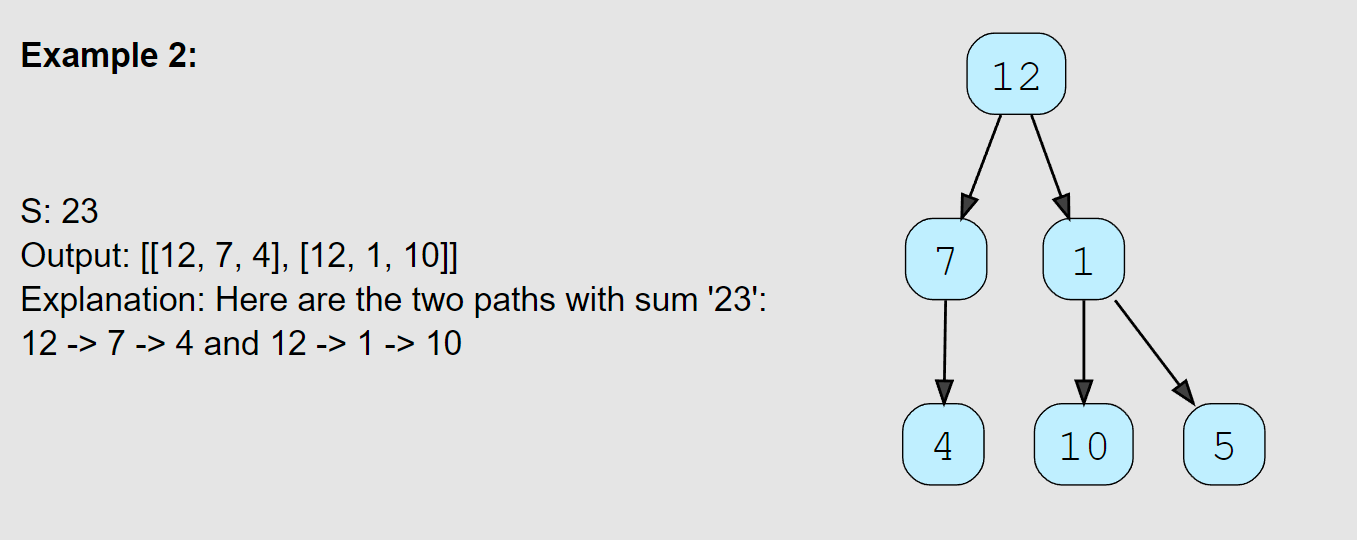
class TreeNode:
def __init__(self, value):
self.value = value
self.left = None
self.right = None
# O(n^2) Time - where n is the total number of nodes in the tree
# We traverse each node once (taking O(n)) and for every leaf node,
# we might store its path by making a copy of currentPath (taking O(n) too)
# O(n) Space worst case - where n is the total number of nodes in the tree that will be stored in the recursion stack
# Worst case is when the given tree is a linked list where every node has only one child
def findPaths(root, requiredSum):
allPaths = []
currentPath = []
findPathsRecursive(root, requiredSum, currentPath, allPaths)
return allPaths
def findPathsRecursive(currentNode, currentSum, currentPath, allPaths):
# 1: Base case for when we reach the branch end with None child nodes and leaf.value != sum
if currentNode is None:
return
# 2: Update currentPath array with currentNode.value for every node traversal
currentPath.append(currentNode.value)
# 3: If currentNode is a leaf node and leaf.value == currentSum,
# save the resulting currentPath list into our allPaths array!
if currentNode.value == currentSum and currentNode.left is None and currentNode.right is None:
allPaths.append(list(currentPath))
# 4: Calculate the currentSum remaining after trimming currentSum with currentNode.value
# This is so that when we reach the leaf, if leaf.value == currentSum, we found a path!
currentSum -= currentNode.value
# 5: If currentNode is NOT a leaf node, perform DFS recursion on child nodes and pass down all current information
findPathsRecursive(currentNode.left, currentSum, currentPath, allPaths)
findPathsRecursive(currentNode.right, currentSum, currentPath, allPaths)
# 6: Remove the currentNode.value from the path to backtrack as we go back up the recursive call stack!
currentPath.pop() # del currentPath[-1] also works!Given a binary tree where each node can only have a digit (0-9) value, each root-to-leaf path will represent a number. Find the total sum of all the numbers represented by all paths.
class TreeNode:
def __init__(self, value):
self.value = value
self.left = None
self.right = None
def findPathSum(root):
pathSum = 0
return findPathSumRecursive(root, pathSum)
# O(n) Time - where n is the total number of nodes in the tree
# We traverse each node once.
# O(n) Space worst case - where n is the total number of nodes in the tree that will be stored in the recursion stack
# Worst case is when the given tree is a linked list where every node has only one child
def findPathSumRecursive(currentNode, pathSum):
# 1: Base case for when we reach the branch end with None child nodes
if currentNode is None:
return 0
# 2: For each update to pathSum, we are adding the next digit!
# Hence, the currentNode.value will be appended as the LSB
# while 10 * pathSum will be shifted to be MSB
pathSum = 10 * pathSum + currentNode.value
# 3: If currentNode is a leaf node, return the branch pathSum
if currentNode.left is None and currentNode.right is None:
return pathSum
# 4: Sum all branchPathSums in both left and right subtrees
return findPathSumRecursive(currentNode.left, pathSum) + findPathSumRecursive(currentNode.right, pathSum)Given a binary tree and a number sequence, find if the sequence is present as a root-to-leaf path in the given tree.
class TreeNode:
def __init__(self, value):
self.value = value
self.left = None
self.right = None
def findPath(root, sequence):
sequenceIdx = 0
# EDGE: If treeNode is empty, return True if sequence is empty, else return False
if not root:
return len(sequence) == 0
return findPathRecursive(root, sequence, sequenceIdx)
# O(n) Time - where n is the total number of nodes in the tree
# We traverse each node once.
# O(n) Space worst case - where n is the total number of nodes in the tree that will be stored in the recursion stack
# Worst case is when the given tree is a linked list where every node has only one child
def findPathRecursive(currentNode, sequence, sequenceIdx):
# 1: Base case for when we reach the branch end with None child nodes
if currentNode is None:
return False
# 2: If sequenceIdx has moved and exceeded past sequenceLength
# or if there is a mismatch between currentNode.value and currentSequenceValue,
sequenceLength = len(sequence)
if sequenceIdx >= sequenceLength or currentNode.value != sequence[sequenceIdx]:
return False
# 3: If currentNode is a leaf node and sequenceIdx == sequenceLength - 1, return True
if currentNode.left is None and currentNode.right is None and sequenceIdx == sequenceLength - 1:
return True
# 4: If currentNode is NOT a leaf node, perform DFS recursion on child nodes
# and increment sequenceIdx to iterate the sequence array
return findPathRecursive(currentNode.left, sequence, sequenceIdx + 1) or findPathRecursive(currentNode.right, sequence, sequenceIdx + 1)Given a binary tree and a number ‘S’, find all paths in the tree such that the sum of all the node values of each path equals ‘S’. Please note that the paths can start or end at any node but all paths must follow direction from parent to child (top to bottom).
class TreeNode:
def __init__(self, value, left=None, right=None):
self.value = value
self.left = left
self.right = right
def countPaths(root, targetSum):
currentPath = []
return countPathsRecursive(root, targetSum, currentPath)
# Time Complexity: O(n^2) worst or O(nlogn) best - where n is the total number of nodes in the tree
# We traverse each node once, but for every node, we also iterate the currentPath.
# For a skewed tree, currentPath iterates at worst case O(n)
# For a balanced tree, currentPath iterates at best case O(log(n))
# Space Complexity: O(n) worst - where n is the total number of nodes in the tree that will be stored in the recursion stack
# Worst case is when the given tree is a linked list where every node has only one child
def countPathsRecursive(currentNode, targetSum, currentPath):
# 1: Base case for when we reach the branch end with None child nodes
if currentNode is None:
return 0
# 2: Append currentNode.value to currentPath[]
currentPath.append(currentNode.value)
pathCount, pathSum = 0, 0 # Initialise pathCount and pathSum
# 3: Find the sums of all subpaths in the currentPath[] so far
for idx in range(len(currentPath) - 1, -1, -1): # Iterate backwards!
pathSum += currentPath[idx]
# 4: If the sum of any subpath == targetSum, we found a path! so we increment pathCount
if pathSum == targetSum:
pathCount += 1
# 5: Perform recursive DFS on child nodes while passing down all current information
# Aggregate pathCount from all recursive calls in both left and right subtrees
pathCount += countPathsRecursive(currentNode.left, targetSum, currentPath)
pathCount += countPathsRecursive(currentNode.right, targetSum, currentPath)
# 6: Remove currentNode.value from currentPath[] to backtrack
# We need to remove currentNode.value while we are going up the recursive call stack
del currentPath[-1]
return pathCountGiven a binary tree, find the length of its diameter. The diameter of a tree is the number of nodes on the longest path between any two leaf nodes. The diameter of a tree may or may not pass through the root.
Note: You can always assume that there are at least two leaf nodes in the given tree.
class TreeNode:
def __init__(self, val, left=None, right=None):
self.val = val
self.left = left
self.right = right
class TreeDiameter:
def __init__(self):
self.treeDiameter = 0
def find_diameter(self, root):
self.calculate_height(root)
return self.treeDiameter
# O(n) Time - where n is the total number of nodes in the tree
# We traverse each node once.
# O(n) Space worst case - where n is the total number of nodes in the tree that will be stored in the recursion stack
# Worst case is when the given tree is a linked list where every node has only one child
def calculate_height(self, currentNode):
if currentNode is None:
return 0
leftTreeHeight = self.calculate_height(currentNode.left)
rightTreeHeight = self.calculate_height(currentNode.right)
# if the current node doesn't have a left or right subtree, we can't have
# a path passing through it, since we need a leaf node on each side
if leftTreeHeight is not None and rightTreeHeight is not None:
# diameter at the current node will be equal to the height of left subtree +
# the height of right sub-trees + '1' for the current node
diameter = leftTreeHeight + rightTreeHeight + 1
# update the global tree diameter
self.treeDiameter = max(self.treeDiameter, diameter)
# height of the current node will be equal to the maximum of the heights of
# left or right subtrees plus '1' for the current node
return max(leftTreeHeight, rightTreeHeight) + 1Find the path with the maximum sum in a given binary tree. Write a function that returns the maximum sum.
A path can be defined as a sequence of nodes between any two nodes and doesn’t necessarily pass through the root. The path must contain at least one node.
import math
class TreeNode:
def __init__(self, val, left=None, right=None):
self.val = val
self.left = left
self.right = right
class MaximumPathSum:
# O(n) Time - where n is the total number of nodes in the tree
# We traverse each node once.
# O(n) Space worst case - where n is the total number of nodes in the tree that will be stored in the recursion stack
# Worst case is when the given tree is a linked list where every node has only one child
def find_maximum_path_sum(self, root):
self.globalMaximumSum = -math.inf
self.find_maximum_path_sum_recursive(root)
return self.globalMaximumSum
def find_maximum_path_sum_recursive(self, currentNode):
if currentNode is None:
return 0
maxPathSumFromLeft = self.find_maximum_path_sum_recursive(
currentNode.left)
maxPathSumFromRight = self.find_maximum_path_sum_recursive(
currentNode.right)
# ignore paths with negative sums, since we need to find the maximum sum we should
# ignore any path which has an overall negative sum.
maxPathSumFromLeft = max(maxPathSumFromLeft, 0)
maxPathSumFromRight = max(maxPathSumFromRight, 0)
# maximum path sum at the current node will be equal to the sum from the left subtree +
# the sum from right subtree + val of current node
localMaximumSum = maxPathSumFromLeft + maxPathSumFromRight + currentNode.val
# update the global maximum sum
self.globalMaximumSum = max(self.globalMaximumSum, localMaximumSum)
# maximum sum of any path from the current node will be equal to the maximum of
# the sums from left or right subtrees plus the value of the current node
return max(maxPathSumFromLeft, maxPathSumFromRight) + currentNode.val
# Alternative Solution
def maxPathSum(root):
result = [root.value]
# Return max path sum without split
def maxPathSumRecursive(root):
if root is None:
return 0
leftMax = maxPathSumRecursive(root.left)
rightMax = maxPathSumRecursive(root.right)
leftMax = max(leftMax, 0)
rightMax = max(rightMax, 0)
# Compute max path sum with split
result[0] = max(result[0], root.value + leftMax + rightMax)
return root.value + max(leftMax, rightMax)
maxPathSumRecursive(root)
return result[0]from collections import deque
# 1: Base edge case to break the depth first search when we have arrived None child nodes of the leaf node
if node is None:
return
# 2: Initialise a queue with root node
queue = deque()
queue.append(root)
# 3: Iterate all elements of the queue in FIFO order
while len(queue) > 0:
levelSize = len(queue)
for _ in range(levelSize):
currentNode = queue.popleft() # Pop the bottom-most element
currentLevel.append(currentNode.value)
# 4: Perform forwardtracking computations
doSomething()
# 5: Push child nodes to queue to traverse down the tree
if currentNode.left is not None: # if currentNode.left
queue.append(currentNode.left)
if currentNode.right is not None: # if currentNode.right
queue.append(currentNode.right)
result.append(computedResult)Given a binary tree, populate an array to represent its level-by-level traversal. You should populate the values of all nodes of each level from left to right in separate sub-arrays.
from collections import deque
class TreeNode:
def __init__(self, value, left=None, right=None):
self.value = value
self.left = left
self.right = right
# O(n) Time - where n is the total number of nodes in the tree
# We traverse each node once.
# O(n) Space worst case - where n is the total number of nodes in the tree
# We need to return a list containing the level order traversal
# We also need O(n) for the queue. We can have a max of n/2 nodes at any level (at the lowest level of BT)
def traverse(root):
result = []
# 1: Base case for when we reach the branch end with None child nodes
if root is None:
return result
# 2: Instantiate the deque() for O(1) insertion on both sides of array
queue = deque()
# 3: Start by pushing the root node to the queue
queue.append(root)
# 4: Keep iterating until the queue is empty
while len(queue) > 0: # while queue
levelSize = len(queue)
currentLevel = []
# 5: For each iteration, firstly, count the elements in the queue (levelSize)
# We will have these many nodes in the current level
for _ in range(levelSize):
# 6: Remove levelSize nodes from the queue and push their node.value into an array to represent current level
currentNode = queue.popleft()
currentLevel.append(currentNode.value)
# 7: After popping node from the queue, insert both of its children into the queue
if currentNode.left is not None: # if currentNode.left
queue.append(currentNode.left)
if currentNode.right is not None: # if currentNode.right
queue.append(currentNode.right)
# 8: After fully traversing the current level, store currentLevel results
result.append(currentLevel)
# 9: # If the queue is not empty, repeat from Step 5 to traverse the next level
return resultGiven a binary tree, populate an array to represent its level-by-level traversal in reverse order, i.e., the lowest level comes first. You should populate the values of all nodes in each level from left to right in separate sub-arrays.
from collections import deque
class TreeNode:
def __init__(self, value, left=None, right=None):
self.value = value
self.left = left
self.right = right
# O(n) Time - where n is the total number of nodes in the tree
# We traverse each node once.
# O(n) Space worst case - where n is the total number of nodes in the tree
# We need to return a list containing the level order traversal
# We also need O(n) for the queue. We can have a max of n/2 nodes at any level (at the lowest level of BT)
def traverse(root):
result = deque() # To enable .appendleft method
# 1: Base case for when we reach the branch end with None child nodes
if root is None:
return result
# 2: Instantiate the deque() for O(1) insertion on both sides of array
queue = deque()
# 3: Start by pushing the root node to the queue
queue.append(root)
# 4: Keep iterating until the queue is empty
while len(queue) > 0: # while queue
levelSize = len(queue)
currentLevel = []
# 5: Traverse every node in the current level
for _ in range(levelSize):
# 6: Remove levelSize nodes from the queue and push their node.value into an array to represent current level
currentNode = queue.popleft()
currentLevel.append(currentNode.value)
# 7: After popping node from the queue, insert both of its children into the queue
if currentNode.left is not None: # if currentNode.left
queue.append(currentNode.left)
if currentNode.right is not None: # if currentNode.right
queue.append(currentNode.right)
# 8: After fully traversing the current level, store currentLevel results
# # Appending each level from the left will store levels from the lowest to highest of BT
result.appendleft(currentLevel)
# 9: If the queue is not empty, repeat from Step 5 to traverse the next level
return list(result)Given a binary tree, populate an array to represent its zigzag level order traversal. You should populate the values of all nodes of the first level from left to right, then right to left for the next level and keep alternating in the same manner for the following levels.
from collections import deque
class TreeNode:
def __init__(self, value, left=None, right=None):
self.value = value
self.left = left
self.right = right
# O(n) Time - where n is the total number of nodes in the tree
# We traverse each node once.
# O(n) Space worst case - where n is the total number of nodes in the tree
# We need to return a list containing the level order traversal
# We also need O(n) for the queue. We can have a max of n/2 nodes at any level (at the lowest level of BT)
def traverse(root):
result = []
# 1: Base case for when we reach the branch end with None child nodes
if root is None:
return result
# 2: Instantiate the deque() for O(1) insertion on both sides of array
queue = deque()
# 3: Start by pushing the root node to the queue
queue.append(root)
leftToRight = True
# 4: Keep iterating until the queue is empty
while len(queue) > 0: # while queue
levelSize = len(queue)
currentLevel = deque() # To enable .appendleft method
# 5: Traverse every node in the current level
for _ in range(levelSize):
# 6: Remove levelSize nodes from the queue and push their node.value into an array to represent current level
currentNode = queue.popleft()
if leftToRight:
currentLevel.append(currentNode.value)
else:
currentLevel.appendleft(currentNode.value)
# 7: After popping node from the queue, insert both of its children into the queue
if currentNode.left is not None: # if currentNode.left
queue.append(currentNode.left)
if currentNode.right is not None: # if currentNode.right
queue.append(currentNode.right)
# 8: After fully traversing the current level, store currentLevel results
result.append(list(currentLevel)) # Convert .deque() object to list
leftToRight = not leftToRight
# 9: # If the queue is not empty, repeat from Step 5 to traverse the next level
return resultGiven a binary tree, populate an array to represent the averages of all of its levels.
from collections import deque
class TreeNode:
def __init__(self, value, left=None, right=None):
self.value = value
self.left = left
self.right = right
# O(n) Time - where n is the total number of nodes in the tree
# We traverse each node once.
# O(n) Space worst case - where n is the total number of nodes in the tree
# We need to return a list containing the level order traversal
# We also need O(n) for the queue. We can have a max of n/2 nodes at any level (at the lowest level of BT)
def findLevelAverages(root):
result = []
# 1: Base case for when we reach the branch end with None child nodes
if root is None:
return result
# 2: Instantiate the deque() for O(1) insertion on both sides of array
queue = deque()
# 3: Start by pushing the root node to the queue
queue.append(root)
# 4: Keep iterating until the queue is empty
while len(queue) > 0: # while queue
levelSize = len(queue)
levelSum = 0.0 # Initalise float type for level averages
# 5: Traverse every node in the current level
for _ in range(levelSize):
# 6: Remove levelSize nodes from the queue and push their node.value into an array to represent current level
currentNode = queue.popleft()
# 7: Add the currentNode.value to the running sum for each level
levelSum += currentNode.value
# 8: After popping node from the queue, insert both of its children into the queue
if currentNode.left is not None: # if currentNode.left
queue.append(currentNode.left)
if currentNode.right is not None: # if currentNode.right
queue.append(currentNode.right)
# 9: After fully traversing the current level, append the current level's average to result
result.append(levelSum / levelSize)
# 10: # If the queue is not empty, repeat from Step 5 to traverse the next level
return resultGiven a binary tree, populate an array to represent the max values of all of its levels.
from collections import deque
class TreeNode:
def __init__(self, value, left=None, right=None):
self.value = value
self.left = left
self.right = right
# O(n) Time - where n is the total number of nodes in the tree
# We traverse each node once.
# O(n) Space worst case - where n is the total number of nodes in the tree
# We need to return a list containing the level order traversal
# We also need O(n) for the queue. We can have a max of n/2 nodes at any level (at the lowest level of BT)
def findMaxValues(root):
result = []
# 1: Base case for when we reach the branch end with None child nodes
if root is None:
return result
# 2: Instantiate the deque() for O(1) insertion on both sides of array
queue = deque()
# 3: Start by pushing the root node to the queue
queue.append(root)
# 4: Keep iterating until the queue is empty
while len(queue) > 0: # while queue
levelSize = len(queue)
maxValue = 0
# 5: Traverse every node in the current level
for _ in range(levelSize):
# 6: Remove levelSize nodes from the queue and push their node.value into an array to represent current level
currentNode = queue.popleft()
# 7: Add the max value so far
maxValue = max(maxValue, currentNode.value)
# 8: After popping node from the queue, insert both of its children into the queue
if currentNode.left is not None: # if currentNode.left
queue.append(currentNode.left)
if currentNode.right is not None: # if currentNode.right
queue.append(currentNode.right)
# 9: After fully traversing the current level, append the current level's max to result
result.append(maxValue)
# 10: # If the queue is not empty, repeat from Step 5 to traverse the next level
return resultFind the minimum depth of a binary tree. The minimum depth is the number of nodes along the shortest path from the root node to the nearest leaf node.
from collections import deque
class TreeNode:
def __init__(self, value, left=None, right=None):
self.value = value
self.left = left
self.right = right
# O(n) Time - where n is the total number of nodes in the tree
# We traverse each node once.
# O(n) Space worst case - where n is the total number of nodes in the tree
# We need to return a list containing the level order traversal
# We also need O(n) for the queue. We can have a max of n/2 nodes at any level (at the lowest level of BT)
def findMinimumDepth(root):
# 1: Base case for when we reach the branch end with None child nodes
if root is None:
return 0
# 2: Instantiate the deque() for O(1) insertion on both sides of array
queue = deque()
# 3: Start by pushing the root node to the queue
queue.append(root)
minimumDepth = 0
# 4: Keep iterating until the queue is empty
while len(queue) > 0: # while queue
levelSize = len(queue)
# 5: Increment minimumDepth for every level traversal
minimumDepth += 1
# 6: Traverse every node in the current level
for _ in range(levelSize):
# 7: Remove levelSize nodes from the queue and push their node.value into an array to represent current level
currentNode = queue.popleft()
# 8: If currentNode is a leaf, return the result immediately for shortest depth
if not currentNode.left and not currentNode.right:
return minimumDepth
# 9: After popping node from the queue, insert both of its children into the queue
if currentNode.left is not None: # if currentNode.left
queue.append(currentNode.left)
if currentNode.right is not None: # if currentNode.right
queue.append(currentNode.right)
# 10: # If the queue is not empty, repeat from Step 5 to traverse the next levelFind the minimum depth of a binary tree. The minimum depth is the number of nodes along the shortest path from the root node to the nearest leaf node.
from collections import deque
class TreeNode:
def __init__(self, value, left=None, right=None):
self.value = value
self.left = left
self.right = right
# O(n) Time - where n is the total number of nodes in the tree
# We traverse each node once.
# O(n) Space worst case - where n is the total number of nodes in the tree
# We need to return a list containing the level order traversal
# We also need O(n) for the queue. We can have a max of n/2 nodes at any level (at the lowest level of BT)
def findMaximumDepth(root):
# 1: Base case for when we reach the branch end with None child nodes
if root is None:
return 0
# 2: Instantiate the deque() for O(1) insertion on both sides of array
queue = deque()
# 3: Start by pushing the root node to the queue
queue.append(root)
maximumDepth = 0
# 4: Keep iterating until the queue is empty
while len(queue) > 0: # while queue
levelSize = len(queue)
# 5: Increment maximumDepth for every level traversal
maximumDepth += 1
# 6: Traverse every node in the current level
for _ in range(levelSize):
# 7: Remove levelSize nodes from the queue and push their node.value into an array to represent current level
currentNode = queue.popleft()
# 9: After popping node from the queue, insert both of its children into the queue
if currentNode.left is not None: # if currentNode.left
queue.append(currentNode.left)
if currentNode.right is not None: # if currentNode.right
queue.append(currentNode.right)
# 10: # If the queue is not empty, repeat from Step 5 to traverse the next level
return maximumDepthGiven a binary tree and a node, find the level order successor of the given node in the tree. The level order successor is the node that appears right after the given node in the level order traversal.
from collections import deque
class TreeNode:
def __init__(self, value, left=None, right=None):
self.value = value
self.left = left
self.right = right
# O(n) Time - where n is the total number of nodes in the tree
# We traverse each node once.
# O(n) Space worst case - where n is the total number of nodes in the tree
# We need to return a list containing the level order traversal
# We also need O(n) for the queue. We can have a max of n/2 nodes at any level (at the lowest level of BT)
def findSuccessor(root, key):
if root is None:
return None
queue = deque()
queue.append(root)
while len(queue) > 0:
currentNode = queue.popleft()
# We will not keep track of all the levels.
# Instead we will keep inserting child nodes to the queue.
if currentNode.left is not None:
queue.append(currentNode.left)
if currentNode.right is not None:
queue.append(currentNode.right)
# As soon as we find the given node, we will return the next node from the queue as the level order successor.
if currentNode.value == key:
break
return queue[0] if queue else NoneGiven a binary tree, connect each node with its level order successor. The last node of each level should point to a null node.
from collections import deque
class TreeNode:
def __init__(self, value, left=None, right=None, next=None):
self.value = value
self.left = left
self.right = right
self.next = next
def printLevelOrder(self):
nextLevelRoot = self
while nextLevelRoot is not None:
currentNode = nextLevelRoot
nextLevelRoot = None
while currentNode is not None:
print(f'{str(currentNode.value)} ', end='')
if not nextLevelRoot:
if currentNode.left is not None:
nextLevelRoot = currentNode.left
elif currentNode.right is not None:
nextLevelRoot = currentNode.right
currentNode = currentNode.next
print()
# O(n) Time - where n is the total number of nodes in the tree
# We traverse each node once.
# O(n) Space worst case - where n is the total number of nodes in the tree
# We need to return a list containing the level order traversal
# We also need O(n) for the queue. We can have a max of n/2 nodes at any level (at the lowest level of BT)
def connectLevelOrderSiblings(root):
# 1: Base case for when we reach the branch end with None child nodes
if root is None:
return
# 2: Instantiate the deque() for O(1) insertion on both sides of array
queue = deque()
queue.append(root) # 3: Start by pushing the root node to the queue
# 4: Keep iterating until the queue is empty
while len(queue) > 0:
previousNode = None
levelSize = len(queue)
# 5: Traverse every node in the current level and connect all nodes of this level
for _ in range(levelSize):
currentNode = queue.popleft()
# 6: Store the previousNode to connect it with the currentNode
if previousNode is not None:
previousNode.next = currentNode
previousNode = currentNode
# 7: After popping node from the queue, insert both of its children into the queue
if currentNode.left is not None:
queue.append(currentNode.left)
if currentNode.right is not None:
queue.append(currentNode.right)Given a binary tree, connect each node with its level order successor. The last node of each level should point to the first node of the next level.
from collections import deque
class TreeNode:
def __init__(self, value):
self.value = value
self.left, self.right, self.next = None, None, None
# tree traversal using 'next' pointer
def printTree(self):
print("Traversal using 'next' pointer: ", end='')
current = self
while current:
print(str(current.value) + " ", end='')
current = current.next
# O(n) Time - where n is the total number of nodes in the tree
# We traverse each node once.
# O(n) Space worst case - where n is the total number of nodes in the tree
# We need to return a list containing the level order traversal
# We also need O(n) for the queue. We can have a max of n/2 nodes at any level (at the lowest level of BT)
def connectAllSiblings(root):
# 1: Base case for when we reach the branch end with None child nodes
if root is None:
return
# 2: Instantiate the deque() for O(1) insertion on both sides of array
queue = deque()
queue.append(root) # 3: Start by pushing the root node to the queue
currentNode, previousNode = None, None
# 4: Keep iterating until the queue is empty
while len(queue) > 0:
currentNode = queue.popleft()
# 5: Store the previousNode to connect it with the currentNode
if previousNode is not None:
previousNode.next = currentNode
previousNode = currentNode
# 6: After popping node from the queue, insert both of its children into the queue
if currentNode.left is not None:
queue.append(currentNode.left)
if currentNode.right is not None:
queue.append(currentNode.right)Given a binary tree, return an array containing nodes in its right view. The right view of a binary tree is the set of nodes visible when the tree is seen from the right side.
from collections import deque
class TreeNode:
def __init__(self, value, left=None, right=None):
self.value = value
self.left = left
self.right = right
# O(n) Time - where n is the total number of nodes in the tree
# We traverse each node once.
# O(n) Space worst case - where n is the total number of nodes in the tree
# We need to return a list containing the level order traversal
# We also need O(n) for the queue. We can have a max of n/2 nodes at any level (at the lowest level of BT)
def treeRightView(root):
result = []
# 1: Base case for when we reach the branch end with None child nodes
if root is None:
return
# 2: Instantiate the deque() for O(1) insertion on both sides of array
queue = deque()
queue.append(root) # 3: Start by pushing the root node to the queue
# 4: Keep iterating until the queue is empty
while len(queue) > 0:
levelSize = len(queue)
# 5: Traverse every node in the current level and connect all nodes of this level
for idx in range(levelSize):
currentNode = queue.popleft()
# 6: If currentNode is the last node of this level, append to result
if idx == levelSize - 1:
result.append(currentNode)
# 7: After popping node from the queue, insert both of its children into the queue
if currentNode.left is not None:
queue.append(currentNode.left)
if currentNode.right is not None:
queue.append(currentNode.right)
return result
